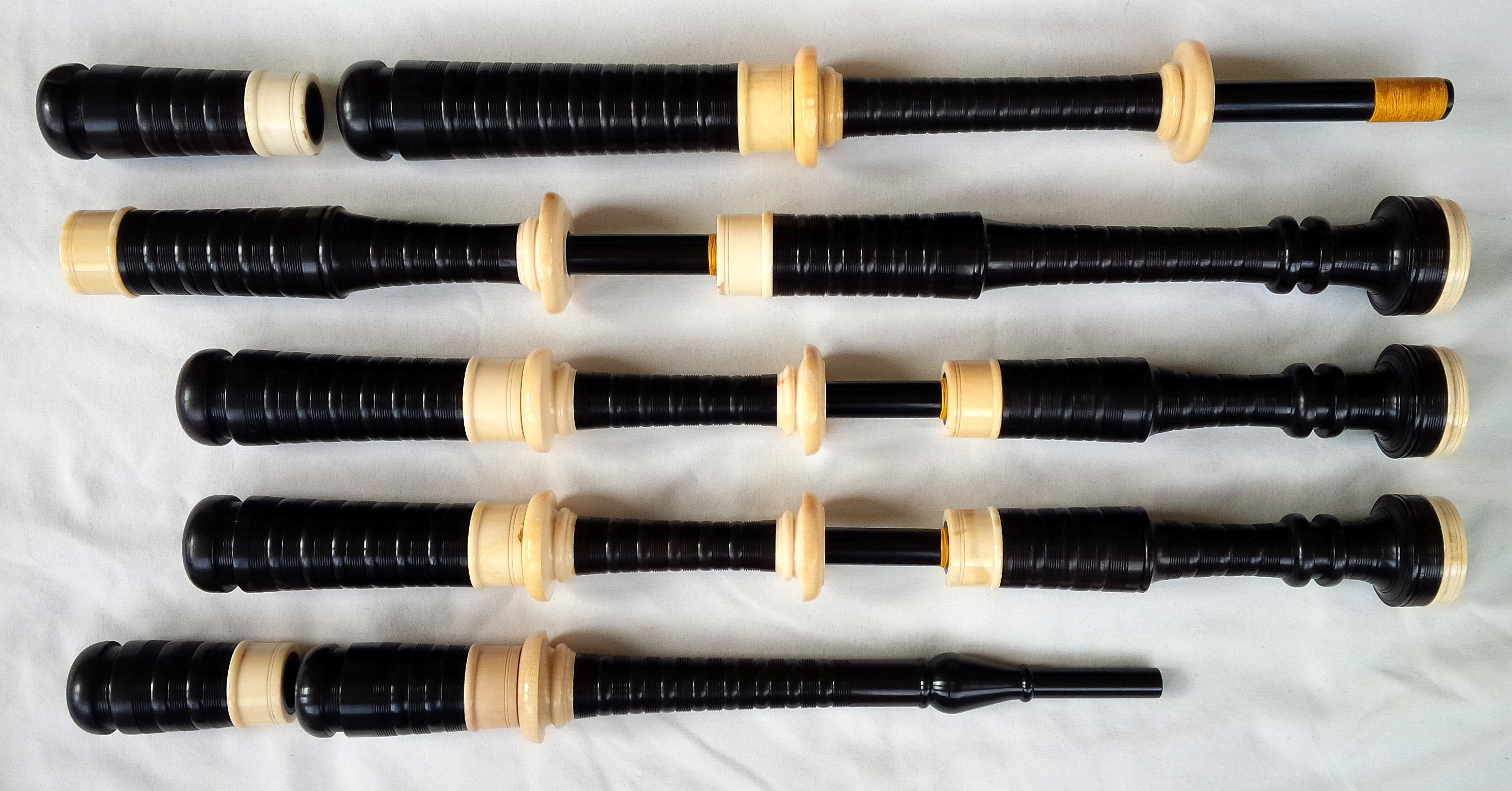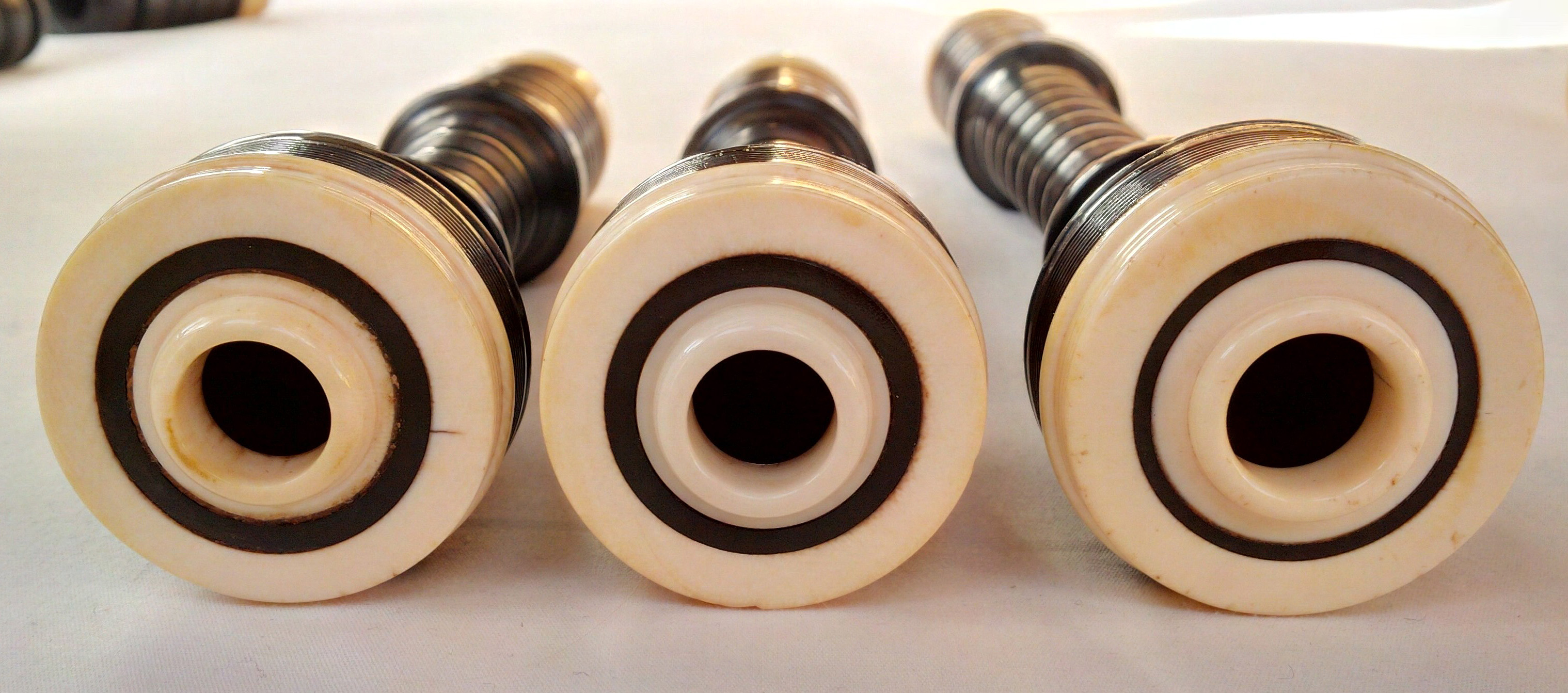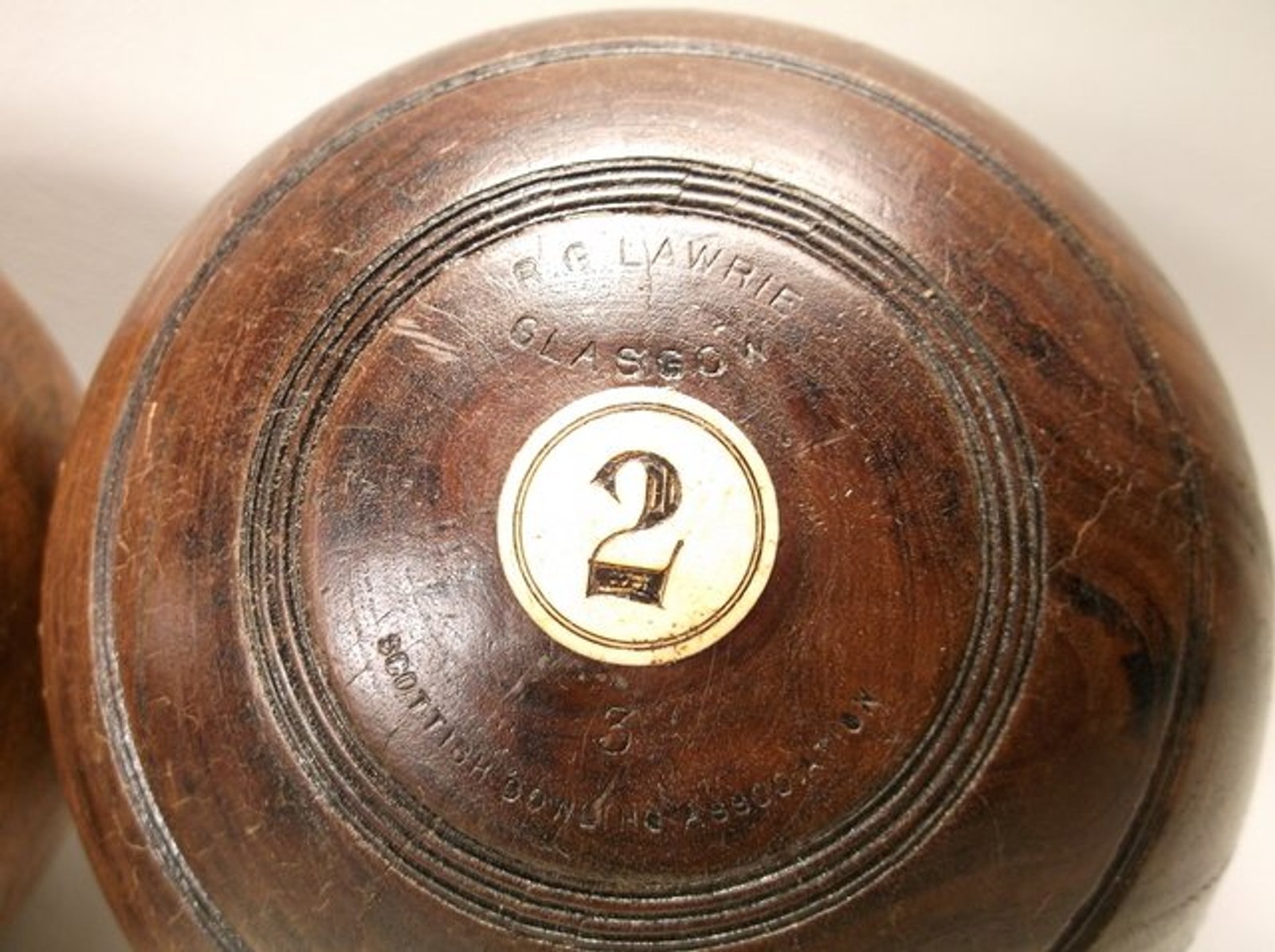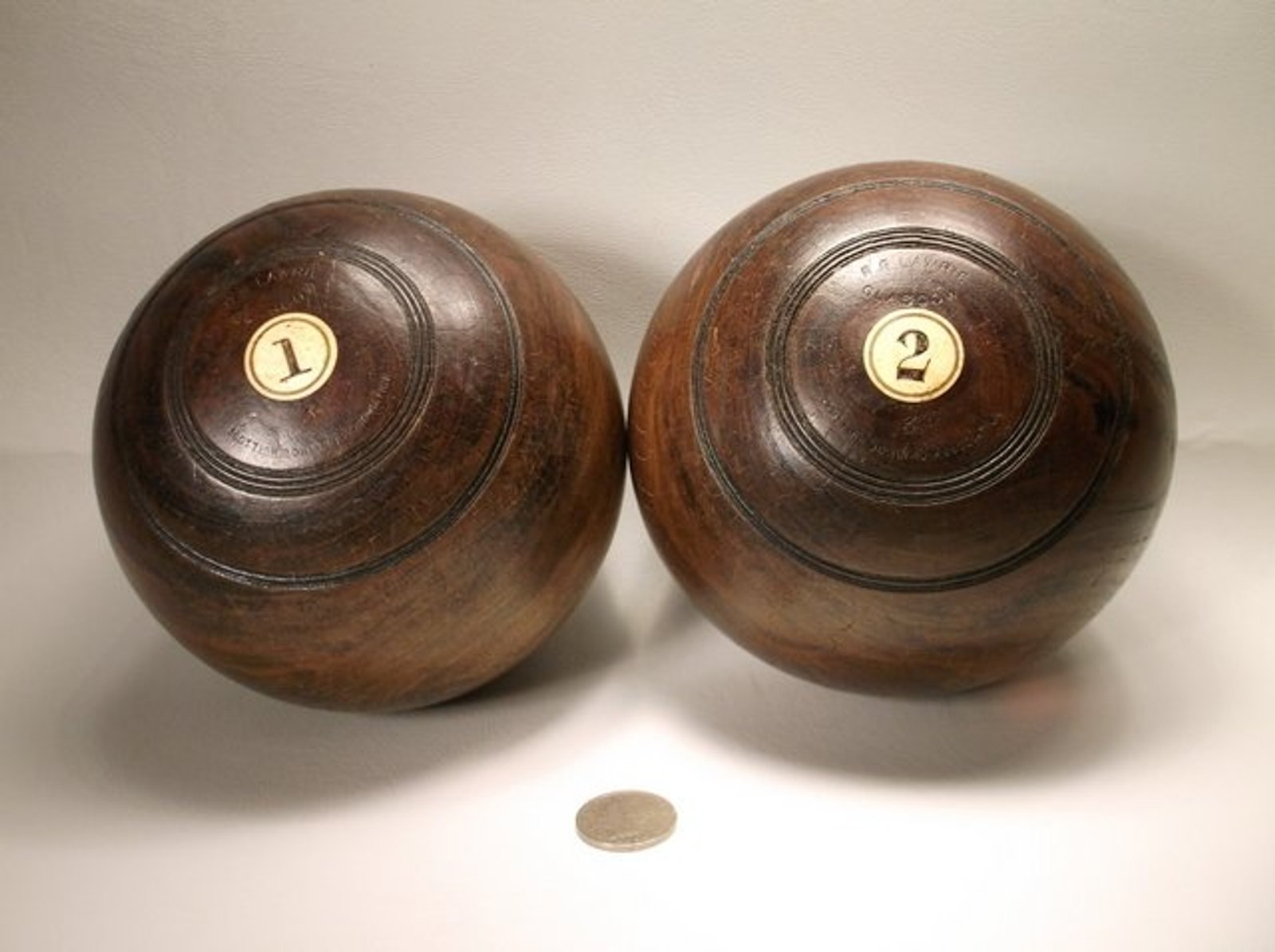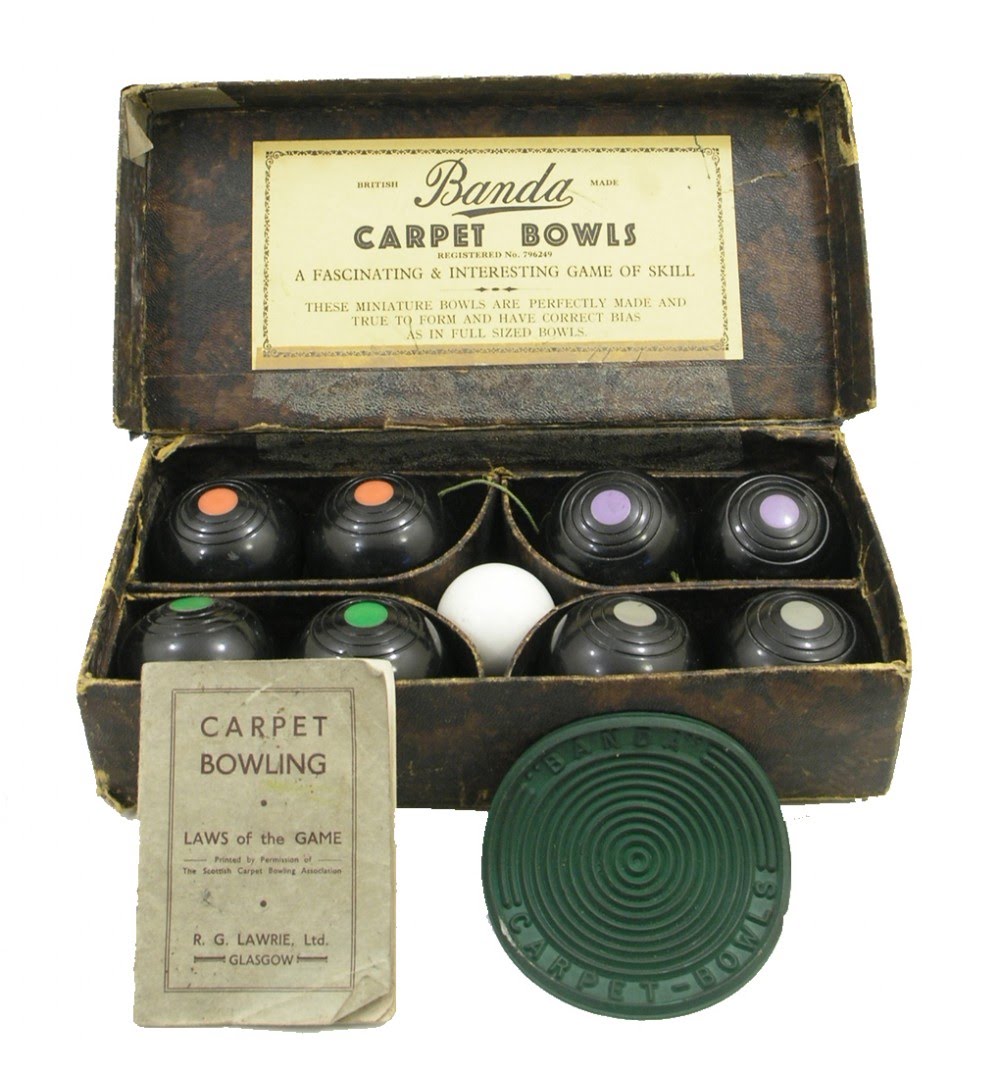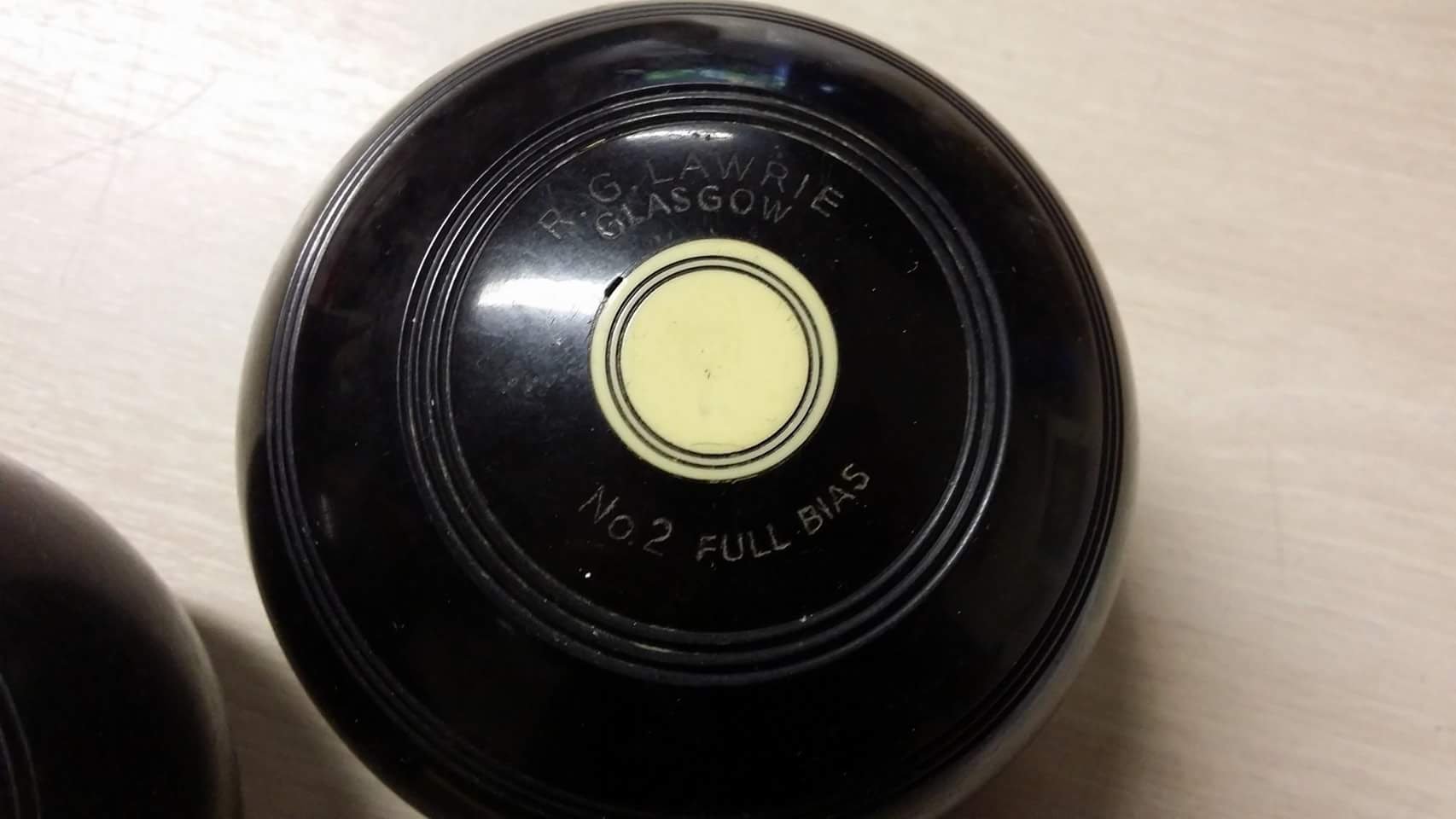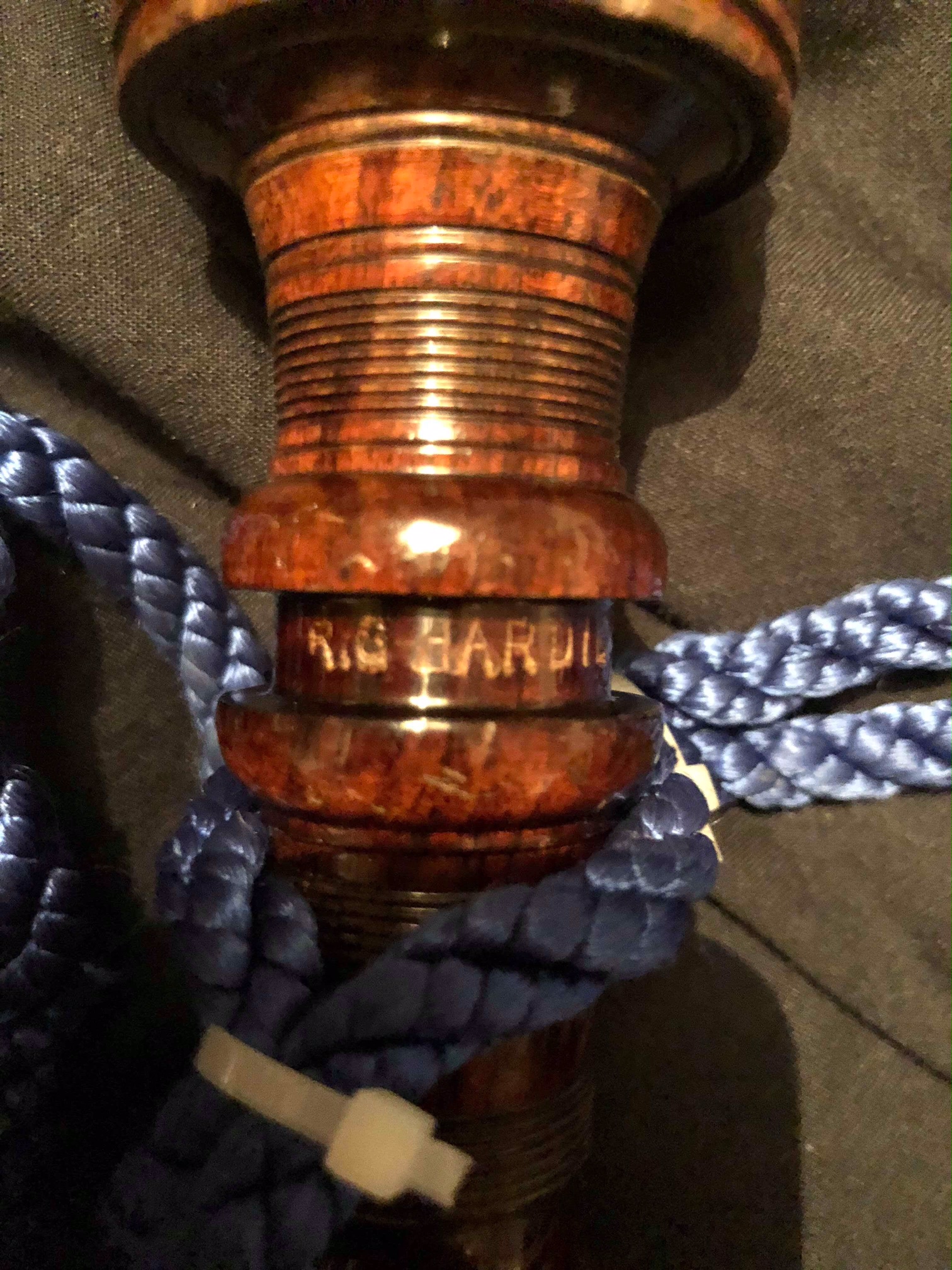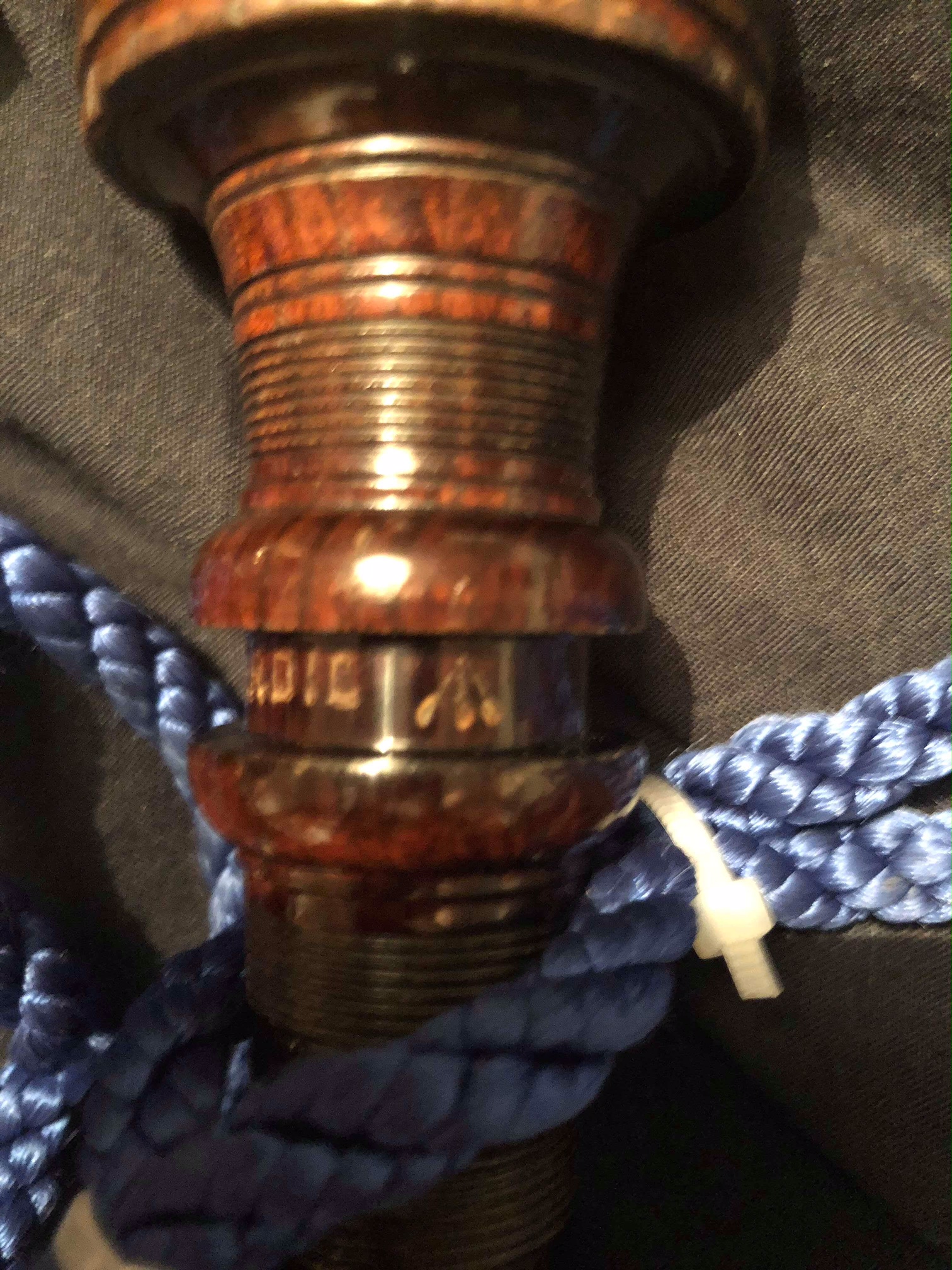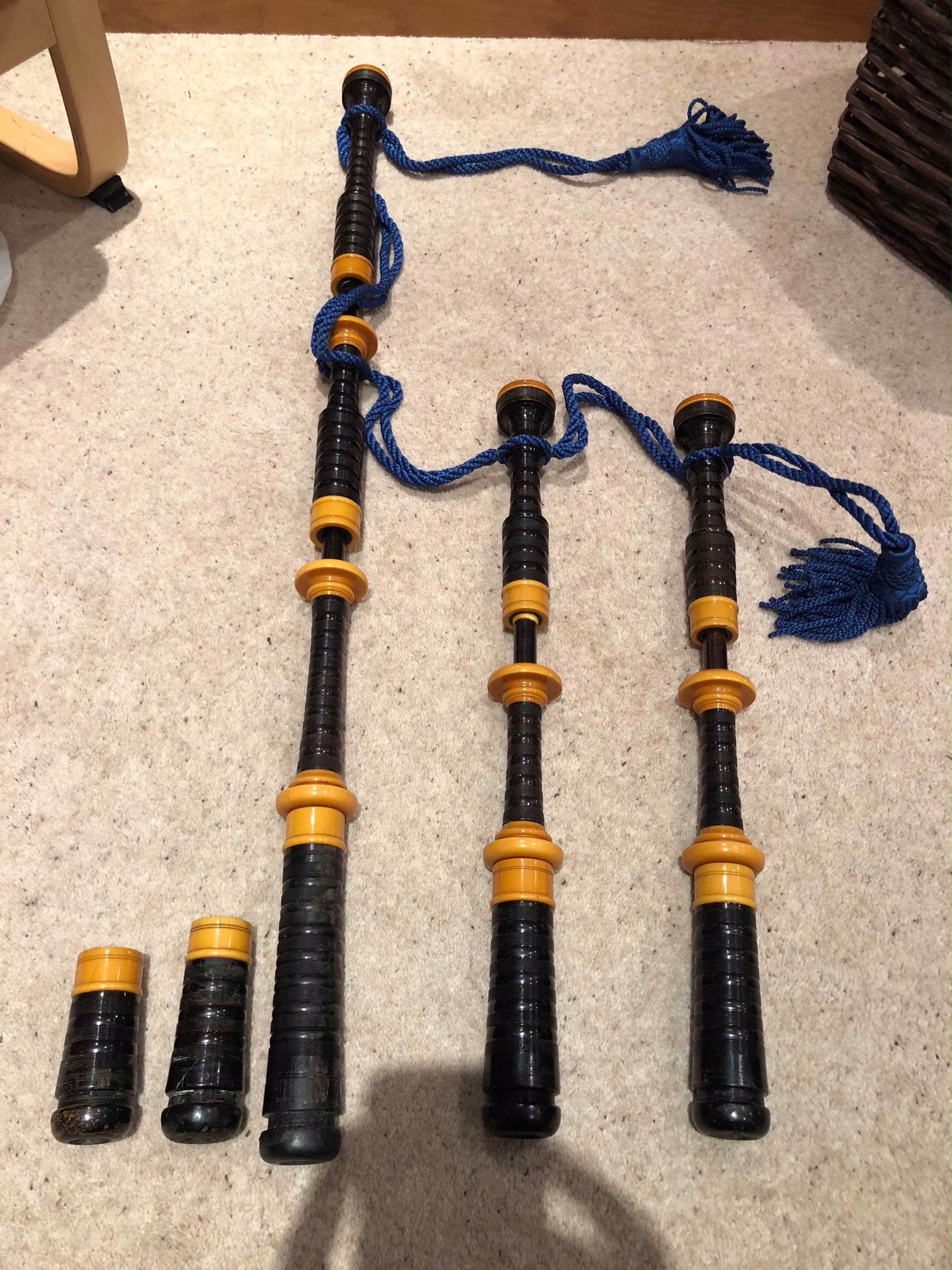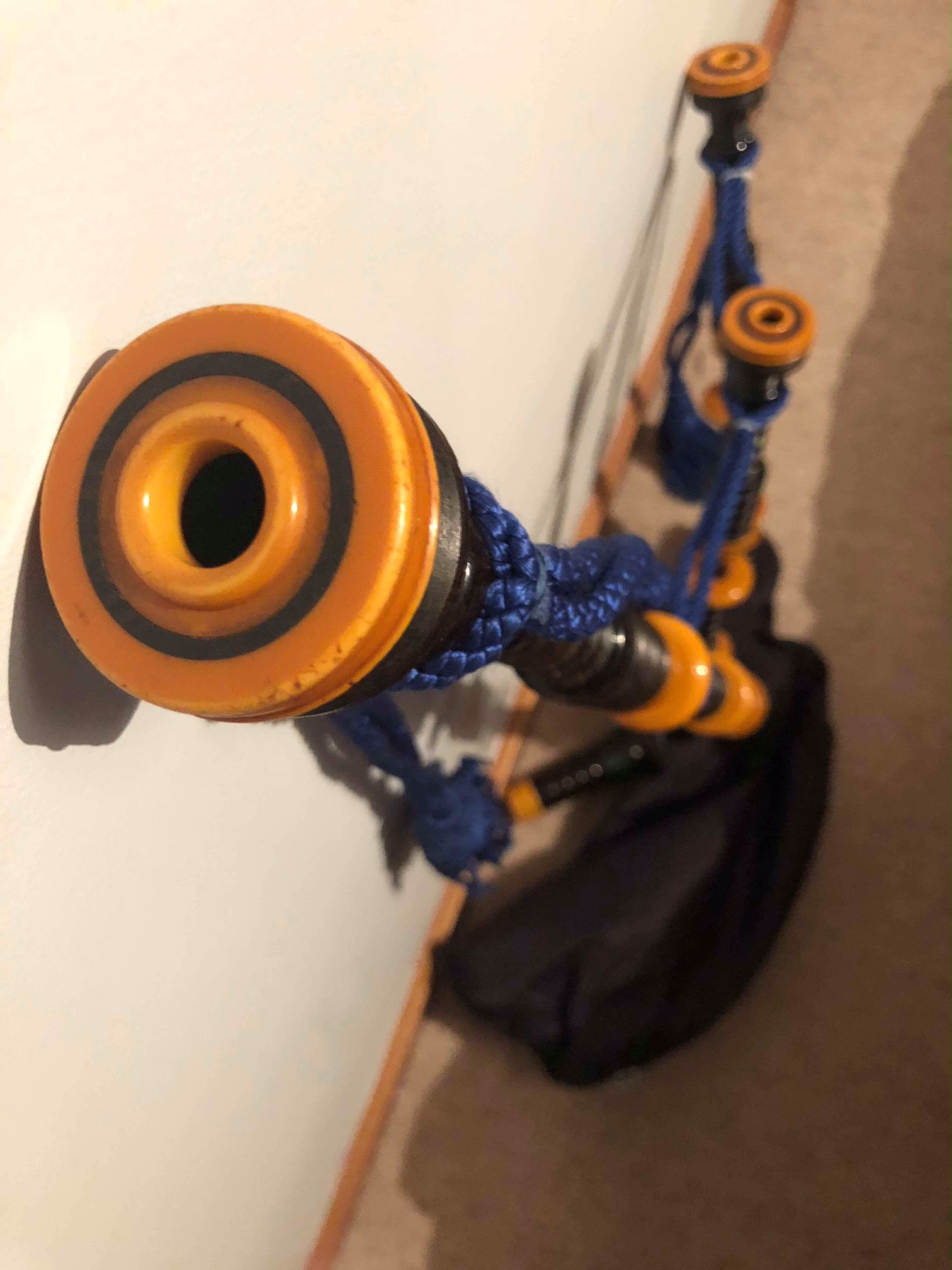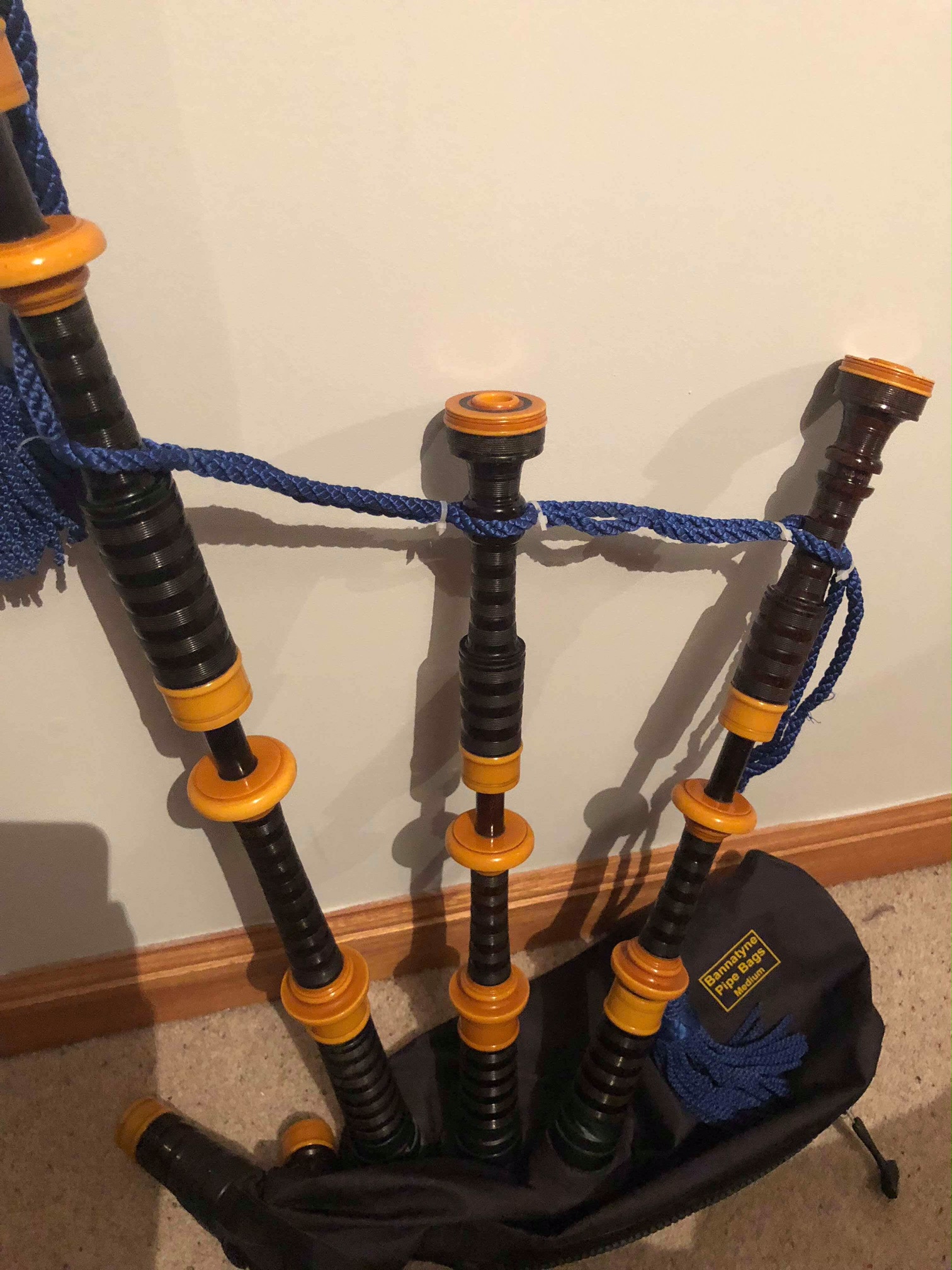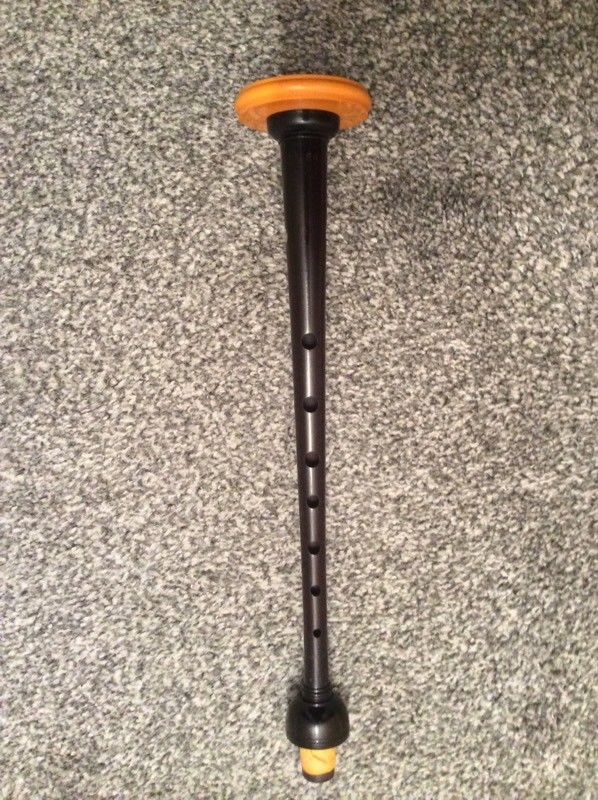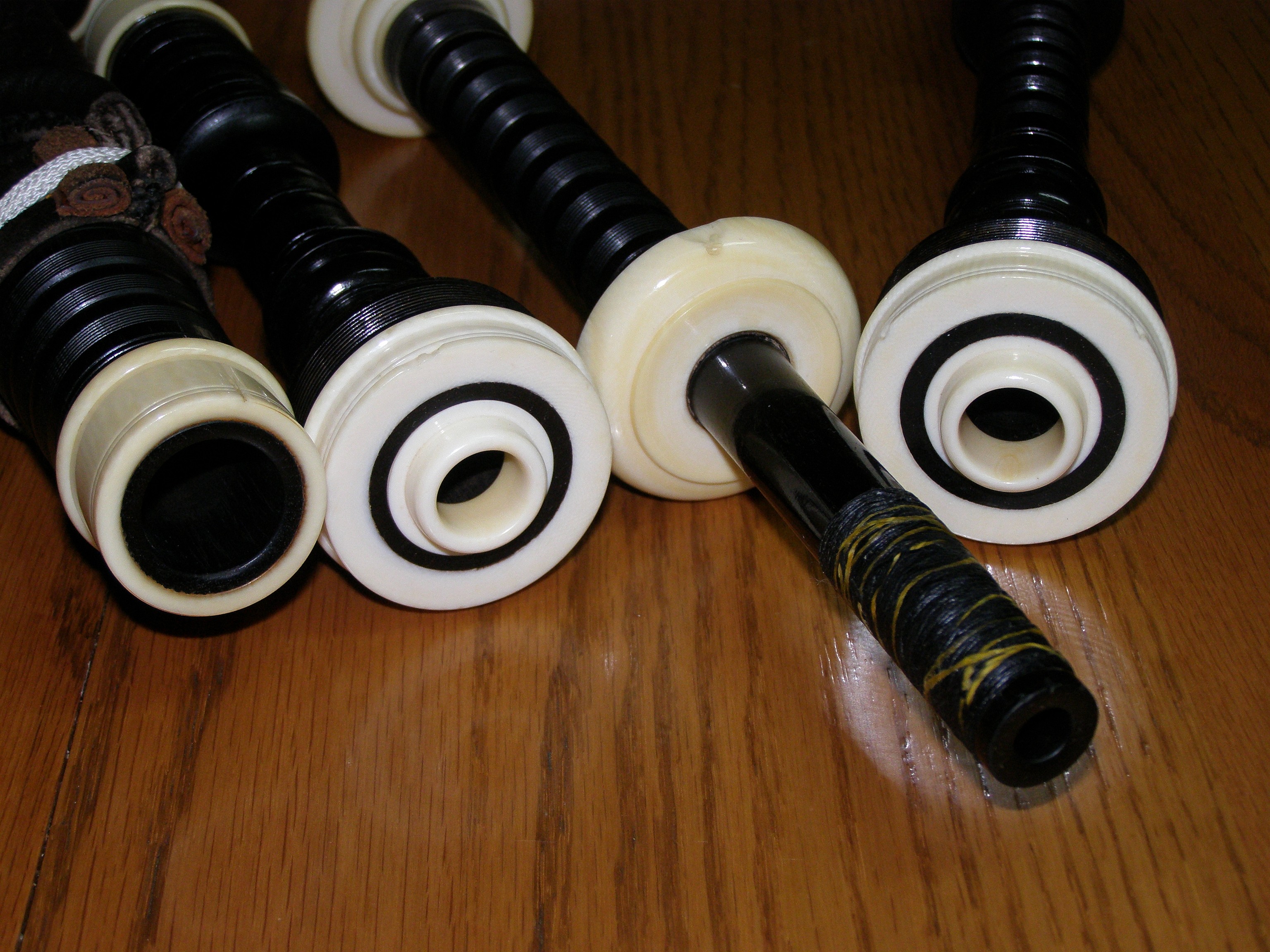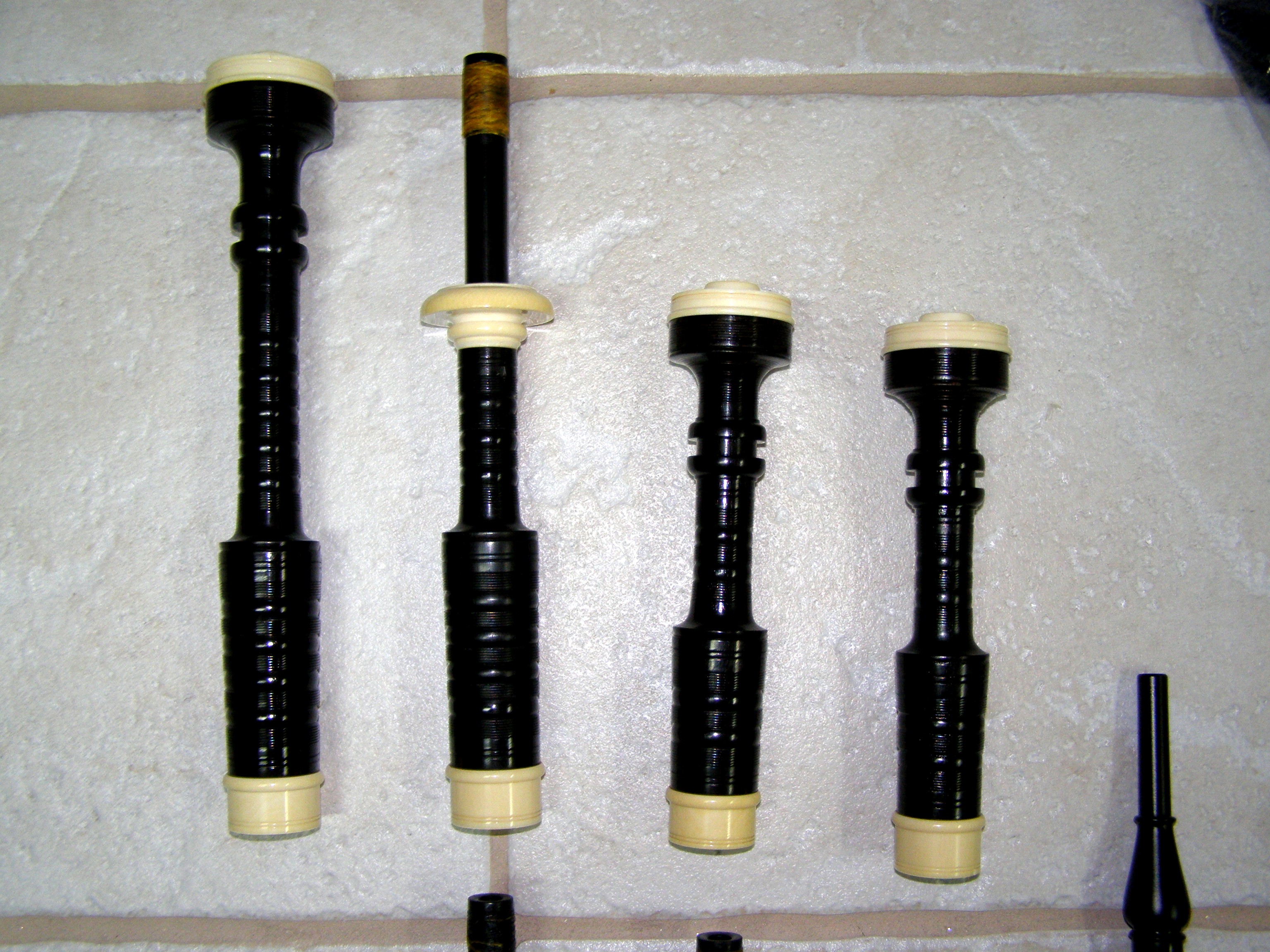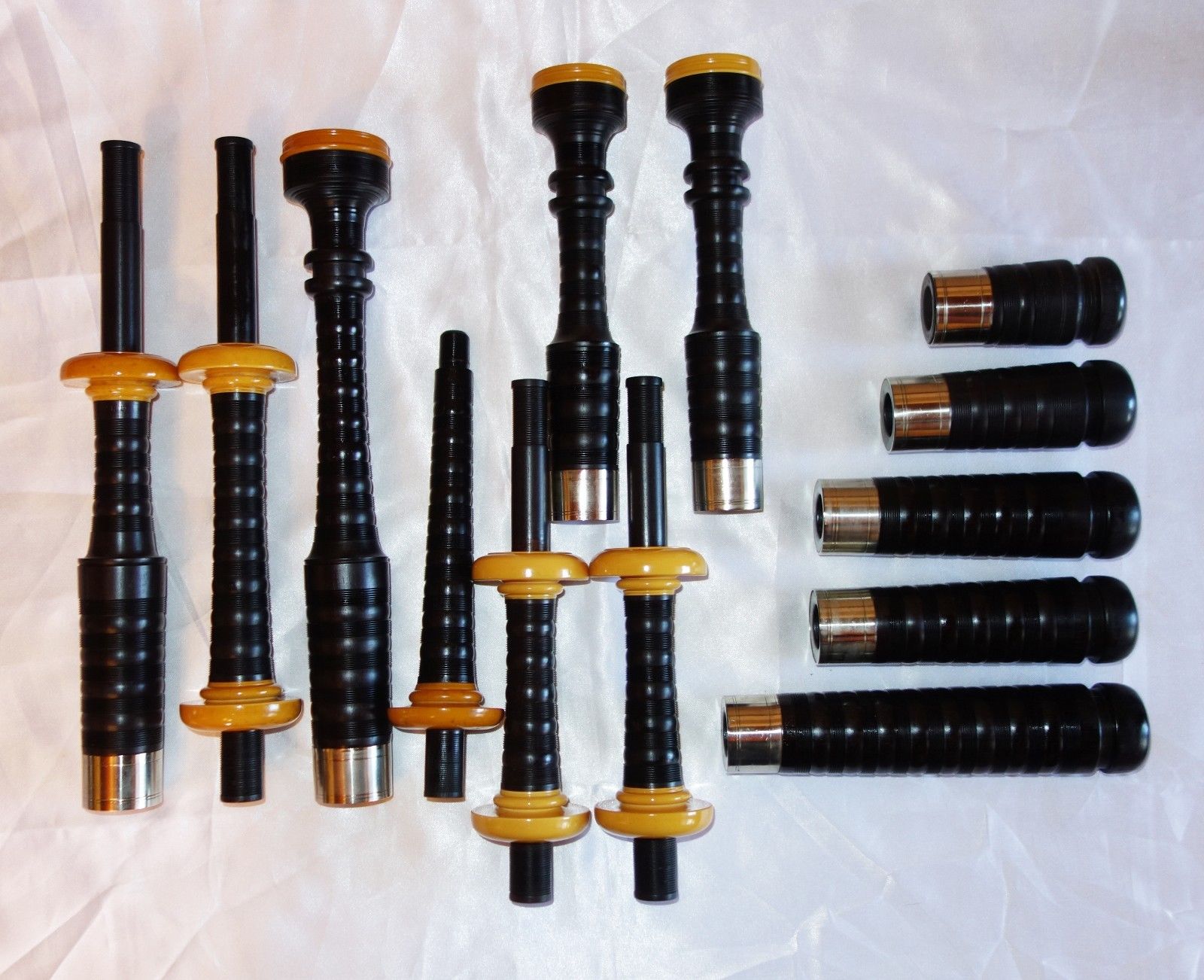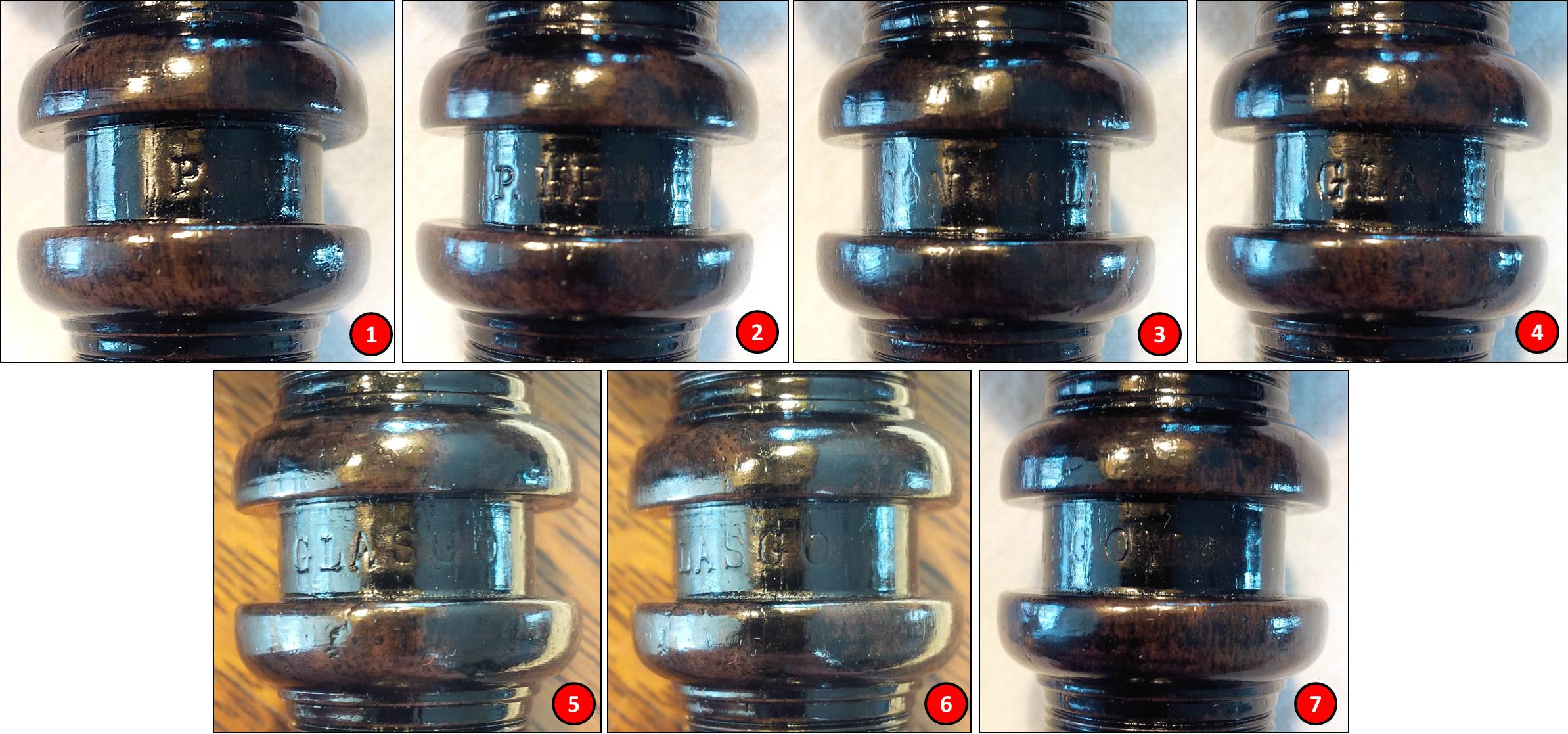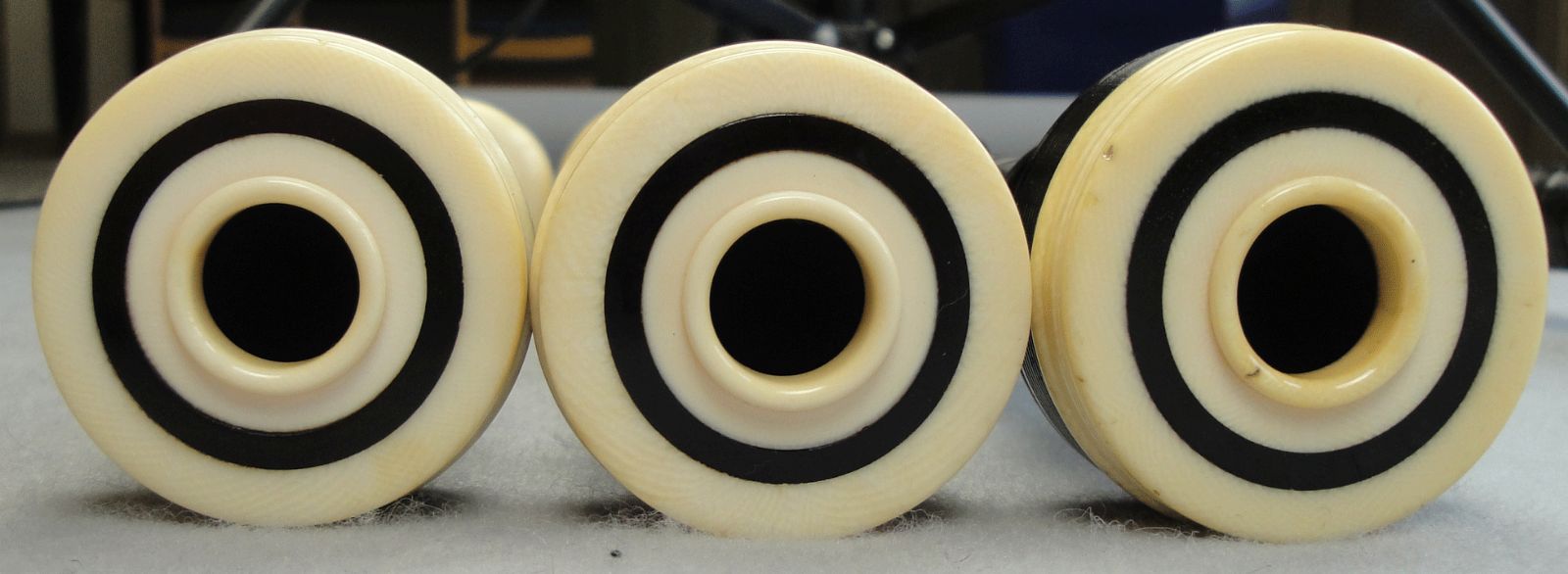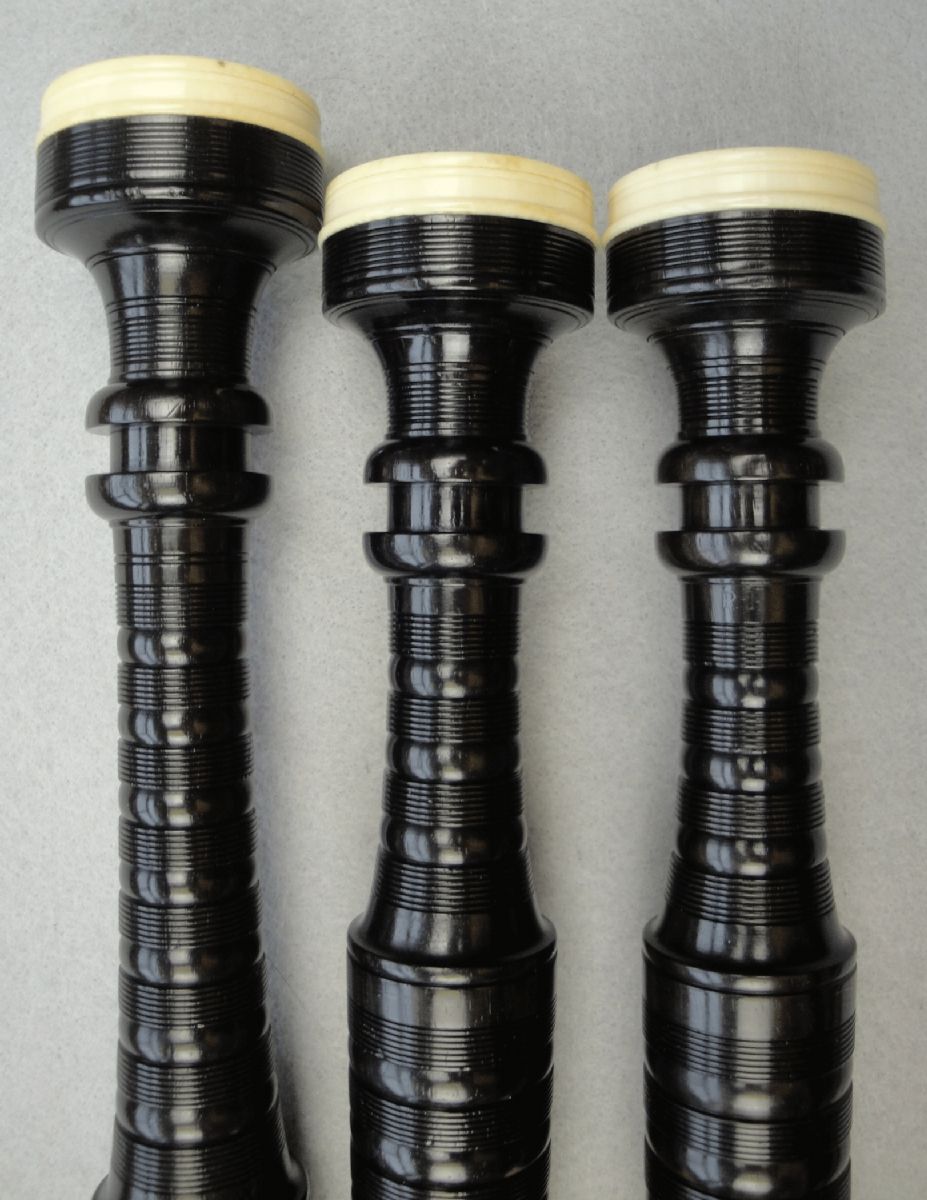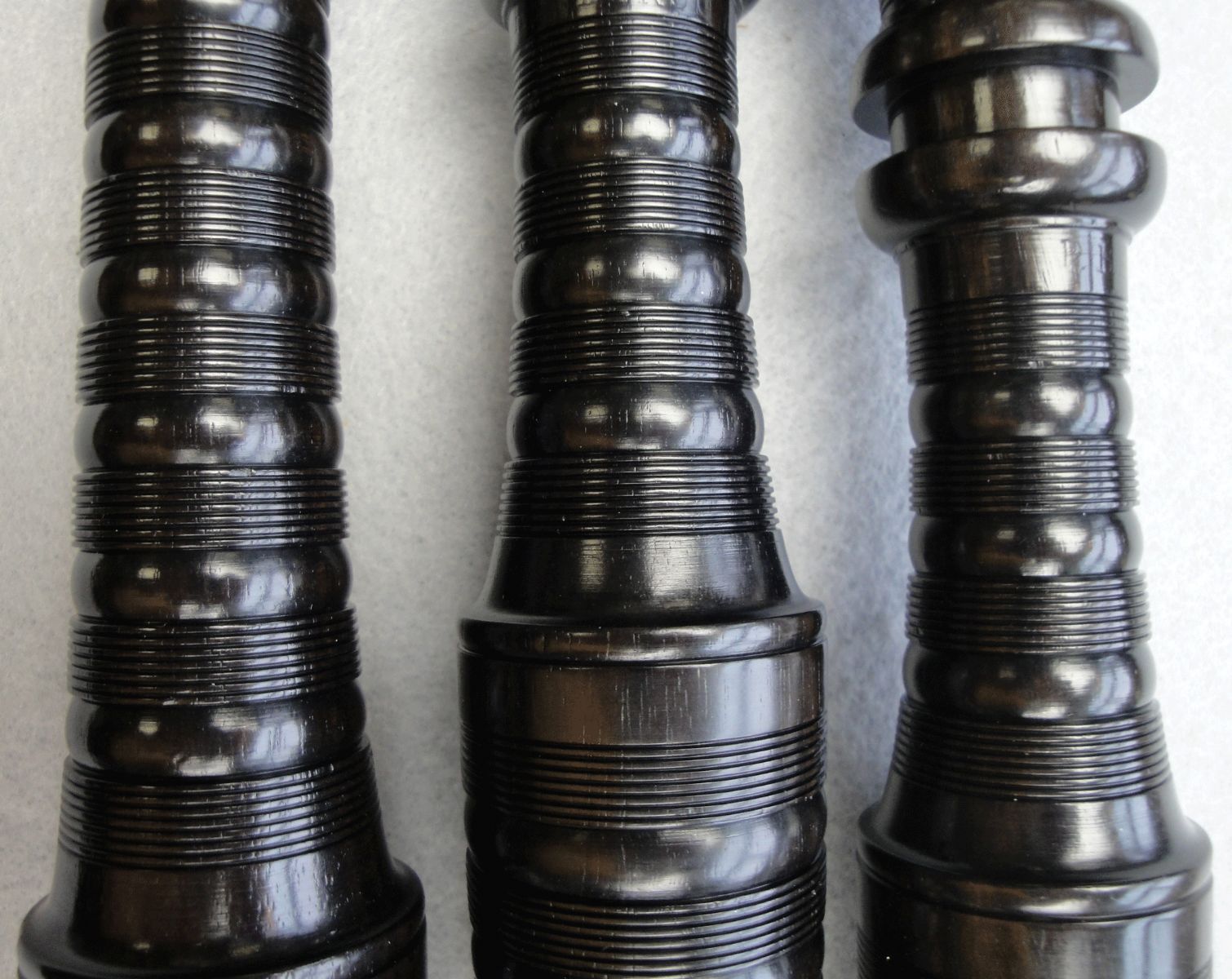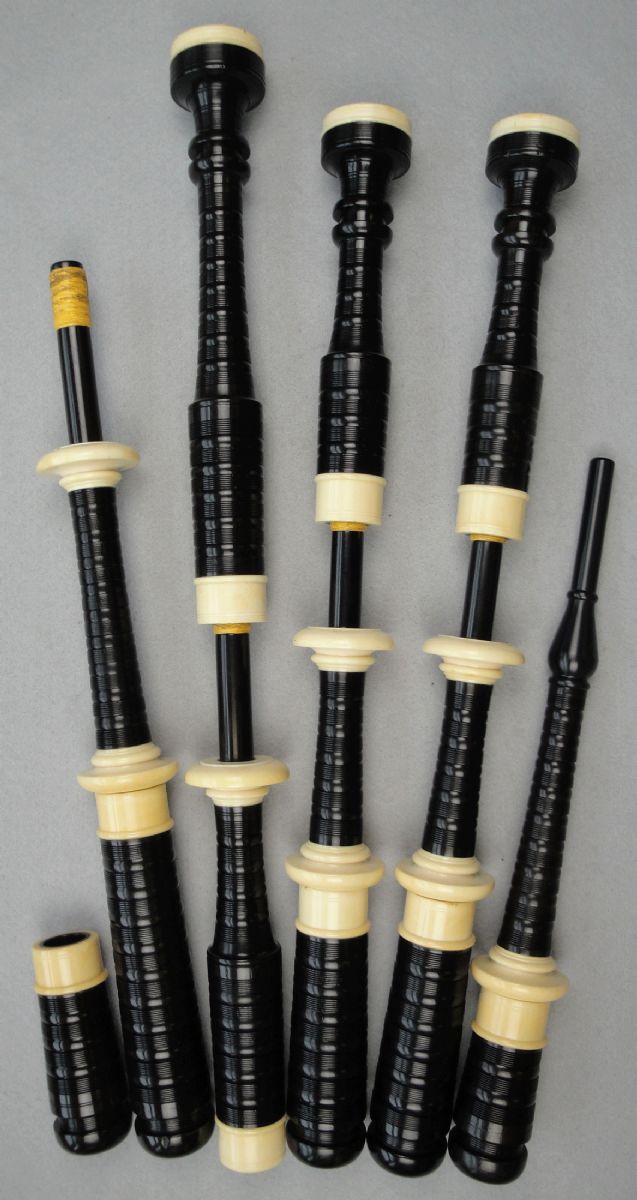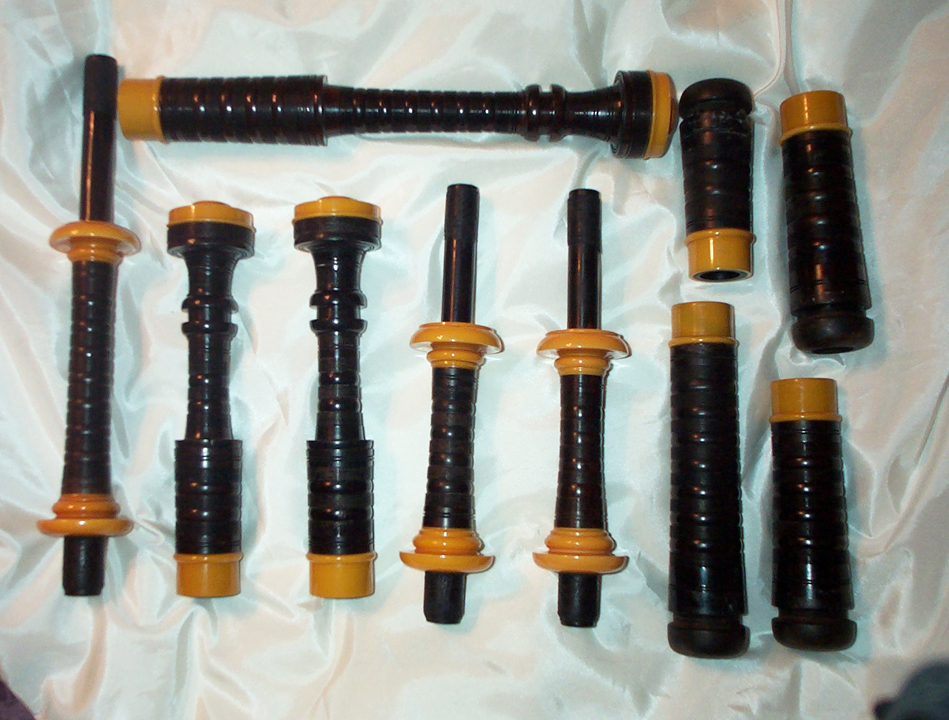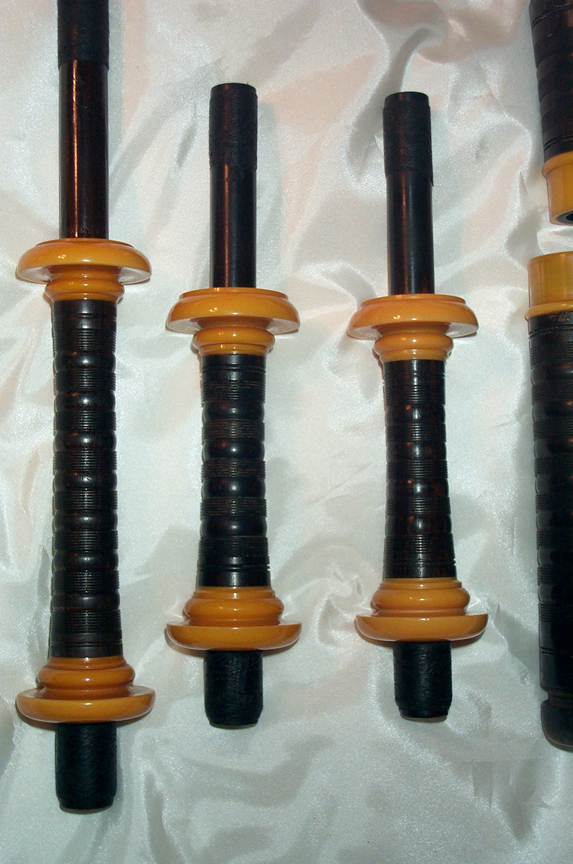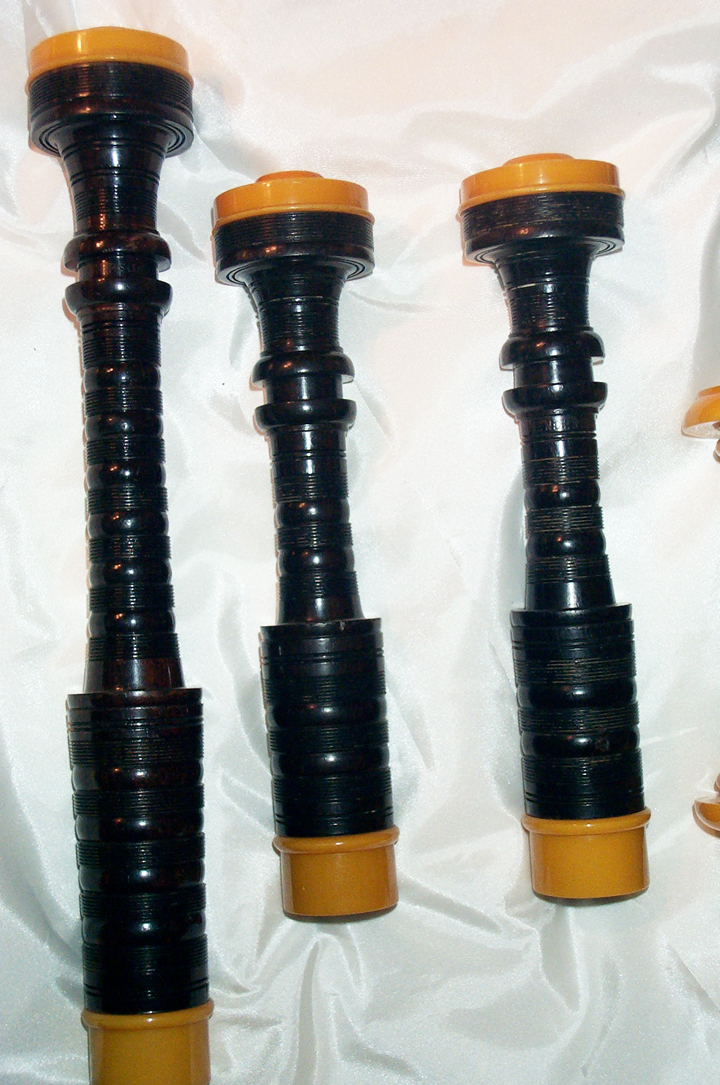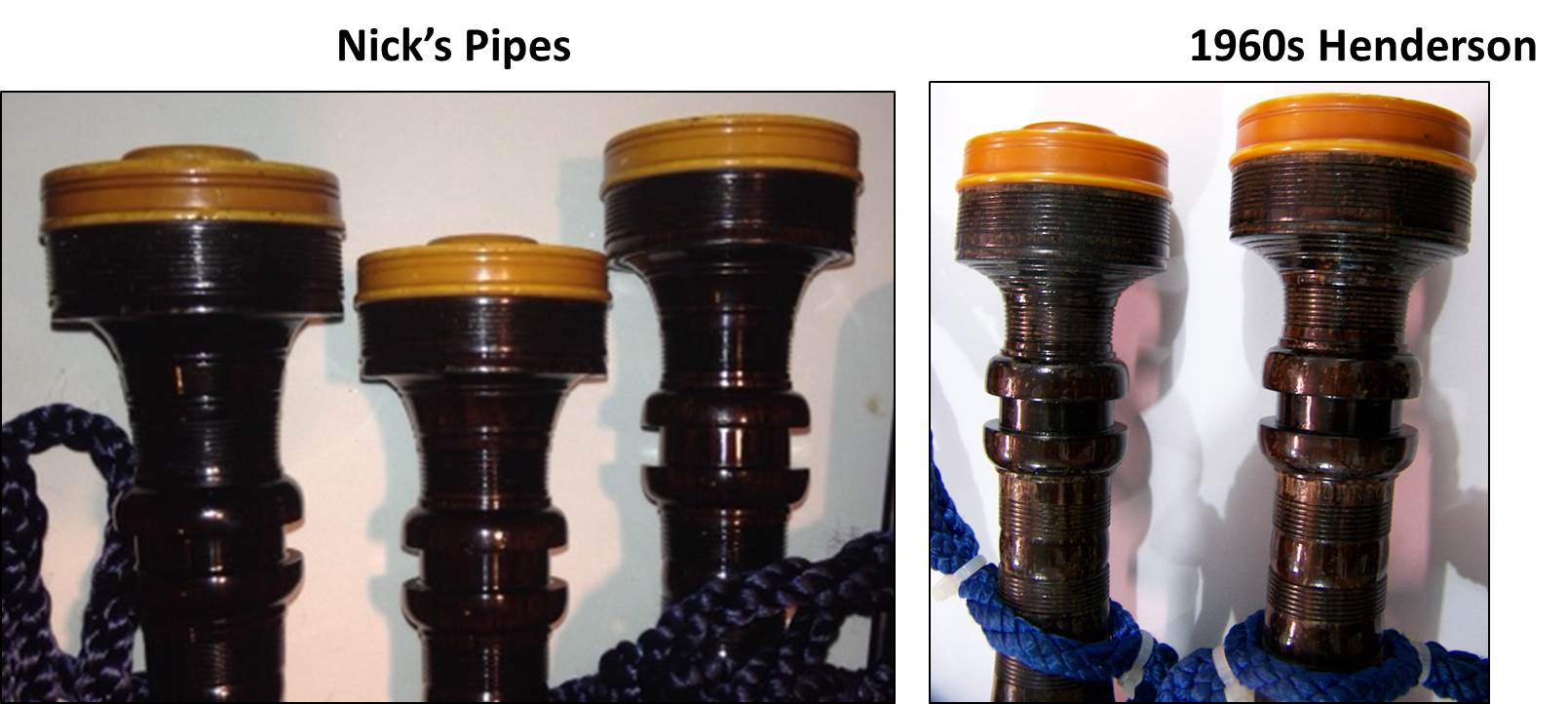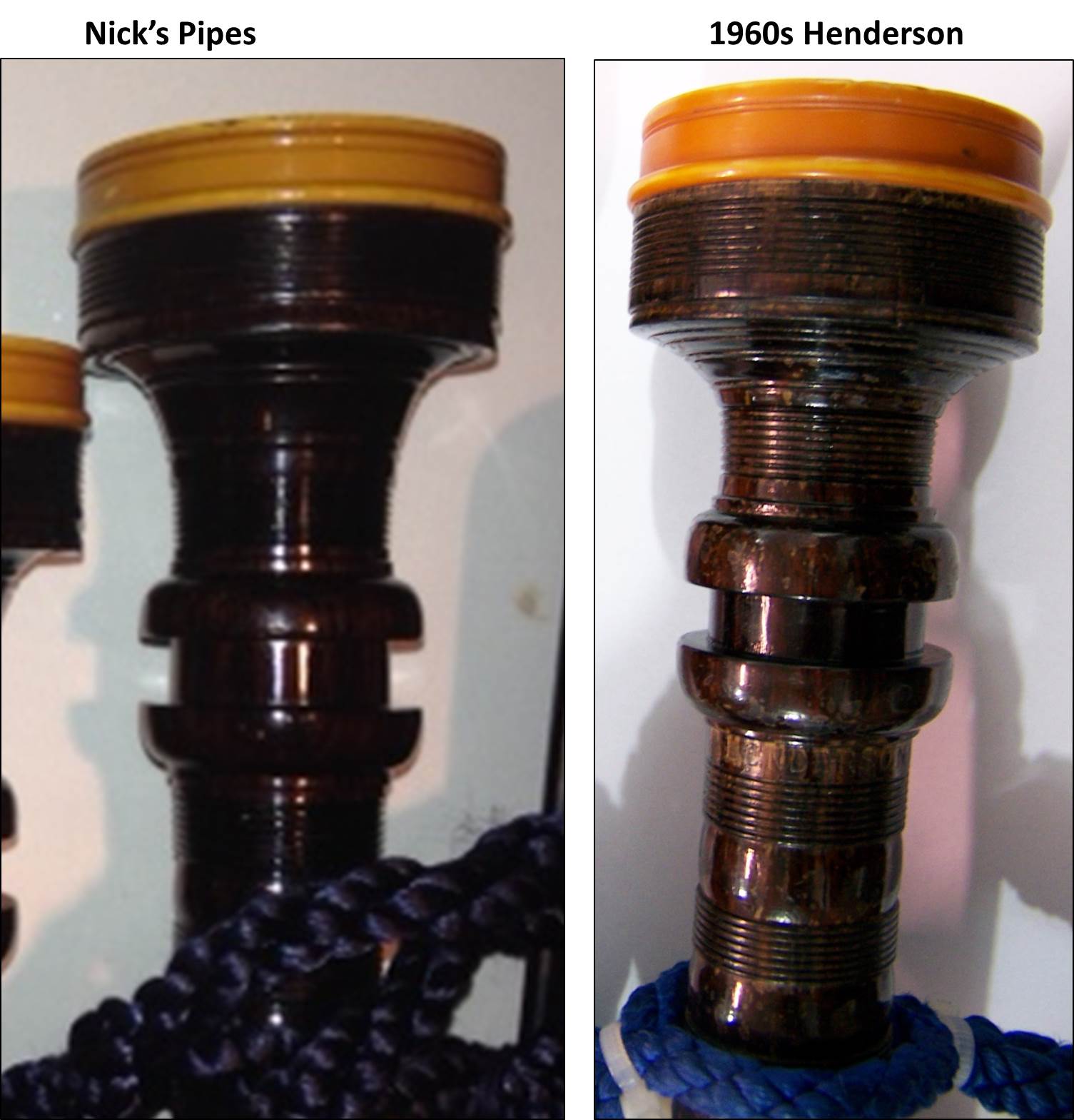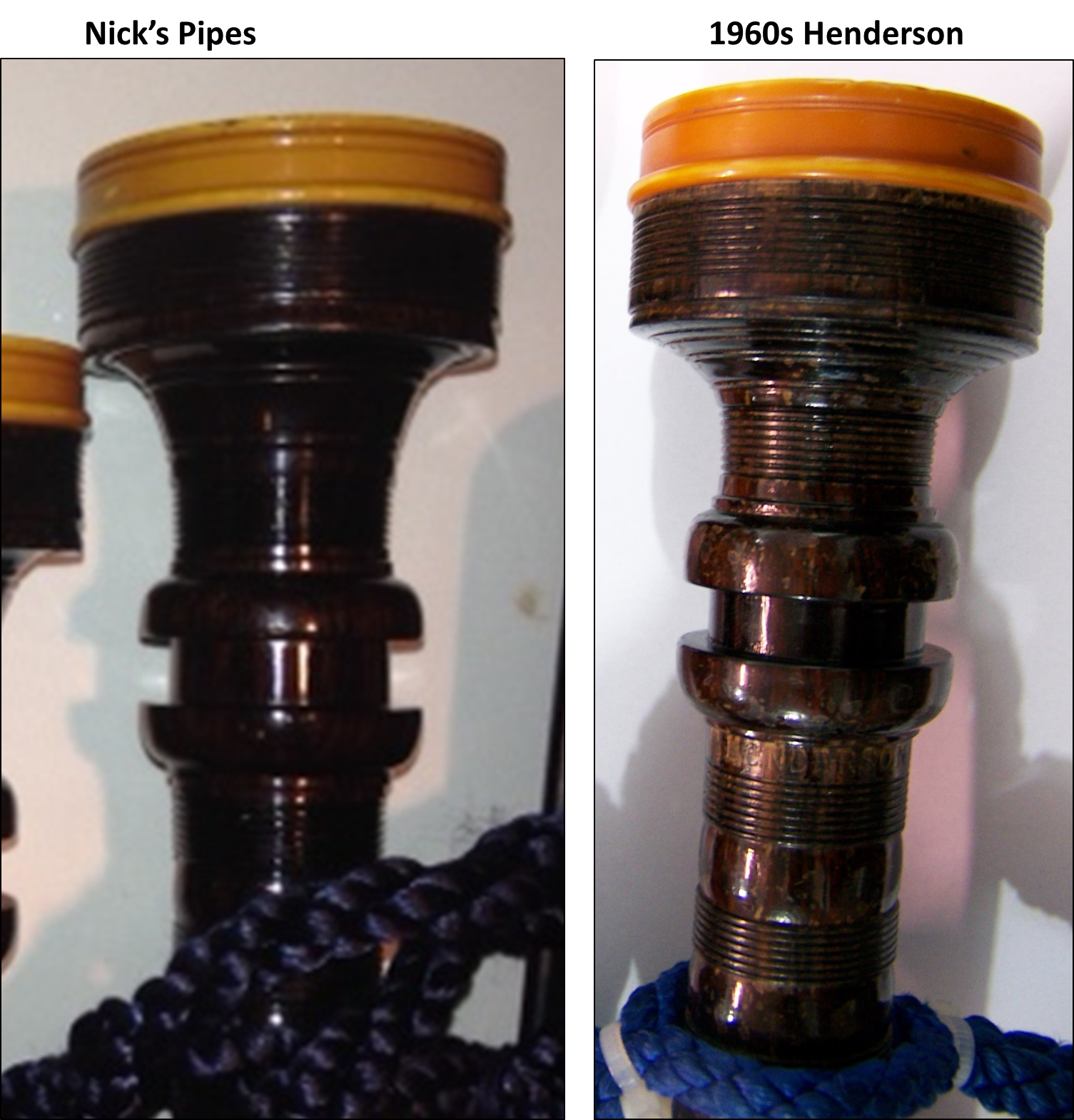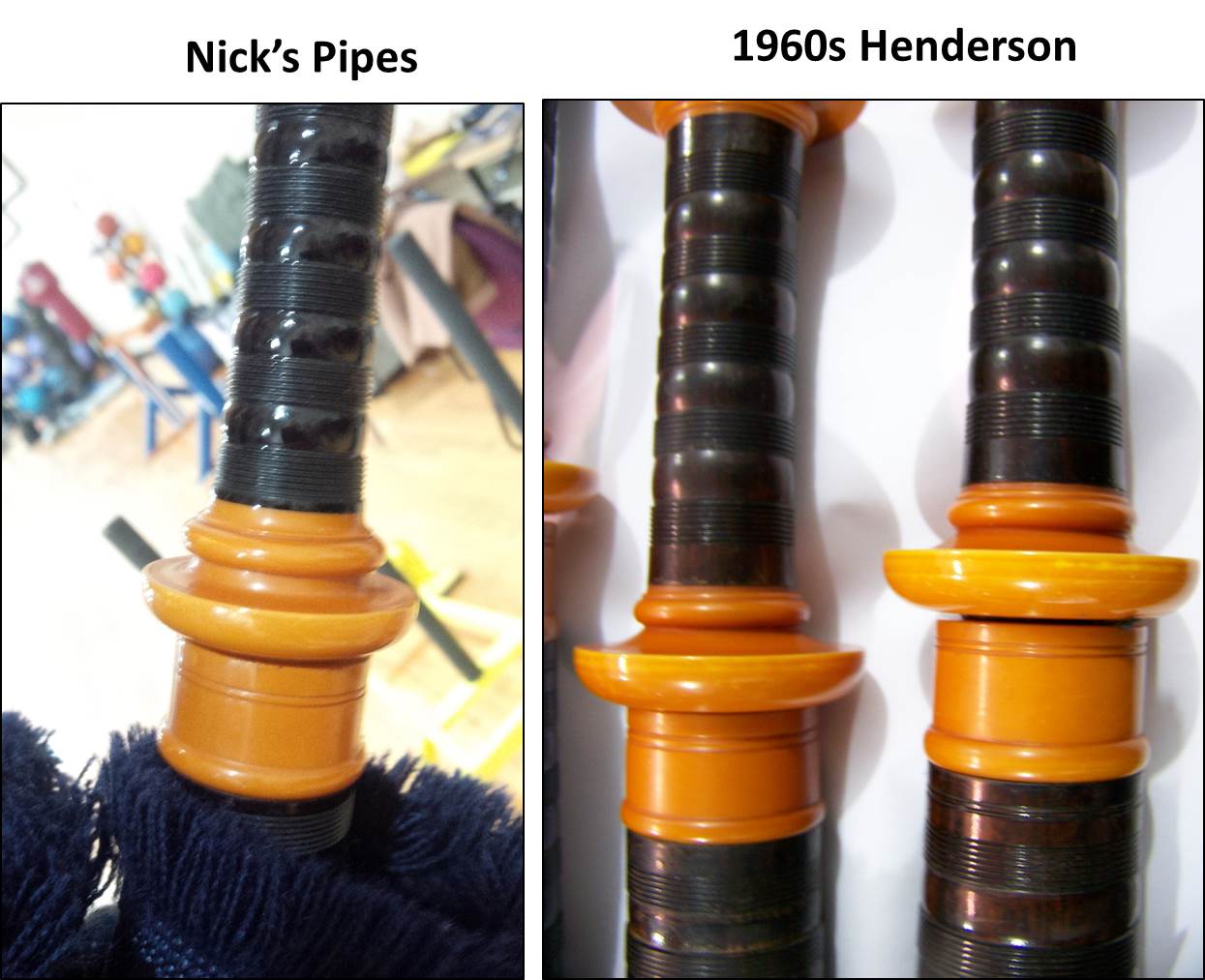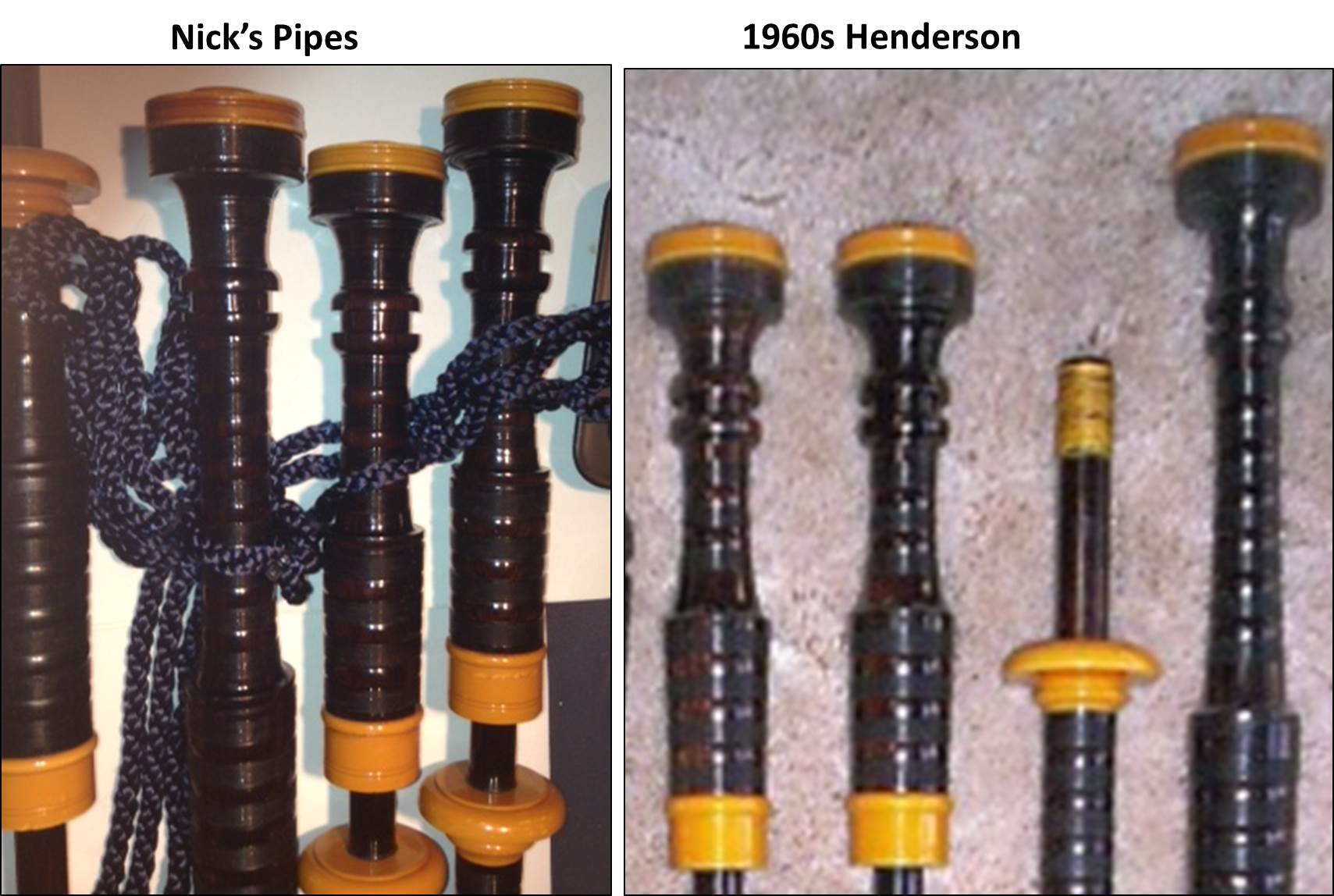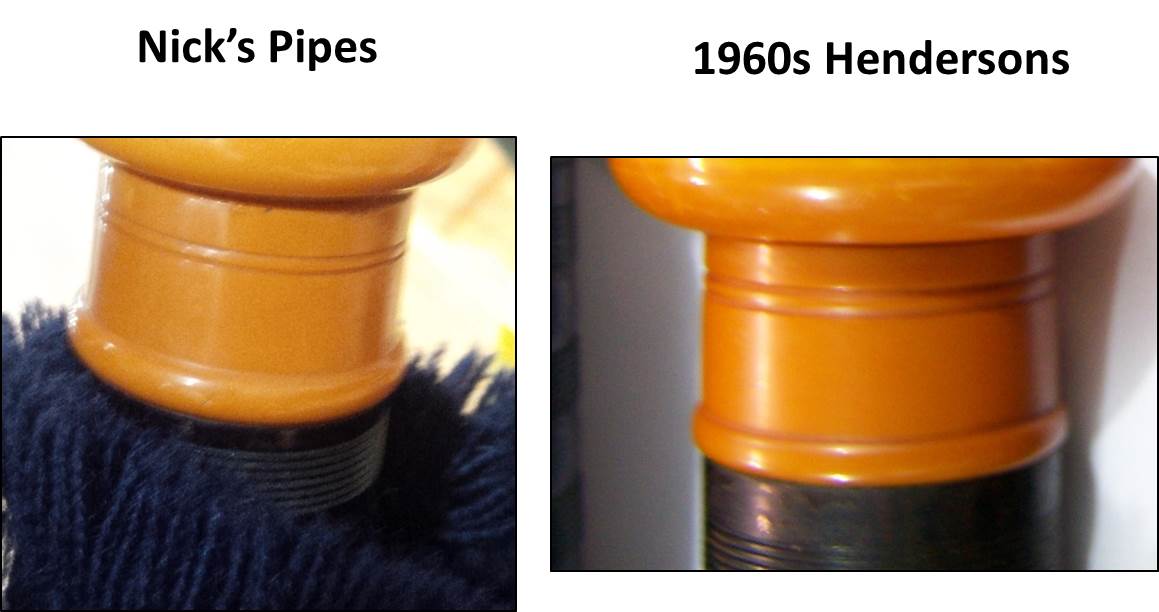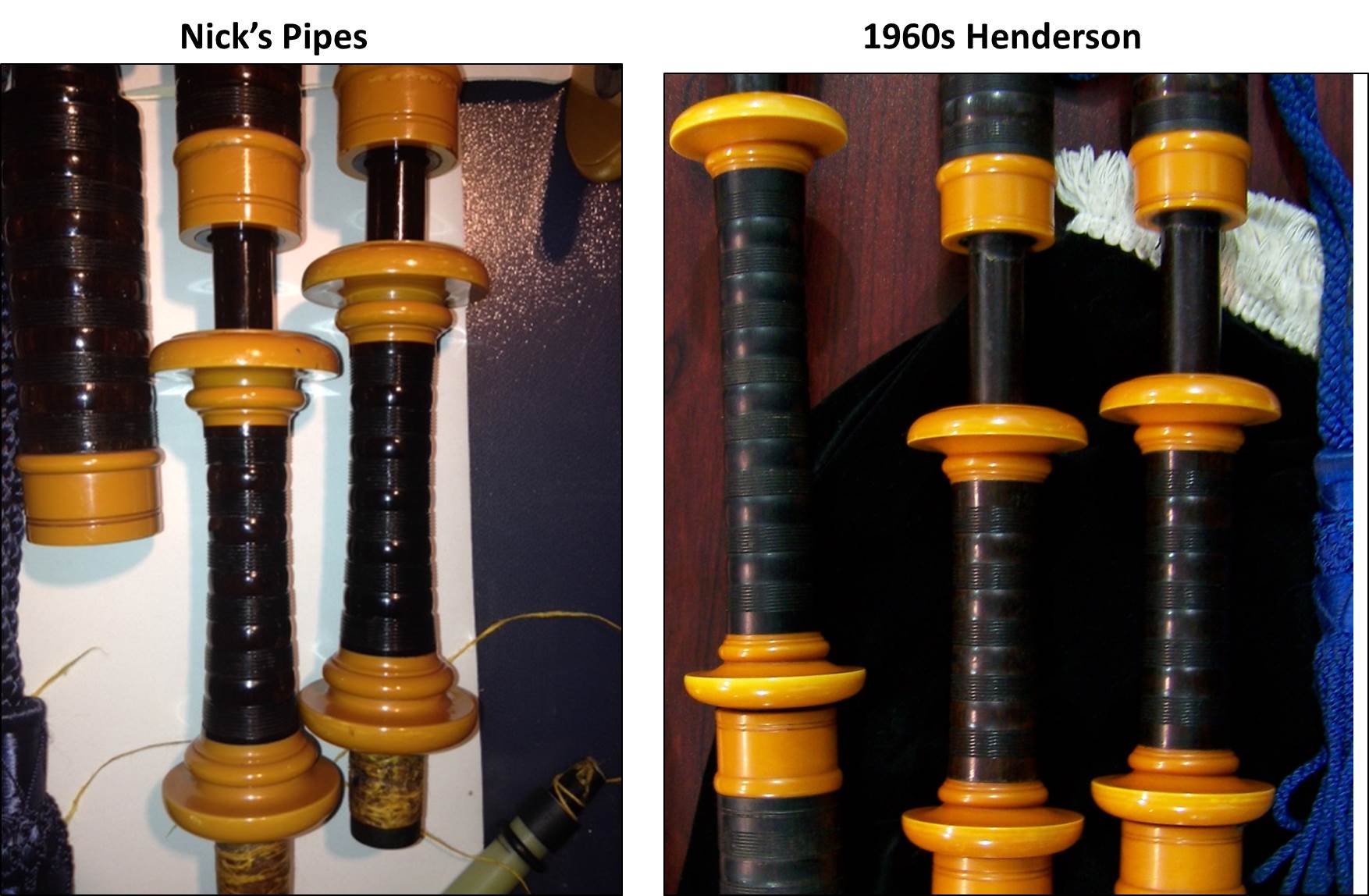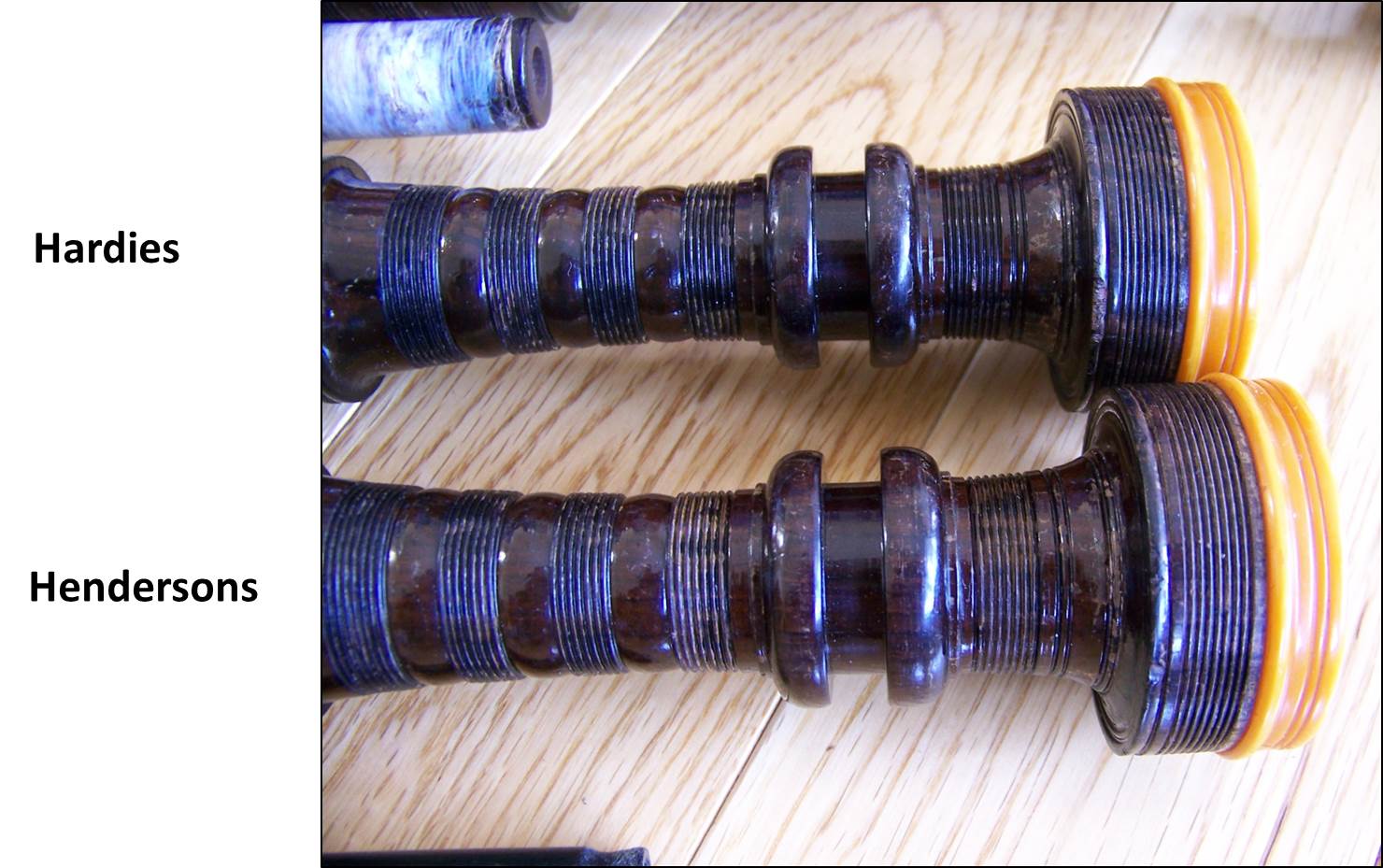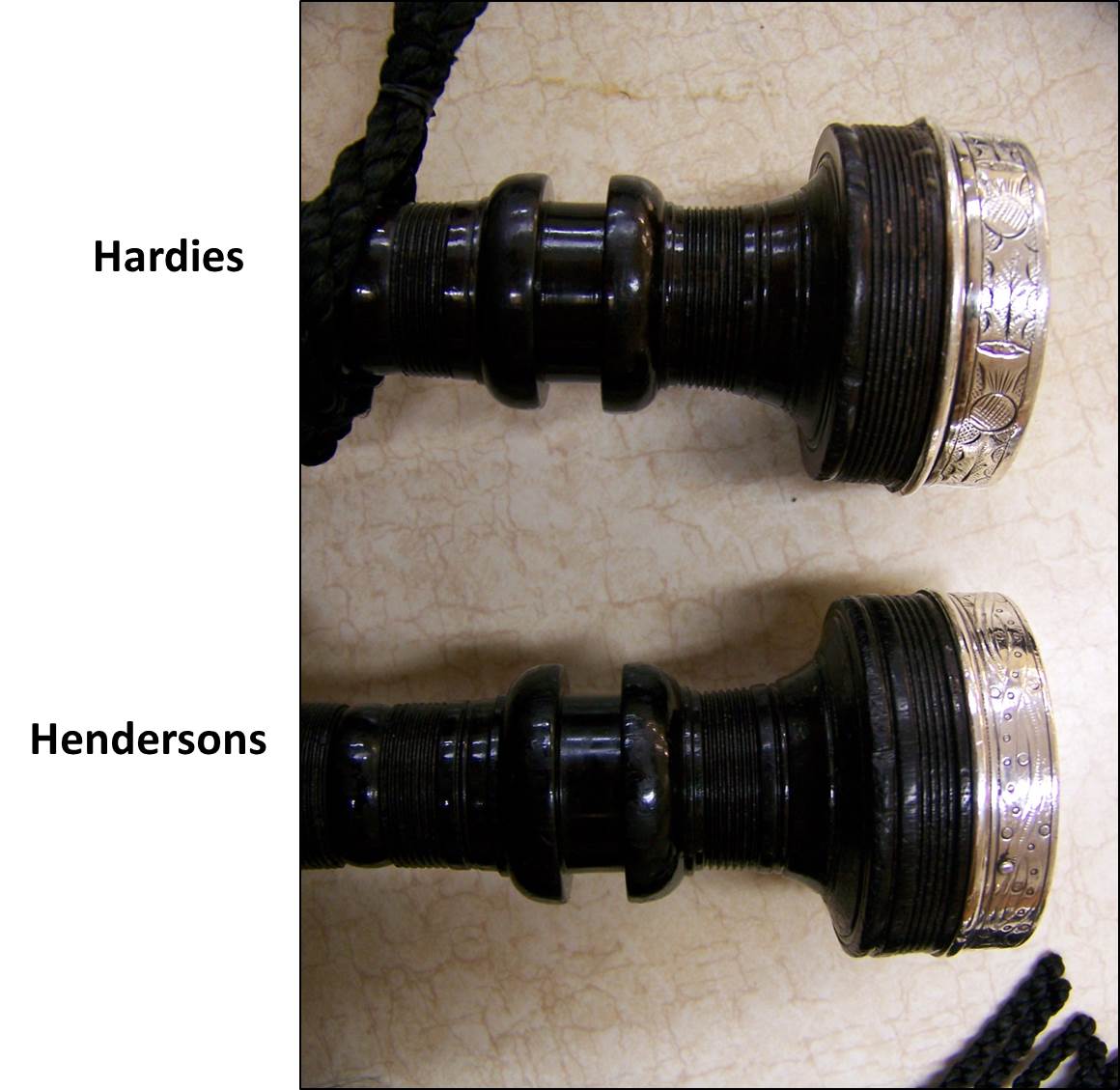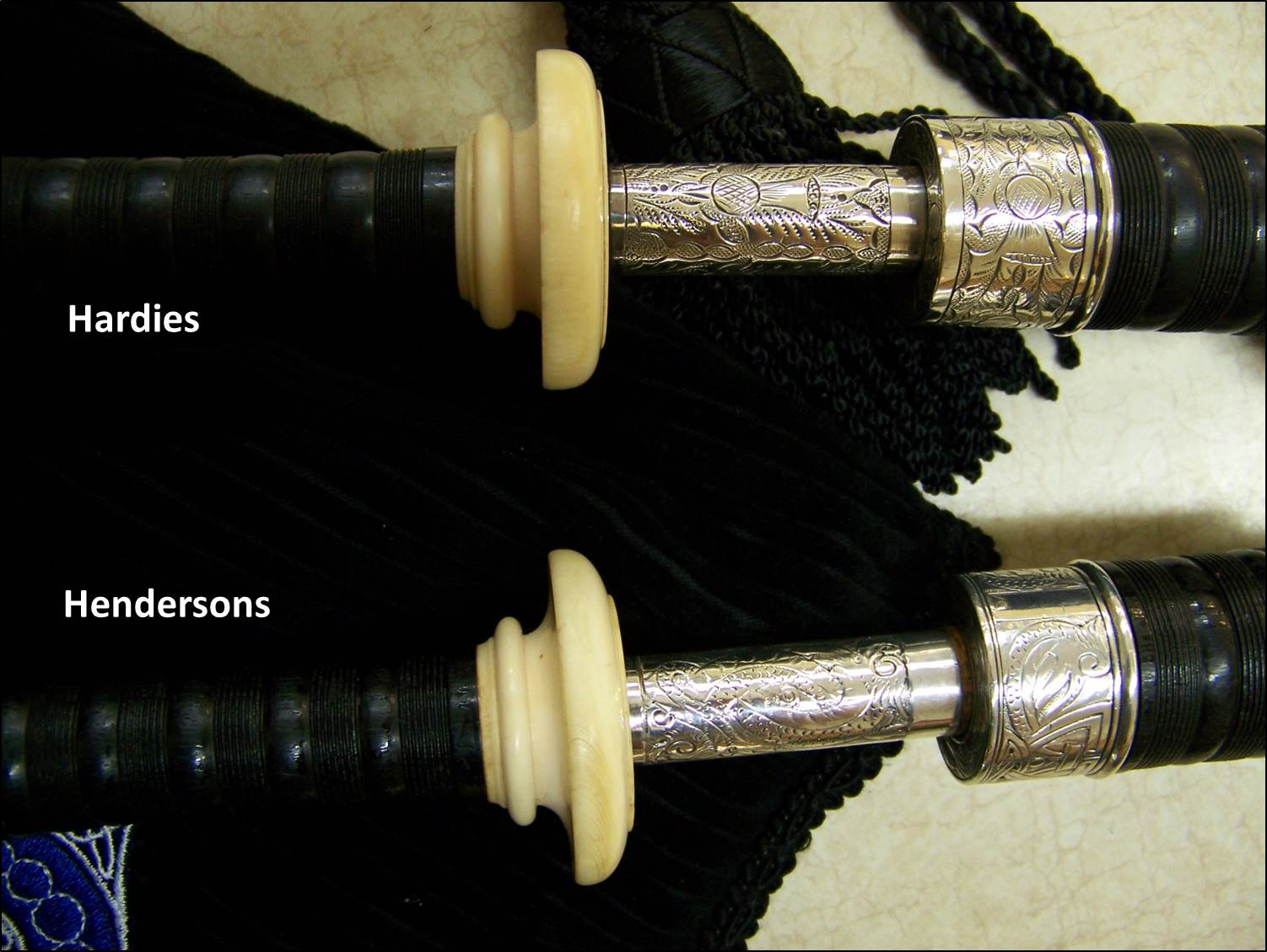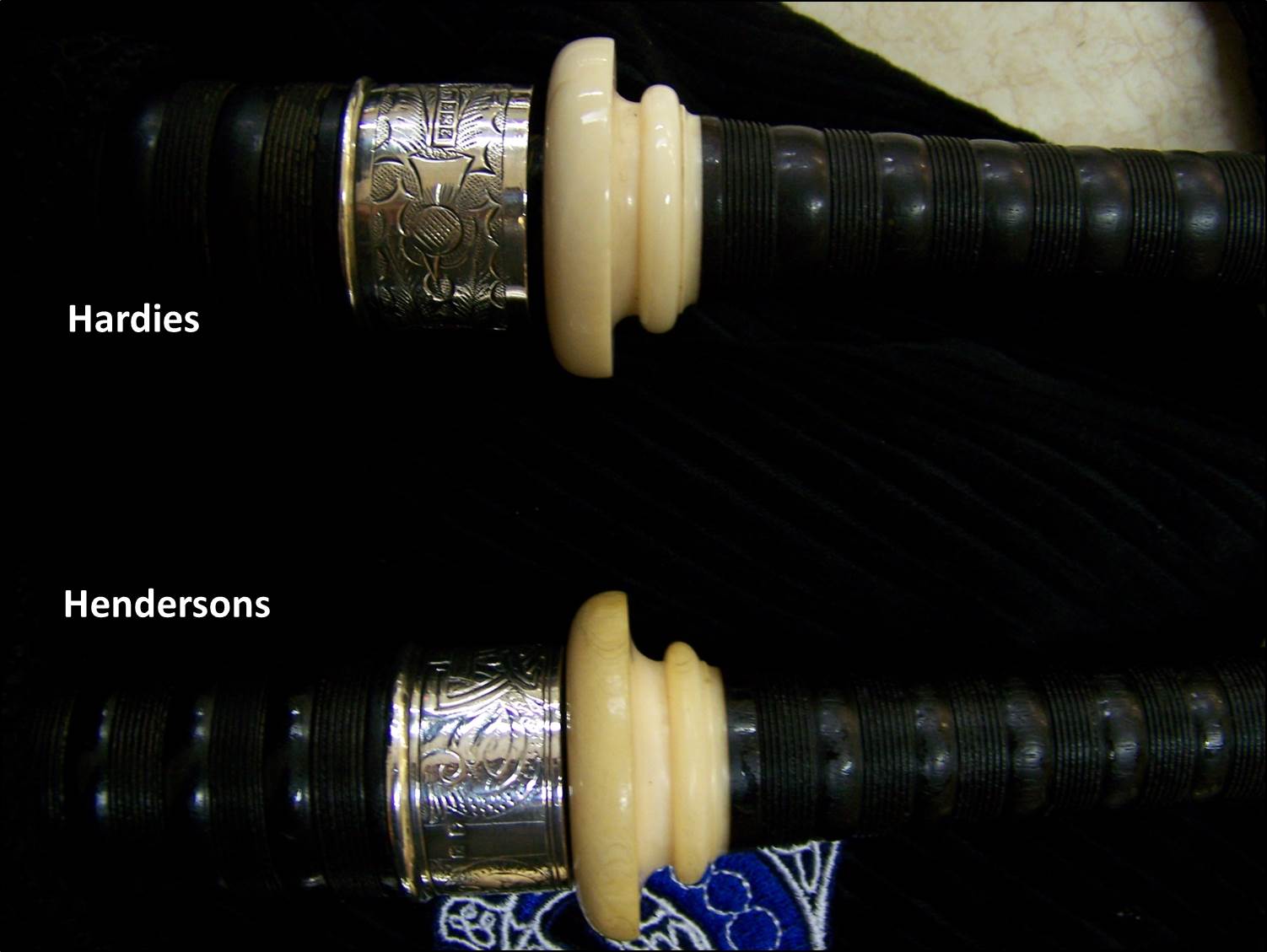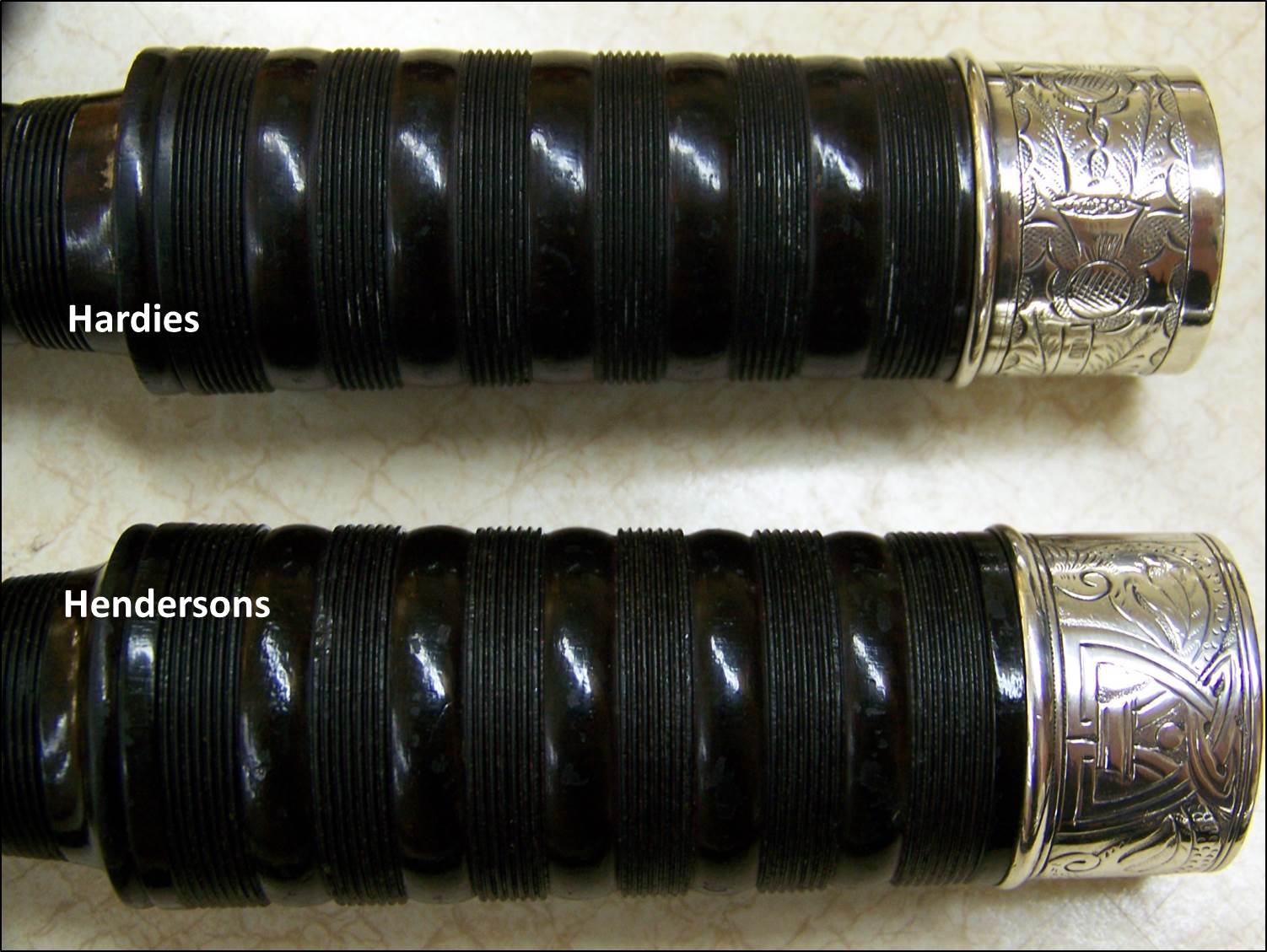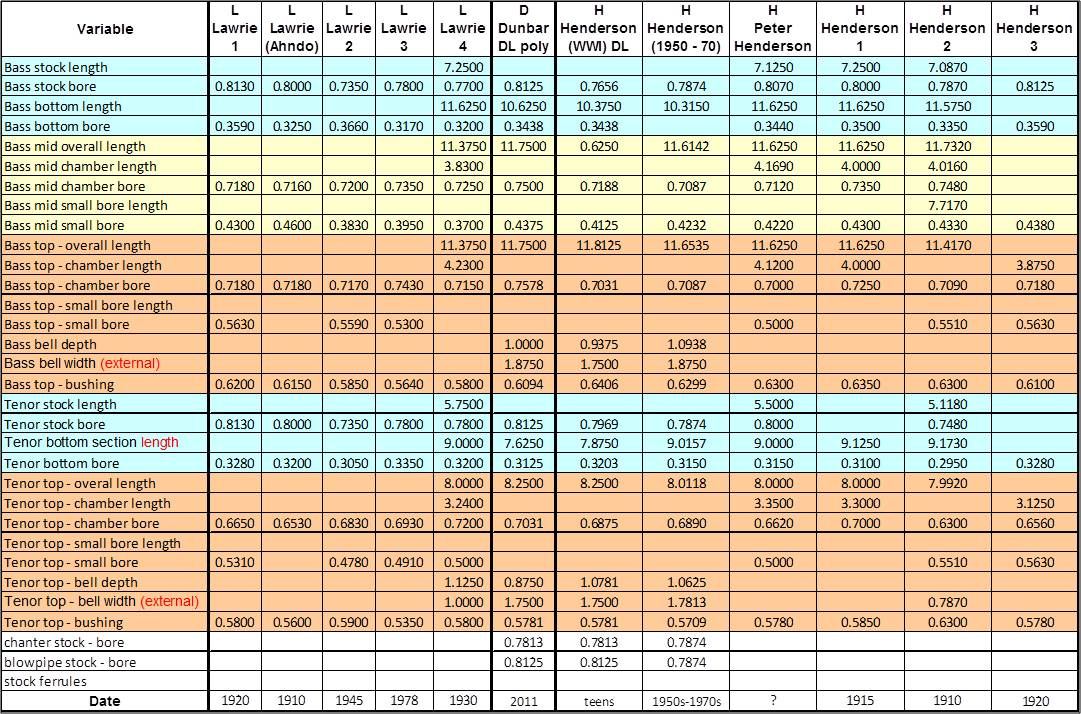Background
Bagpipes made by Peter Henderson, Robert George Lawrie, and Robert Gavin Hardie are perhaps the most ubiquitous and well known of the vintage bagpipe makers. They can also, sometimes quite easily, be mistaken for each other; profiles, mounts, and even the sound can be very similar amongst the three brands, depending on the era. Contrary to what many believe, Henderson pipes were not always marked (more below, but the stamping process was, apparently, a pain, literally, in the chin!) and Lawrie and Hardie almost never. I say almost never because I have found only two examples of Lawries and Hardies being marked (see below for the marks). Thus, pipes from these three makers continue to confuse; perhaps once they’ve been identified we should mark them for perpetuity!
Jeannie Campbell’s Highland Bagpipe Makers (2011) and More Highland Bagpipe Makers (2017) are the two definitive sources of information to date on all bagpipes, including Henderson, Lawrie, and Hardie. A few individuals with better credentials than me, including Ron Bowen and Gord MacDonald, and others often seen in online forums like the Bob Dunsire site, have provided hints on identifying each maker, among others. What I’ll attempt to do here is consolidate the known information and, hopefully, add some insight from my own knowledge and sleuthing. This comparison includes history and relationship between the companies, their maker’s marks, mount styles, bores, and a few other things. First, let’s start with a short backgrounder on the makers, with information mainly from Jeannie Campbell’s excellent two books, plus my own insights and things I’ve dug up on websites or in books.
Peter Henderson Limited (1880 – 1973)
Peter Henderson purchased Donald MacPhee’s bagpipe business in Glasgow when Donald became ill sometime around 1880. Donald passed away later that year. This business was located at 17 Royal Arcade, which was one of a number of popular arcades in the Glasgow where businesses were concentrated. Many arcades were covered but not the Royal Arcade. The Royal Arcade was located near the present day Hope Street where it intersects Cowcaddens Road. Among other things it housed a furniture shop, drapers, leather shop, china shop, a cabinet maker, hat maker, and a bagpipe shop, MacPhees and then Peter Henderson. Here’s an image of the Royal Arcade in 1906 before it was demolished to allow more traffic through along Hope Street:
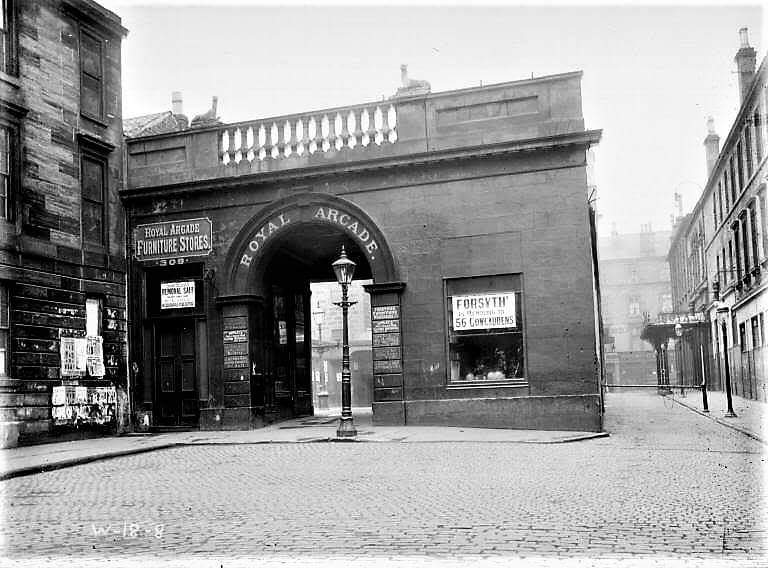
The Royal Arcade, circa 1906, before it was demolished to open up Hope Street to further traffic. It is here at 17 Royal Arcade that Peter Henderson Bagpipes existed from 1880 – 1897. Henderson moved just around the corner to 100 Renfrew Street where they operated for 10 years before moving to another location.
Now for some really neat information and images I received from Jeannie Campbell who sleuthed these out during our discussion of the first Henderson shop. Apparently there was nothing in the vicinity of the Royal Arcade in the early part of the 19th century. Just east of the location was a quarry. By 1866 a Bazaar had developed just south of Cowcaddens on Hope St. This was likely the early makings of the Royal Arcade and why buildings were eventually constructed. We know that Donald MacPhee was at 17 Royal Arcade as early as 1876. The Royal Arcade must then have been built sometime between 1866 and 1876. Here’s a collage of images showing the location of the Royal Arcade in 1903. Peter Henderson was only here until 1897 after which he moved a little south to Renfrew Street, but it must have looked very similar to this.
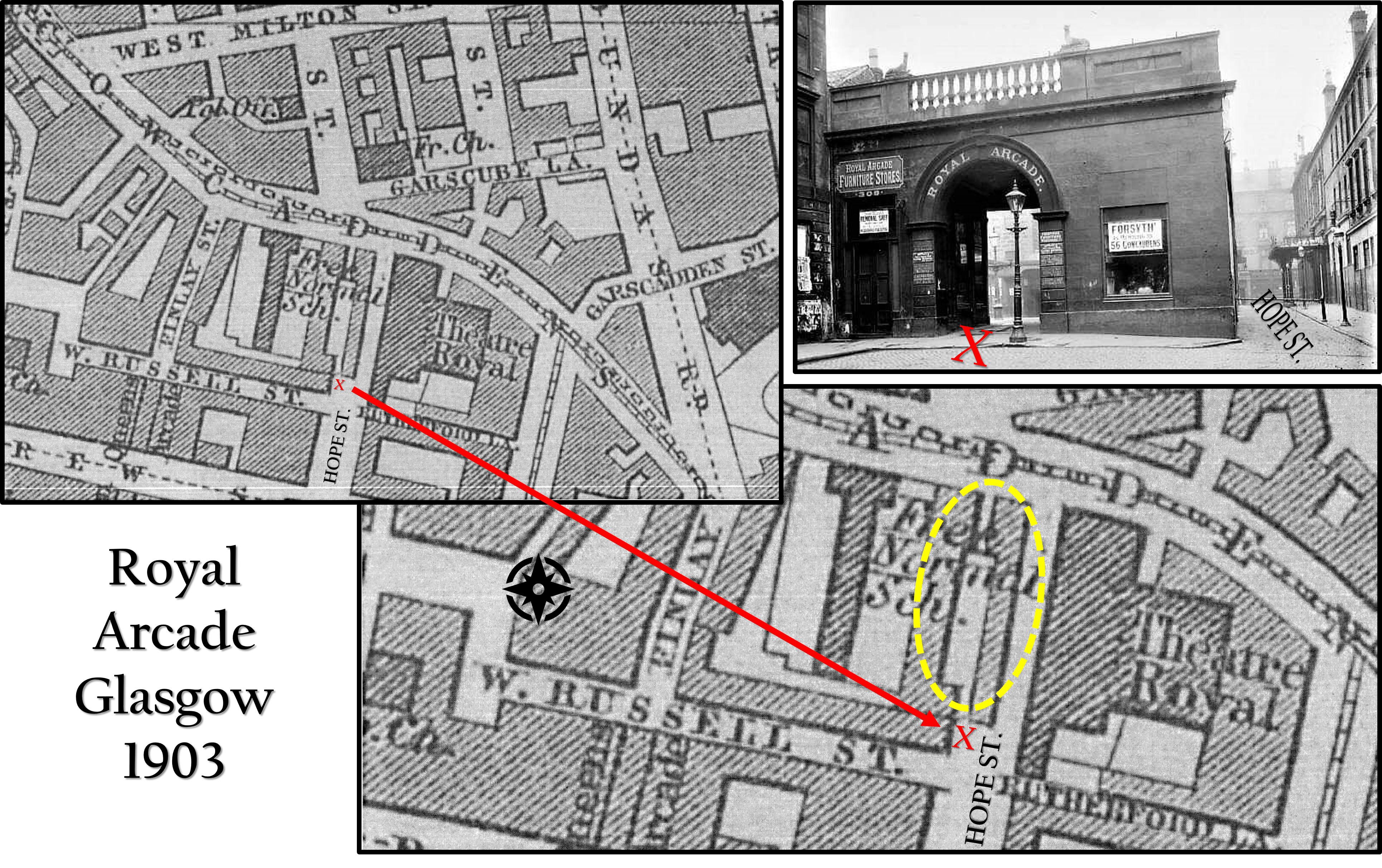
A 1904 map of Glasgow sowing the former location of the Royal Arcade. One can see that a bank of businesses were on either side of this uncovered Arcade (yellow circle). Peter Henderson’s shop was here from 1880 – 1897. Of course, Donald MacPhee owned the shop before Peter. The original Stow College is the Dark Tee to the left of the Royal Arcade listed as a Free Normal School. Thanks to Jeannie Campbell for finding these maps.
Sometime in the early 1900s the Royal Arcade was demolished to make accessing Hope Street easier. It is interesting to note that the present-day location of the National Piping Centre is a stone’s throw from where some of the greatest bagpipes in the world were turned. Just a few minutes jog away is also the original locations of R.G. Lawrie. Here’s a map from approximately 1910 – 1920:
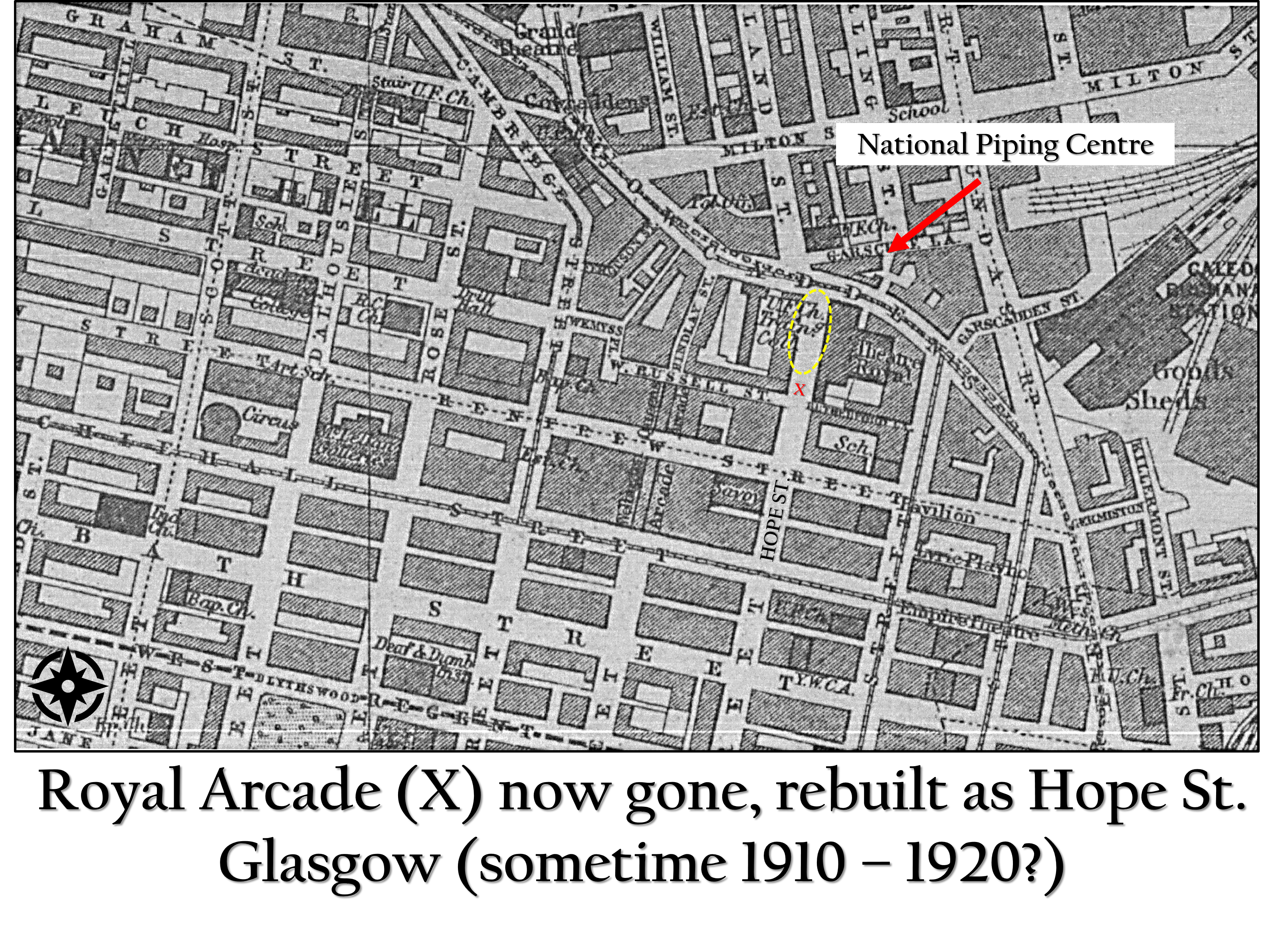
A map of the Post Royal Arcade area from approximately 1910. Peter Henderson’s shop was located somewhere within the yellow dotted line from 1880 – 1897). Note that the National Piping Centre is currently very near where some of the greatest bagpipes ever made were turned! Thanks to Jeannie Campbell for finding these maps.
Here’s what replaced the Royal Arcade: a Charles Rennie Mackintosh contribution-designed building locally referred to as the MacConnell Building. MacConnell’s Pub still occupies the lower level corner. If you were standing here the National Piping Centre would be behind you.
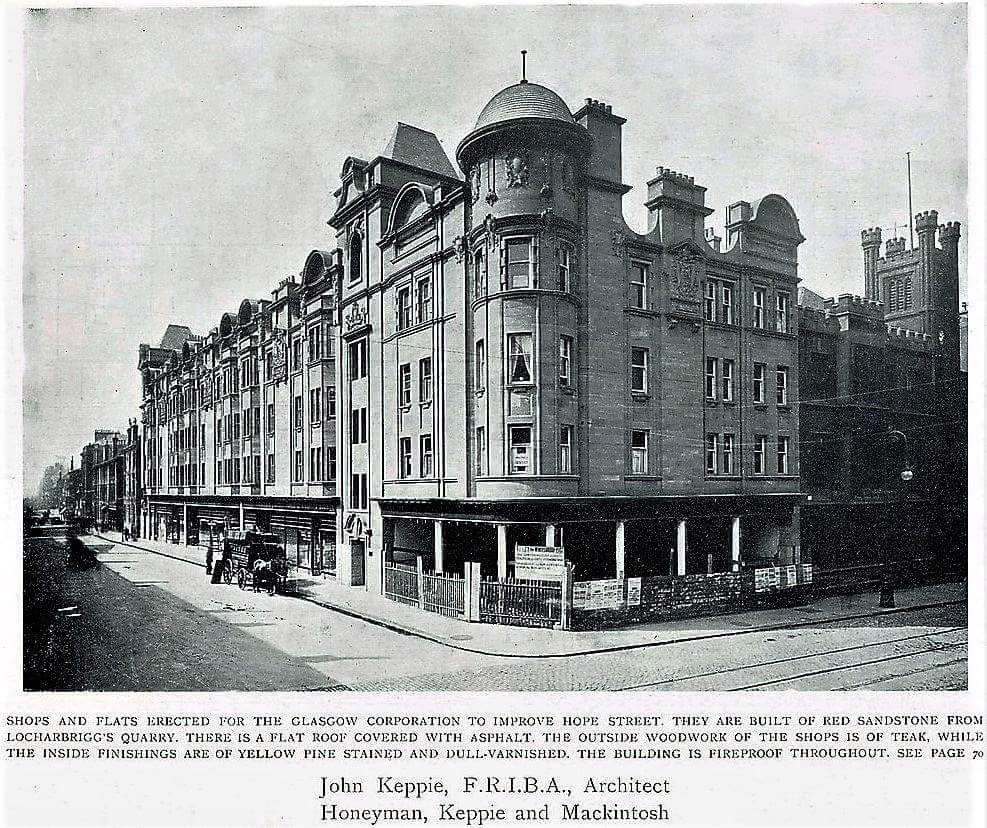
The Charles Rennie Mackintosh designed building on the corner of Hope Street and Cowcaddens Road that replaced the Royal Arcade on Hope Street. Peter Henderson moved his shop from there in 1897 to 100 Renfrew Street about 10 years before the Arcade was demolished. If you standing in this position, the National Piping Centre would be behind you. The original Stow College is the castle-like building to the right. It was demolished for a parking garage…
Peter Henderson vs. Donald MacPhee
From 1867 to 1877, Donald MacPhee was a regular and winning piping and dancing competitor on the circuit. In 1870 he was considered by some as the best piper in Scotland. Donald also published a tutor and a number of collections that included some of his own compositions. MacPhee’s 1876 performance at the Bonawe Games inspired 16 year old John MacColl to study with MacPhee and go on to become one of the best pipers and composer of all time. John MacColl later became a major influence in the R.G. Lawrie company for many years as the bagpipes manager (more down below). Henderson bagpipes eventually expanded to include various highland dress items and was a major overall supplier to governments and bands.
The MacPhee business was apparently very successful and it stands to reason that MacPhee bagpipes had a good name at the time. Peter Henderson himself was an accomplished and well-respected piper who won the march competition at the Northern Meeting. We also know that Peter was turning bagpipes —– One would assume that Peter carried on the tradition of maintaining the various profiles and internal dimensions of the very successful MacPhee bagpipes. An undocumented source suggested that Peter Henderson was already turning bagpipes before he purchased the MacPhee business. Henderson bagpipes bear resemblance to some MacPhee bagpipes, though the MacPhee design was somewhat variable in profile and mount design. Early MacPhees, at least to my eye, look more like something out of the Edinburgh school of bagpipe design, e.g., MacDougall, than the Glasgow school. Recall, MacPhees were marked MacPhie and MacFie, which I suspect are the earlier permutations. While the following pipes posted on Gord MacDonald’s excellent Island Bagpipe website are marked Donald MacPhee, these are apparently an earlier more Edinburgh-like version of MacPhee pipes. See my comparative images of Hendersons up to around WWI. Earlier MacPhee pipes don’t really bear too much resemblance to Henderson pipes:
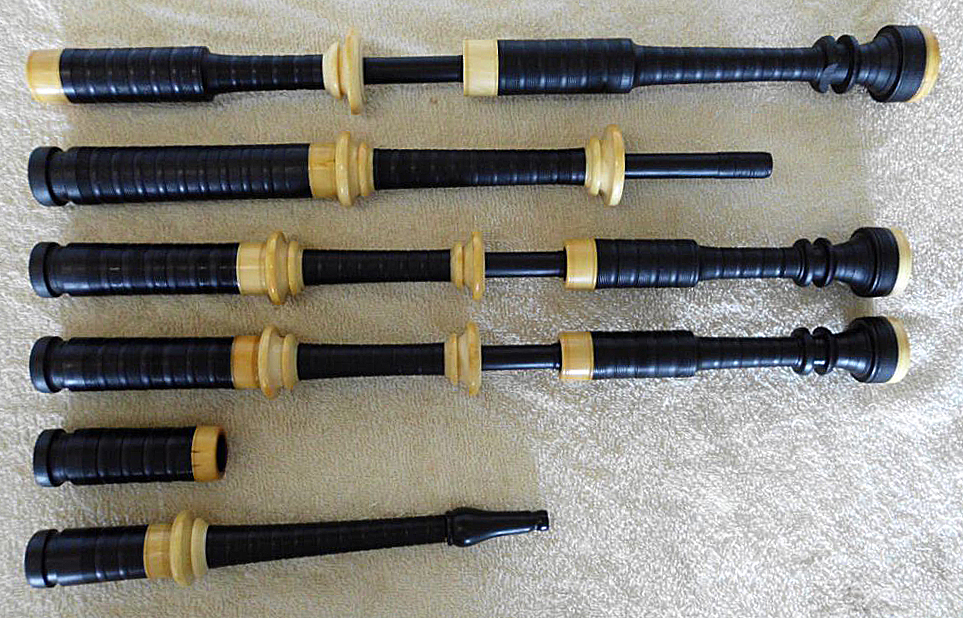
Donald MacPhee bagpipes, sometime before 1880. This set is marked. These are more of an Edinburgh style not really similar to Hendersons, but see below for later MacPhees that are similar. Image from Gord MacDonald’s awesome Island Bagpipe site: http://www.bagpipe-id.com/?page_id=284.
To emphasize the point, here’s another image from Island Bagpipe with the same MacPhee and a much newer Henderson:
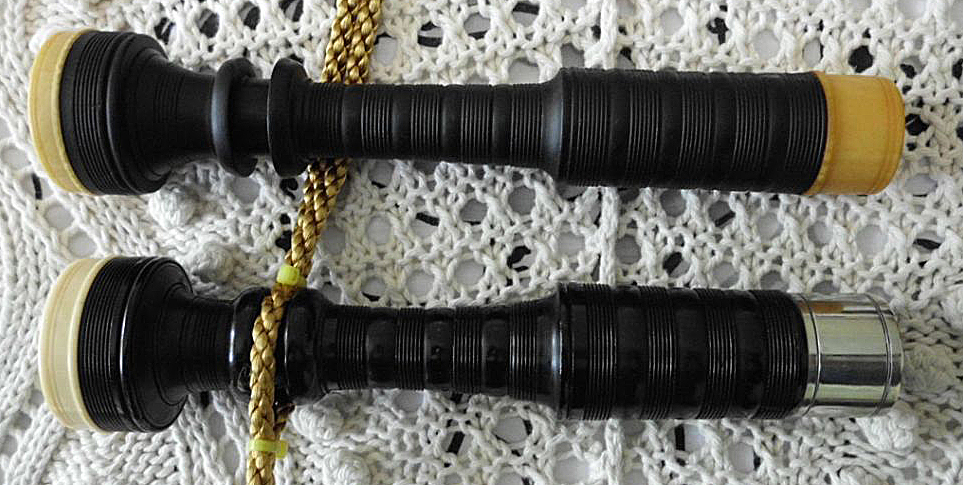
Here’s a Henderson tenor below a marked Donald MacPhee tenor from sometime before 1880. I think that the profile of some earlier Hendersons are more similar to the MacPhee. See below. Image adapted from Gord MacDonald’s awesome Island Bagpipe site: http://www.bagpipe-id.com/?page_id=284.
That being said, on the same Island Bagpipe page we find a set of MacPhee pipes documented to have been purchased in 1880, and which still reside with the family; Peter Henderson pipes look quite a bit more like these than the previous, likely earlier version of MacPhees:
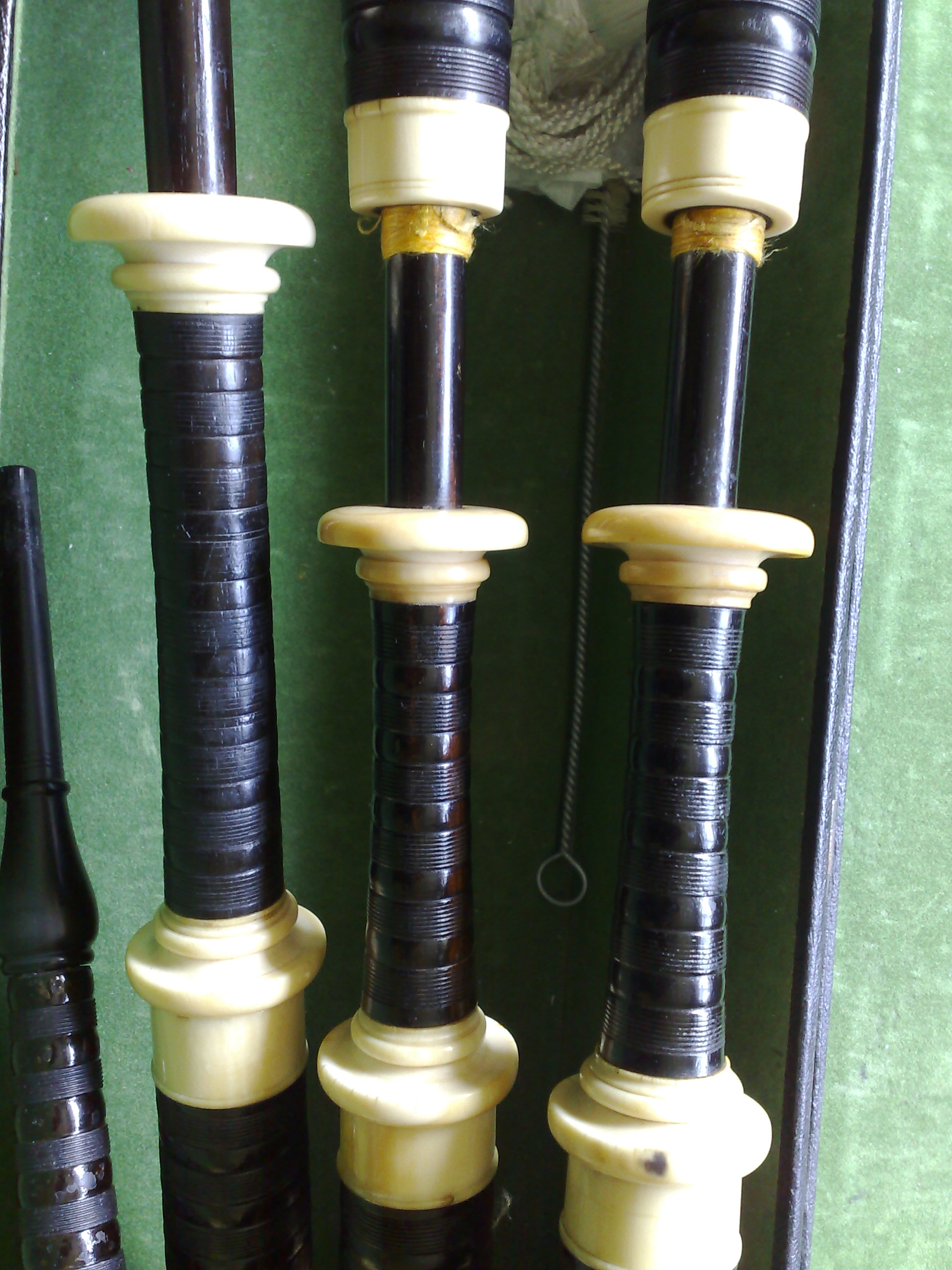
Mounts in profile from Donald MacPhee pipes purchased in 1880. Hendersons look much more like these than other, likely earlier MacPhees. Image from Gordon MacDonald’s Island Bagpipe page: http://www.bagpipe-id.com/?page_id=284.
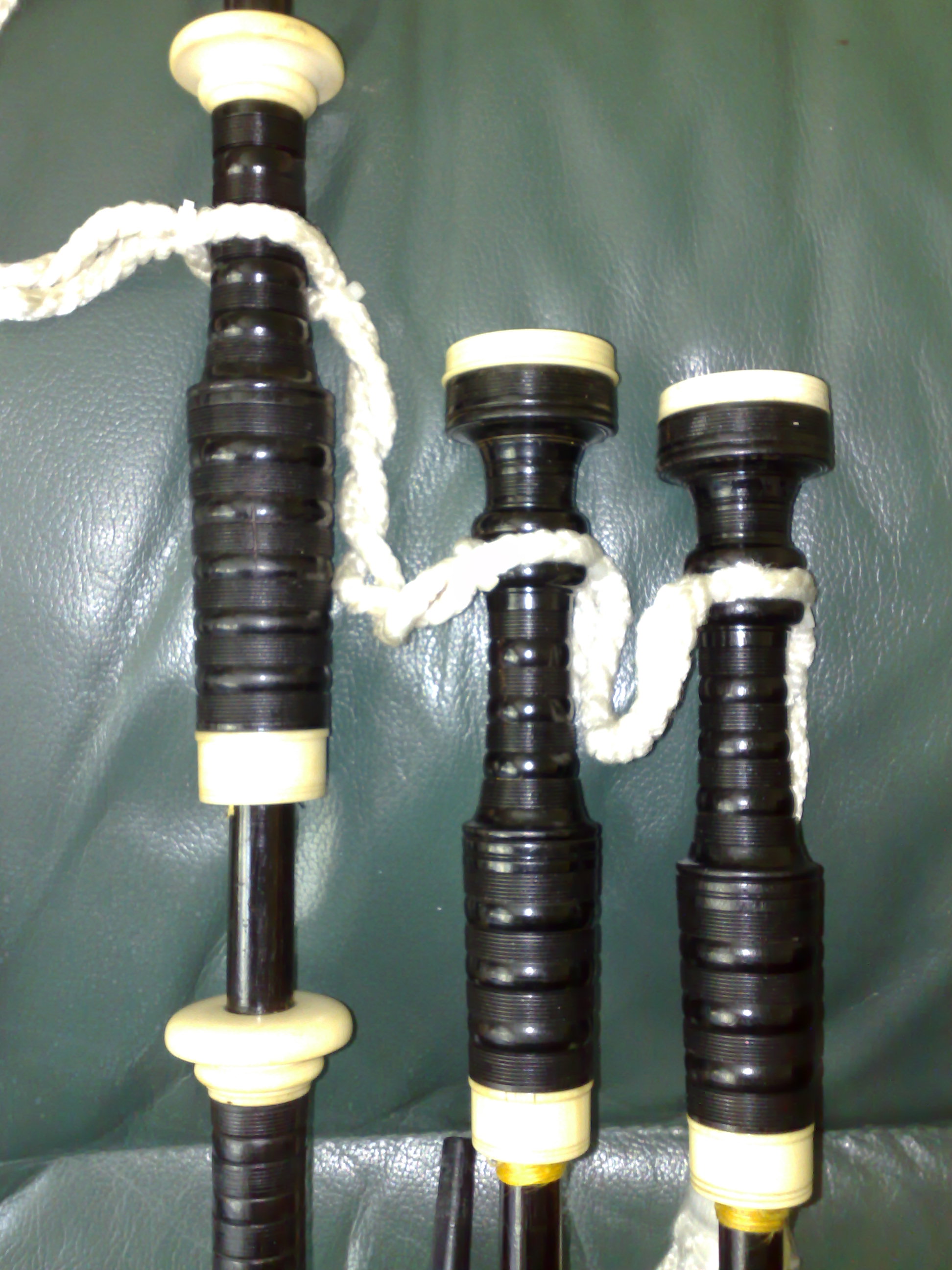
Donald MacPhee pipes purchased in 1880. Hendersons look much more like these than other, likely earlier MacPhees. Image from Gordon MacDonald’s Island Bagpipe page: http://www.bagpipe-id.com/?page_id=284.
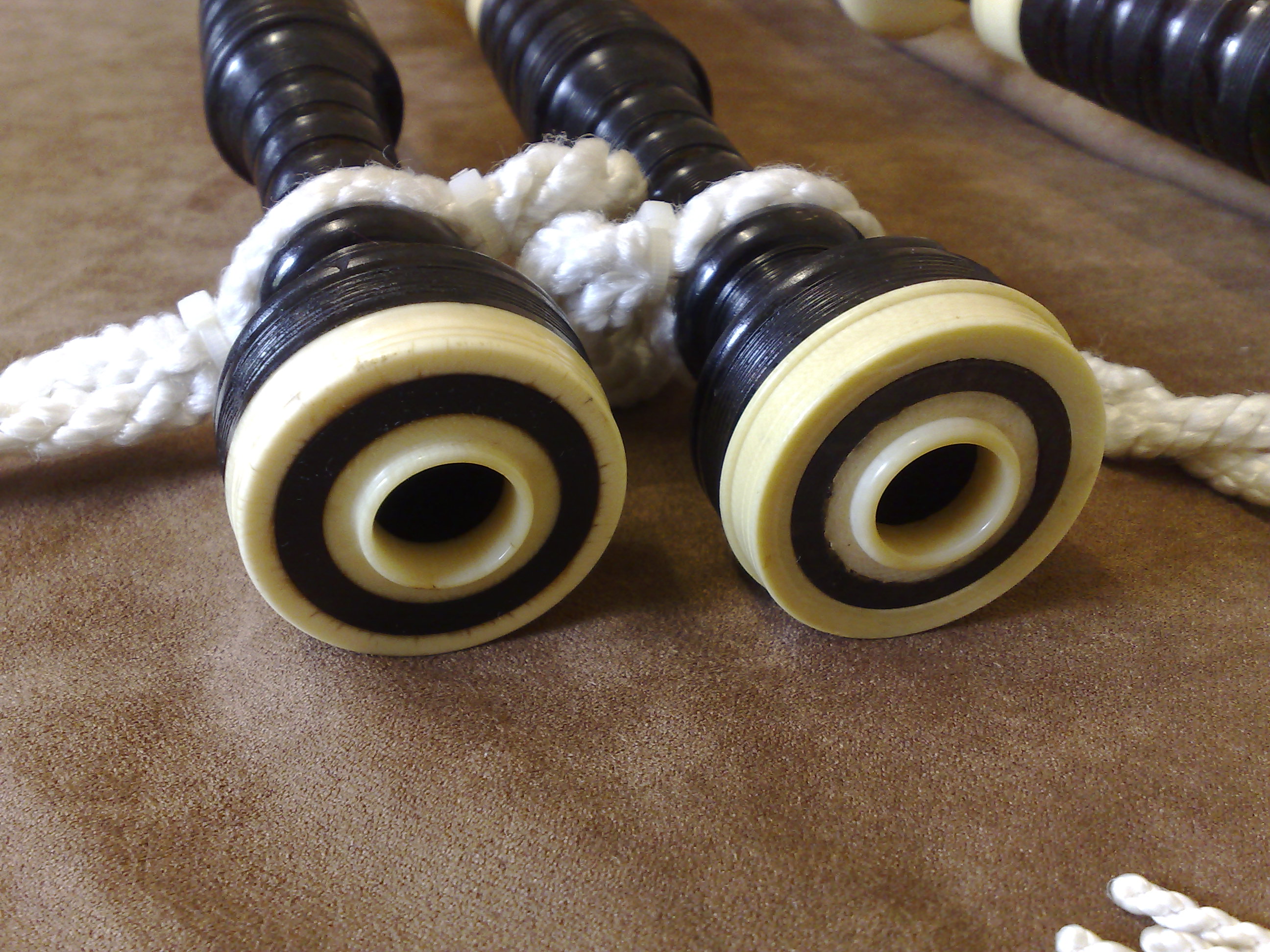
Tenor tops of Donald MacPhee pipes purchased in 1880. Hendersons look much more like these than other, likely earlier MacPhees. Image from Gordon MacDonald’s Island Bagpipe page: http://www.bagpipe-id.com/?page_id=284.
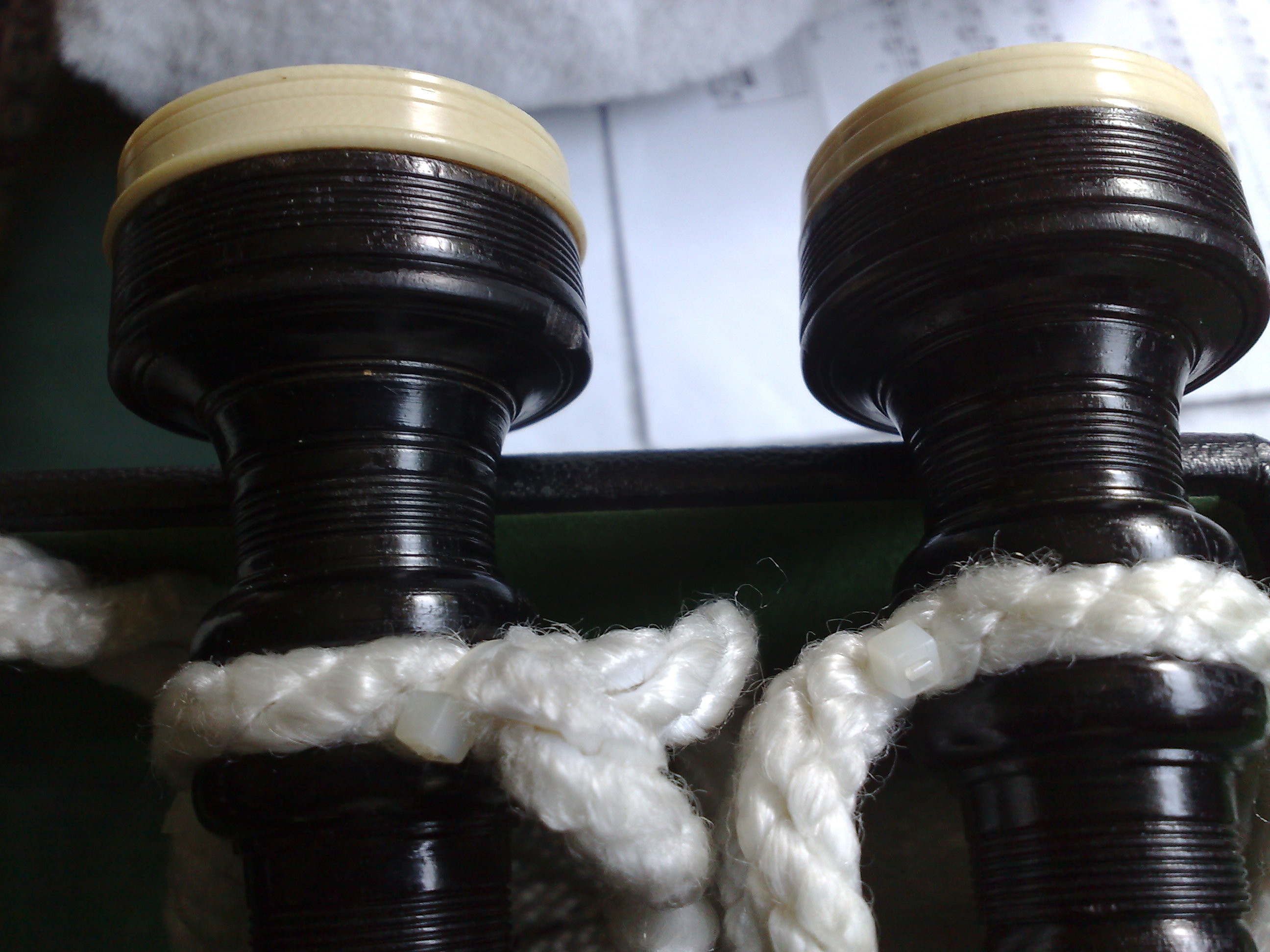
Side profile of tenors from Donald MacPhee pipes purchased in 1880. Hendersons look much more like these than other, likely earlier MacPhees. Image from Gordon MacDonald’s Island Bagpipe page: http://www.bagpipe-id.com/?page_id=284.
Now, let’s look at the tenor tops of three MacPhees vs three Hendersons. Notice the strong transition for MacPhee from an Ediburgh style of thick bells and wide,thin, ornate cord guides, to more of the traditional Glasgow style of shallower bells and more robust but narrow cord guides. There is definitely some resemblance between the documented 1880 MacPhee and all of the Hendersons, but particularly in the teens and twenties examples. Also note the double scribe lines just below the shoulder on the two outside MacPhees. This is also seen on some Hendersons and many Lawries. Recall, John MacColl, who became manager at R.G. Lawrie in 1908, worked for a year or more with Donald MacPhee in his shop and as a piping student.
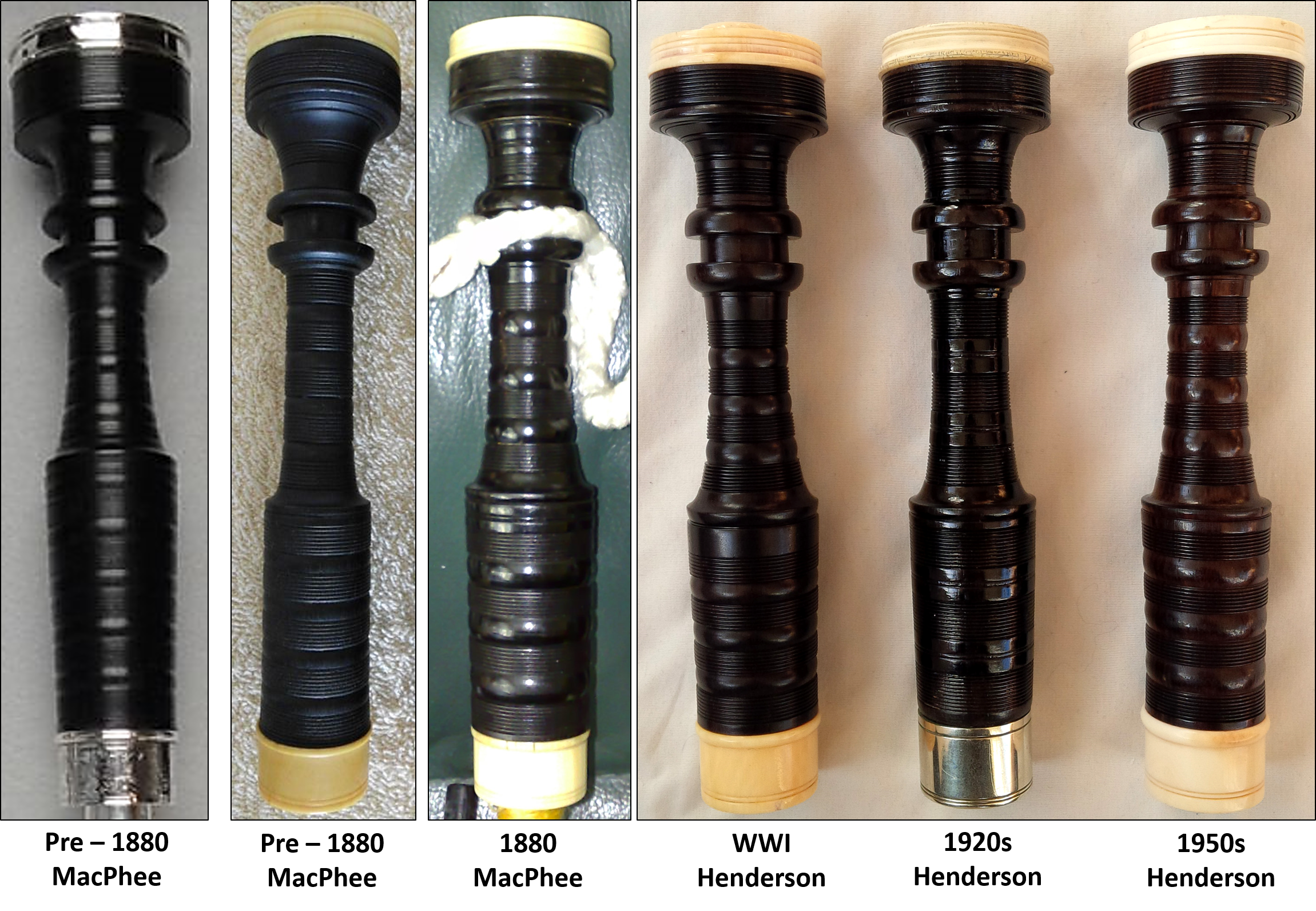
Three Donald MacPhees and three Peter Henderson pipes. One can see an Edinburgh style to more of the Glasgow look. First image from Jim McGillivray’s Vintage bagpipe page, 2 and 3 from Gord MacDonald’s Island Bagpipe page and last mine.

Here’s the maker’s mark of a Donald MacPhee bagpipe, near the top of one of the drones. It should be noted that MacPhee also marked his bagpipes with McPhie and McFie. Image adapted from Gord MacDonald’s awesome Island Bagpipe site: http://www.bagpipe-id.com/?page_id=284.
Peter Henderson had an untimely death at age 50 in 1902. However, over the previous 20 years the very successful model for Henderson bagpipes had been set. Peter’s brother Donald continued the business with the well-known and much-decorated piper, John MacDougall Gillies as a manager. Henderson bagpipes continued to be made until 1972 when R.G. Hardie took over the shop. It is interesting to correlate highly accomplished pipers with the design and execution of excellent sounding bagpipes; we can relate this fact to other makers, including R.G. Lawrie, and R.G. Hardie.
While we know that Peter Henderson was officially making bagpipes in 1880 with his purchase of Donald MacPhee’s business, by 1930 Henderson catalogues were listing an established date of 1863 — Peter Henderson would only have been 12 years old at the time! One might assume that the Henderson company was capitalizing on Donald MacPhee’s time turning bagpipes, but Donald was not officially listed as a bagpipe maker until 1871; before that he was a spirit maker. Perhaps Peter was truly apprenticing as a wood turner/bagpipe maker in 1863, and maybe some day this will be confirmed.
During Henderson’s long period of success, Henderson bagpipes went through a number of external and internal changes. Ron Bowen has divided these eras up into pre-1900, 1900 – 1920, 1920 – 1950, and 1950 – 1970s. There appear to be some clear and less clear differences among these eras. Henderson pipes made from 1881 until perhaps the 1930s, were commonly turned from cocus wood or ebony; these are clearly the most coveted sets. While African blackwood was listed as a material for an upcharge of 10 shillings in the 1900 Henderson catalogue/price list, this material really didn’t gain popularity until probably the 1930s. This is due likely to the more expensive and possibly harder to get blackwood as much as the diminishing supplies of cocus wood and ebony. Ebony is also notoriously difficult to work with, easier to crack than other woods, plus its hardness tended to dull tools. With respect to mounts, Henderson used ivory and blackwood up until the 1920s with casein becoming a cheaper alternative, then various grades of catalin from the 1930s (?) right into the 1970s. Other plastics were used in the 1960s and 70s. With respect to casein and catalin, I am of the volition that both of these alternative materials came in different grades and I will discuss this further below.
It is generally accepted that Henderson pipes were quite consistent up until approximately after WWII upon which there were as many lows as highs in quality. More on Ron Bowen’s pages and below. Here’s an image of what I believe to be a quintessential set of Peter Henderson bagpipes, my WWI era cocus wood and ivory set (more details on this set here):
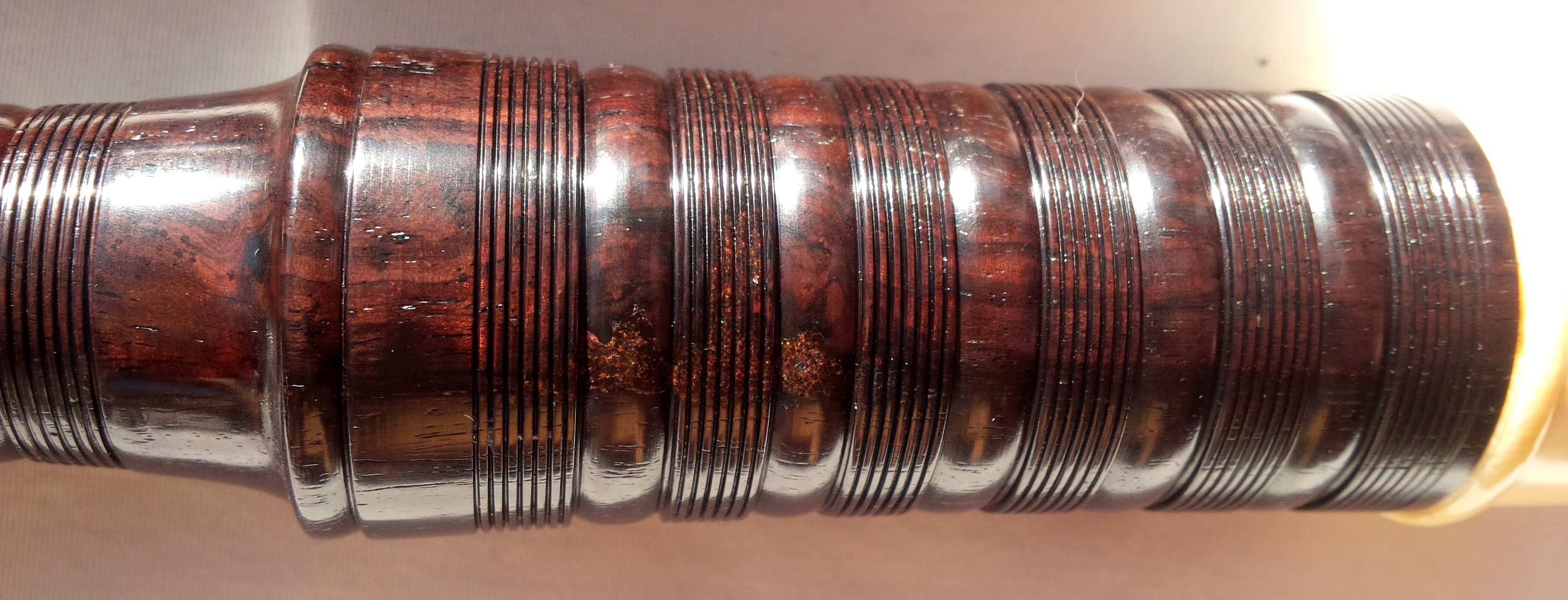
Here’s a close-up of the cocus wood in bright sunshine, with evidence of some invisible whipping in the combing on the WWI Hendersons. This wood will turn black out of the sunlight.
Here’s an example of more baseline but very popular with the military 1920s possible ebony wood-mounted Hendersons. What is interesting about this set are the ring caps and bushes which appear to be casein, but of a better quality type.
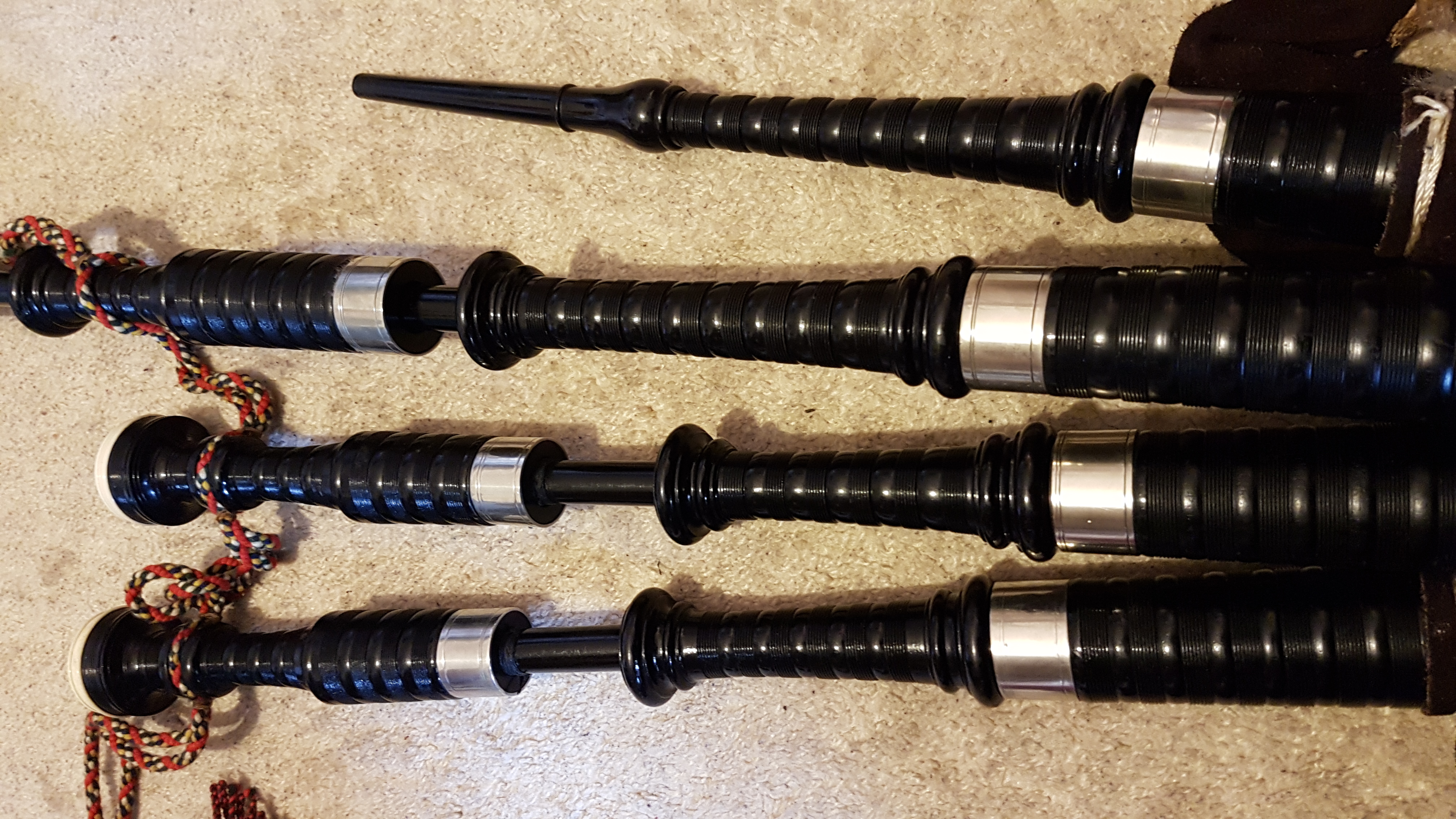
Profiles of the 1920s ebony and casein wood-mounted Hendersons. Earlier Henderson nickel ferrules were of good quality metal, hand-formed with seams, and very thick. Ron Bowen postulates that the earliest Henderson ferrules were of this type: thick, hand-formed, and with a seam.
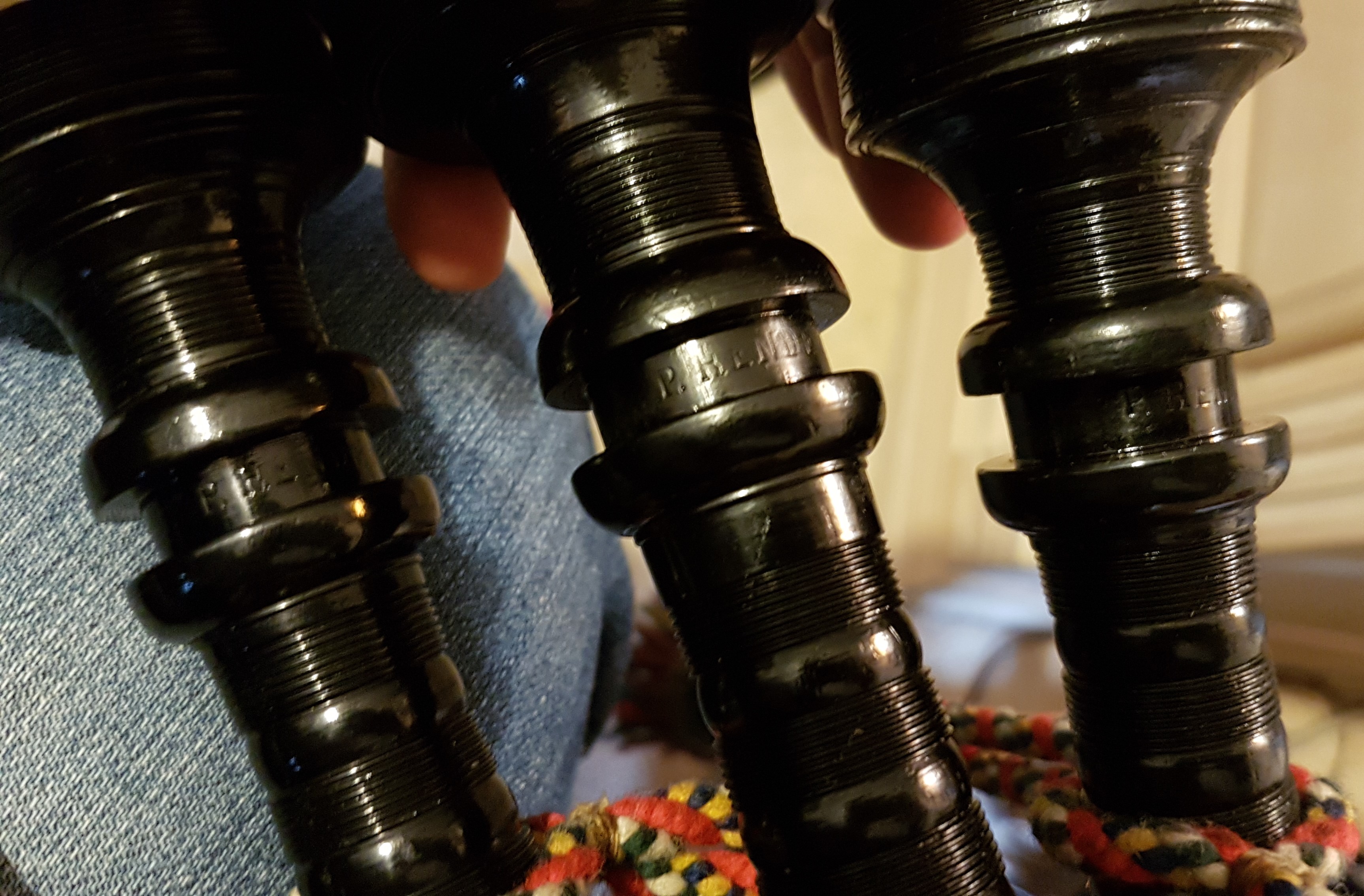
1920s ebony and casein wood-mounted Hendersons. These are marked on all three drones in between the guides, which is not as common as you think. Sometimes only one or no marks are found.
Heres
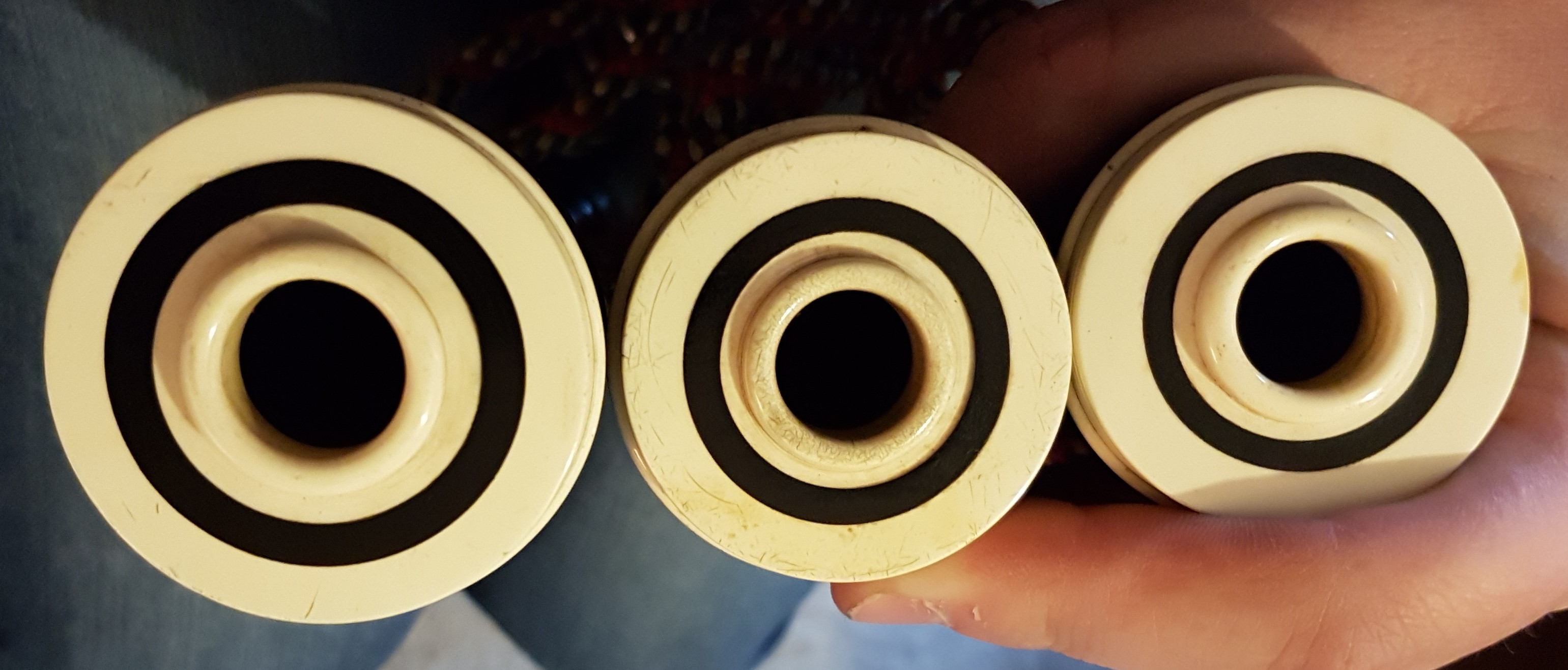
The what I believe to be very good quality casein ring caps and bushes on 1920s ebony wood-mounted Hendersons. The centre bush appears to be degrading a little but the rest of the mounts are in very good condition. Unfortunately, much of the casein used on Hendersons, Robertsons, and other pipes degraded much more than what we see here.
Here’s an example of the circa 1920s flat-combed ebony Henderson tenor top with casein that is much more degraded. In fact, the ring cap bead in crumbling.
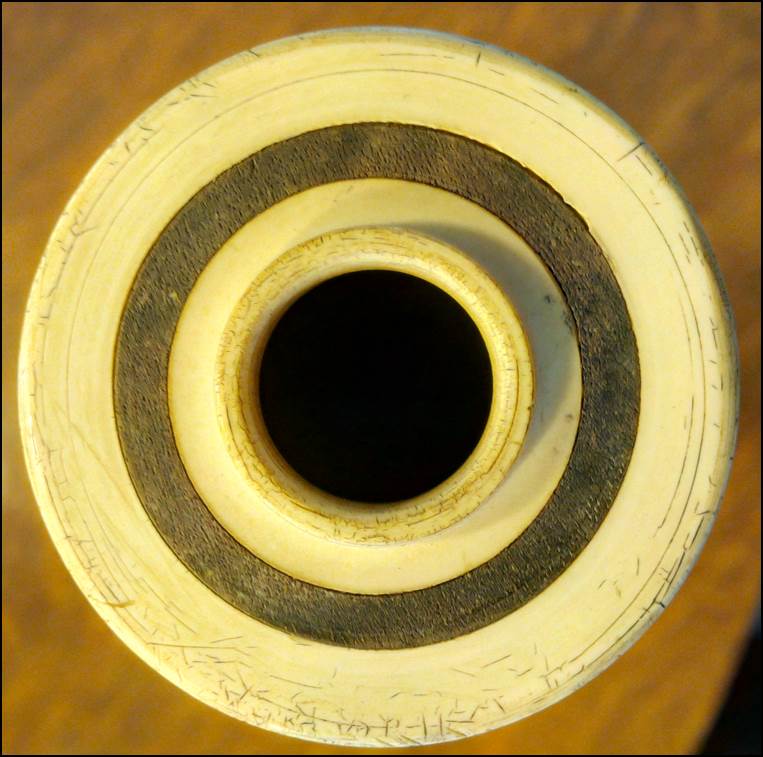
Here’s an example of casein on a Henderson that has degraded much more than the above pipes. Flat-combed, ebony and likely from the 1920s.
Peter Henderson bagpipes are now made under the R.G. Hardie brand. Both the Henderson and Hardie brands share the same internal dimensions (mostly Henderson, with Hardie stock bores). See Jeannie Campbell’s books, Highlands Bagpiper Makers and More Highland Bagpipe Makers, for more details.
Robert G. Lawrie (1881) (1900 – 1975)
Henderson and Lawrie are probably my two favourite vintage bagpipe makers. With all due respect to the other bagpipe makers out there, probably more competitions have been won on bagpipes from these two makers. The tone of the best instruments from Henderson and Lawrie is legendary, rich tenors and a bold cradling bass. Some suggest that the Lawrie tone may be more integrated and perhaps softer than the Henderson tone. However, both are considered boldish, bassy pipes. Some of the best pipers in the world played or are playing vintage Hendersons and Lawries. Of course, individual pipes well vary. While they are clearly distinct companies, the early relationship between these two men and their companies is very curious. We know that early pipes from both maker’s are very similar, in profile and tone. I myself purchased a set of cocus wood Lawries that turned out to be Hendersons. I have similar-looking early ebony wood-mount sets of each on their way to me and I look forward to comparing them.
Jeannie Campbell has unearthed much evidence about Henderson pipes in the earliest days, 1880 – 1900, and we have many examples of pipes from that era. The very earliest period for R. G. Lawrie seems to be much different; while he was listed as an ivory and wood turner in 1879 and his business was established in 1881, there does not appear to be any evidence that he turned bagpipes until 1900! I know that this is heresy for some as many have reported the fact that R.G. Lawrie bagpipes began in 1881. R.G. Lawrie has advertised 1881 themselves, but I believe that this was for bowling balls more than anything else! It appears like R.G. had considerable skill at turning an innovating, and had developed a fairly extensive sales distribution network. This would certainly serve him well in the future when his company began to commercially produced bagpipes. Check out the description below of R.G. Lawrie’s business operation from an 1888 business directory when he would have only been in business for a few years:
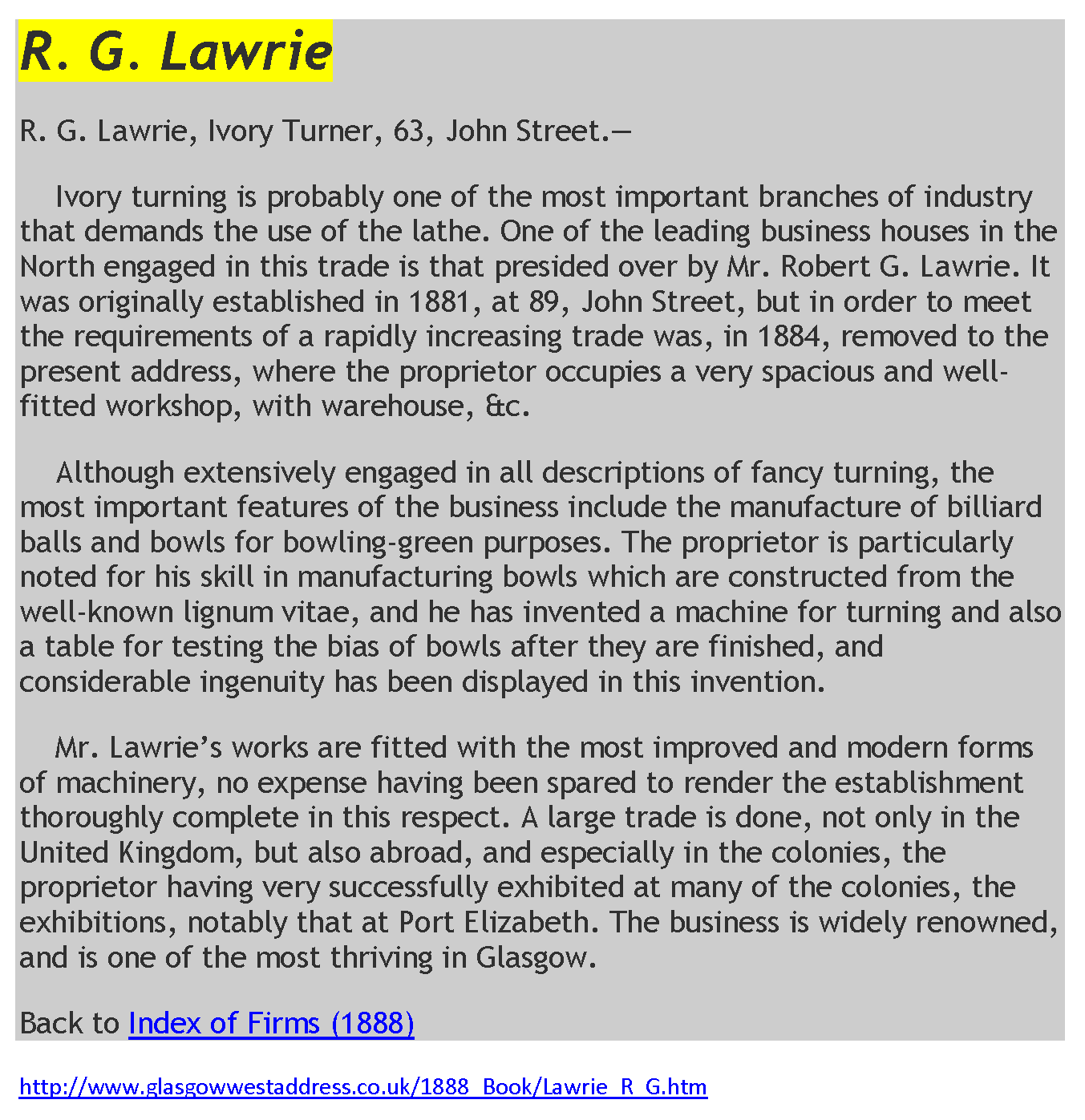
1888 Glasgow business directory description of R.G. Lawrie’s business. As you can see, there’s only reference to bowls and R.G. considerable innovative skills in ivory turning.
If Robert Lawrie was turning bagpipes in his operation (see fancy turning above?) before 1900 it was not a significant part of the business. Instead, it was the trade of bowling balls that Lawrie was focussed on. Check out the images of the balls below:
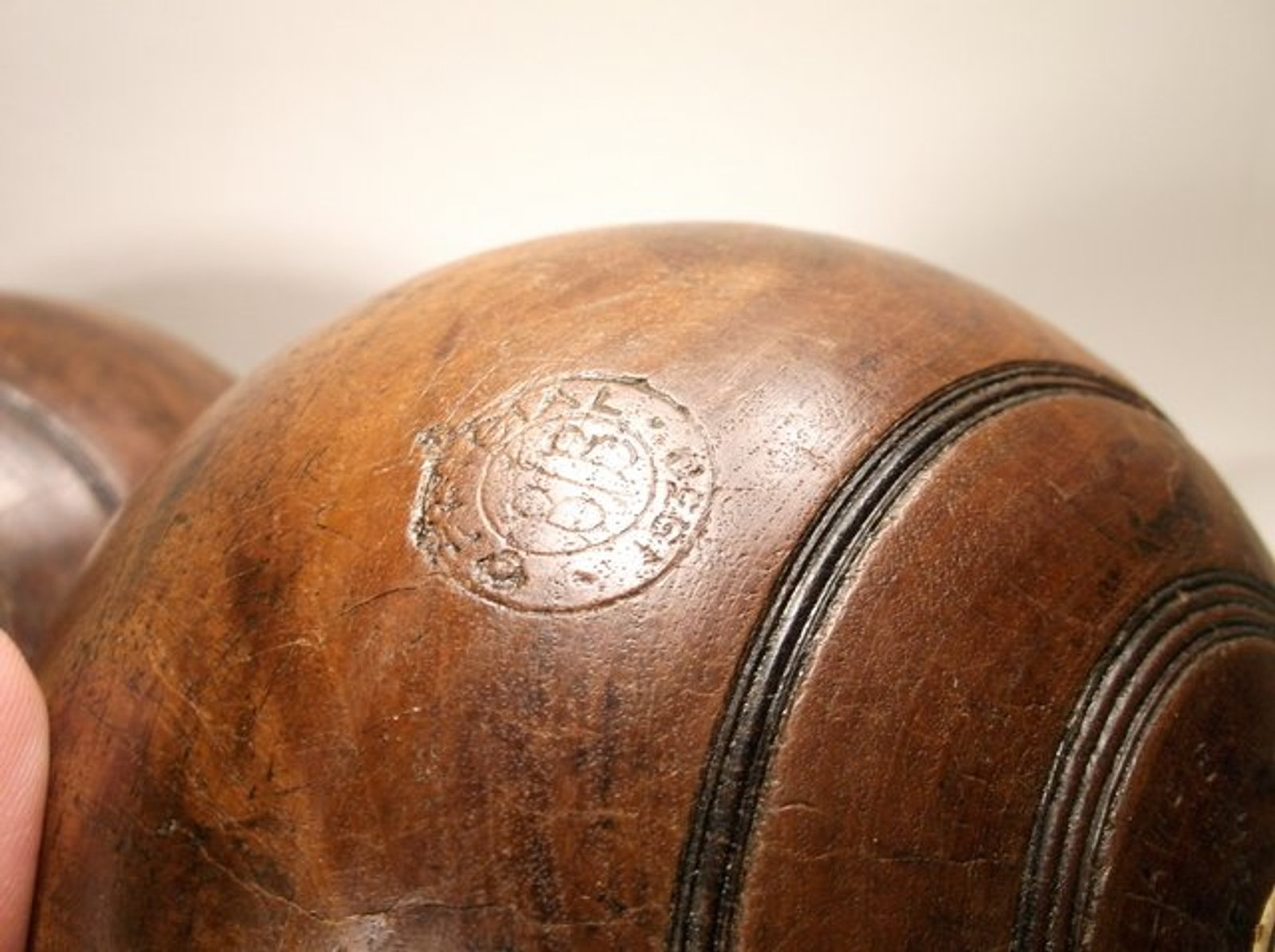
Counterweight on marked. R.G. Lawrie lawn bowling balls probably out of Lignum vitae. From Live Auctioneers.com
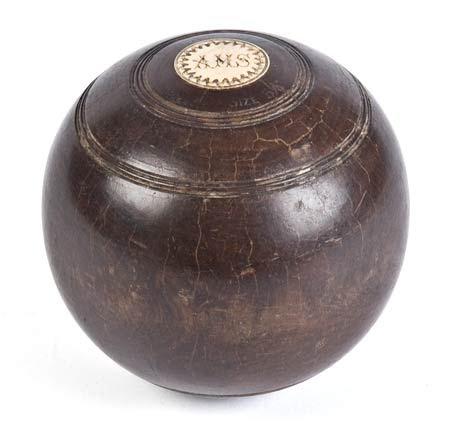
An early Lawrie lawn bowling ball, likely turned out of Lignum vitae. This set is decorated with initials in what appears to be an ivory applique. From the Lee Valley website.
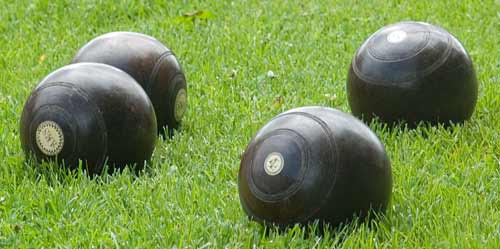
Early Lawrie lawn bowling balls, likely turned out of Lignum vitae. This set is decorated with initials in what appears to be an ivory applique. From the Lee Valley website.
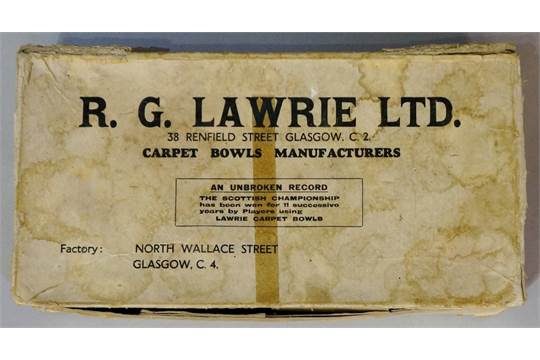
Package for later era Lawrie lawn bowling balls, likely turned out of plastic. Web address to follow…
I am postulating that R.G. Lawrie as a commercial bagpipe maker, was not a going concern until 1900 officially, but very likely unofficially, two to five years before that. There is no physical evidence I can find for R.G. actually turning any pipes or for a Lawrie bagpipe being produced before 1900. 1900 is the first documented date Jeannie Campbell has listed as R.G. Lawrie’s occupation as a bagpipe maker, but he was also listed as a bowl maker and ivory turner. Anything before this is reference to wood and ivory turner and/or bowl maker. The earliest known documented sets of Lawries I am aware of are a silver set with a 1900 date stamp on Jim McGillivray’s Vintage Bagpipes website and a 1901 silver set restored by Thomas Doucet. The latter bagpipe is the only known example of a marked Lawrie! In my recent correspondence with Jeannie Campbell she astutely points out that R.G. was a skilled turner and that pipes with engraved silver hallmarked in 1900 were not likely the first pipes he or his company turned! Very likely Lawrie was turning pipes in some capacity for a time before 1900 — we just don’t know at this point how long and for whom. Here are some images of the 1900 Lawries:
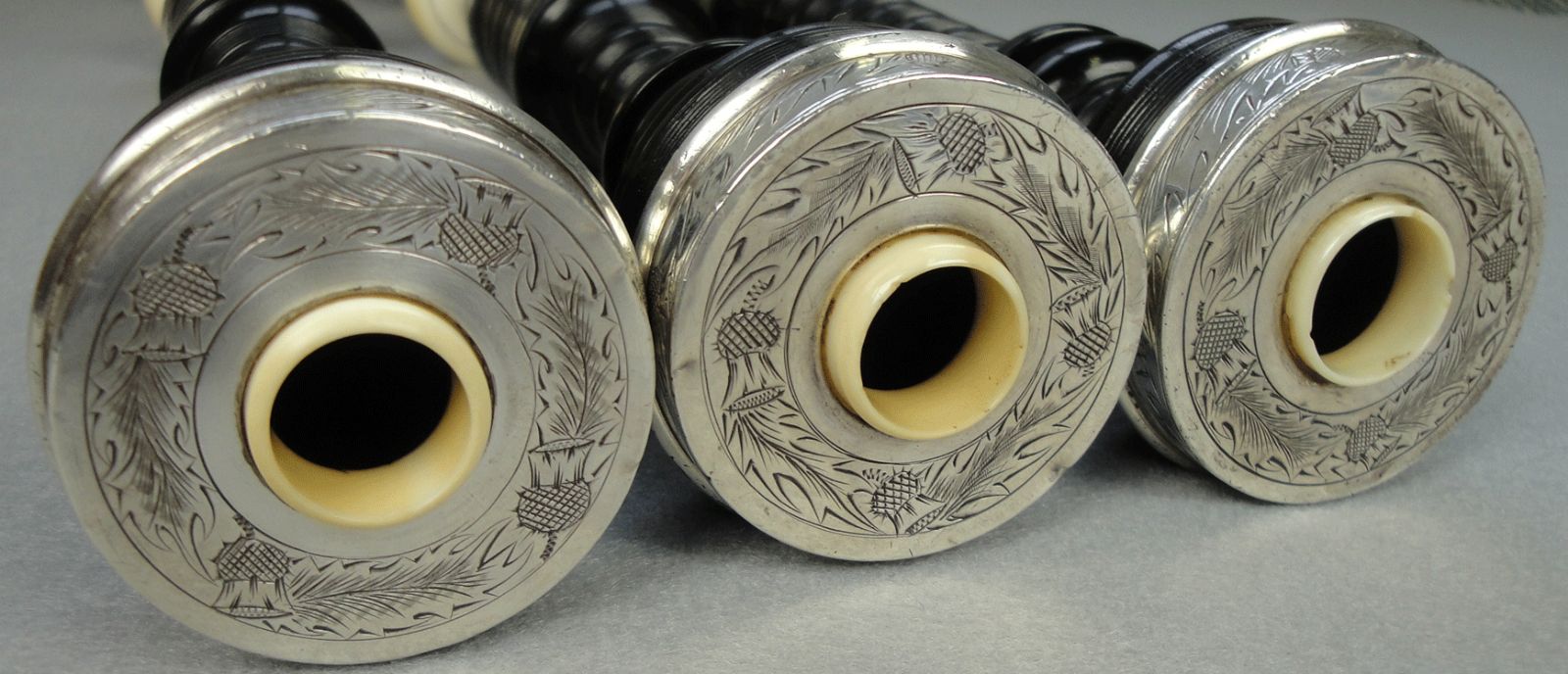
Drone tops of the earliest known documented Lawries that I could find: 1900 ebony, ivory, and hallmarked silver. Image from Jim McGillivray’s excellent Vintage Bagpipes Archive: http://www.piping.on.ca/browseproducts.asp?catID=155
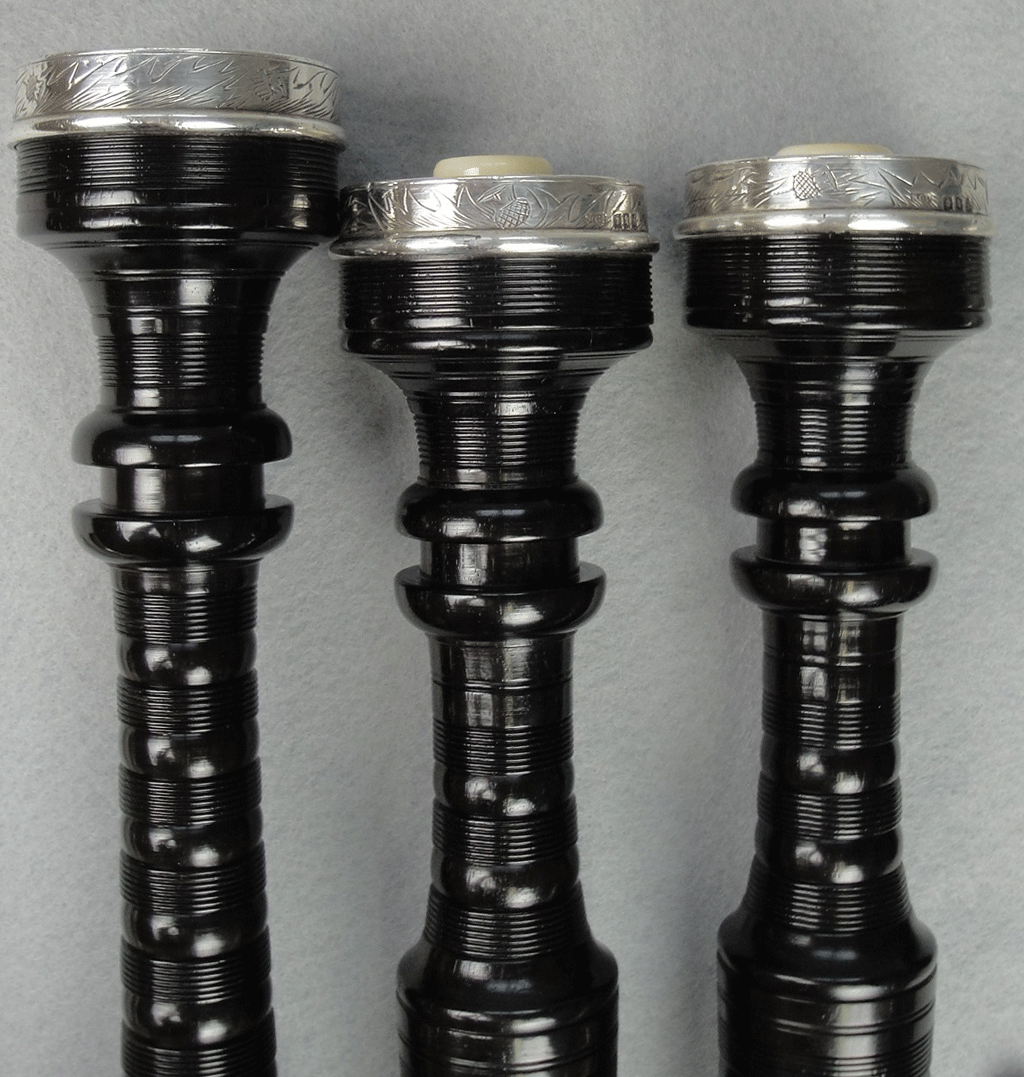
Drone tops of the earliest known documented Lawries that I could find: 1900 ebony, ivory, and hallmarked silver. Image from Jim McGillivray’s excellent Vintage Bagpipes Archive: http://www.piping.on.ca/browseproducts.asp?catID=155
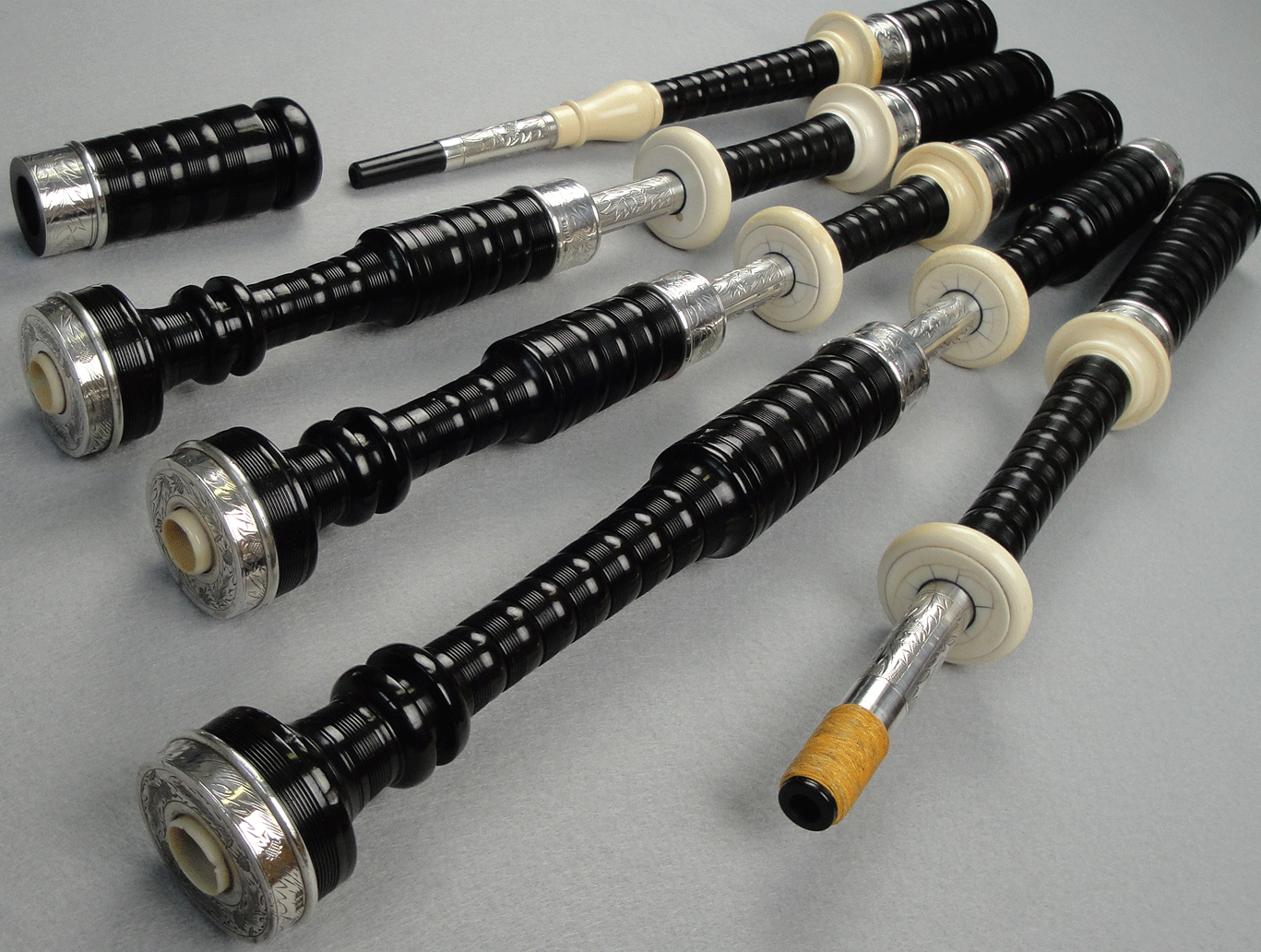
Full set of the earliest known documented Lawries that I could find: 1900 ebony, ivory, and hallmarked silver. Image from Jim McGillivray’s excellent Vintage Bagpipes Archive:
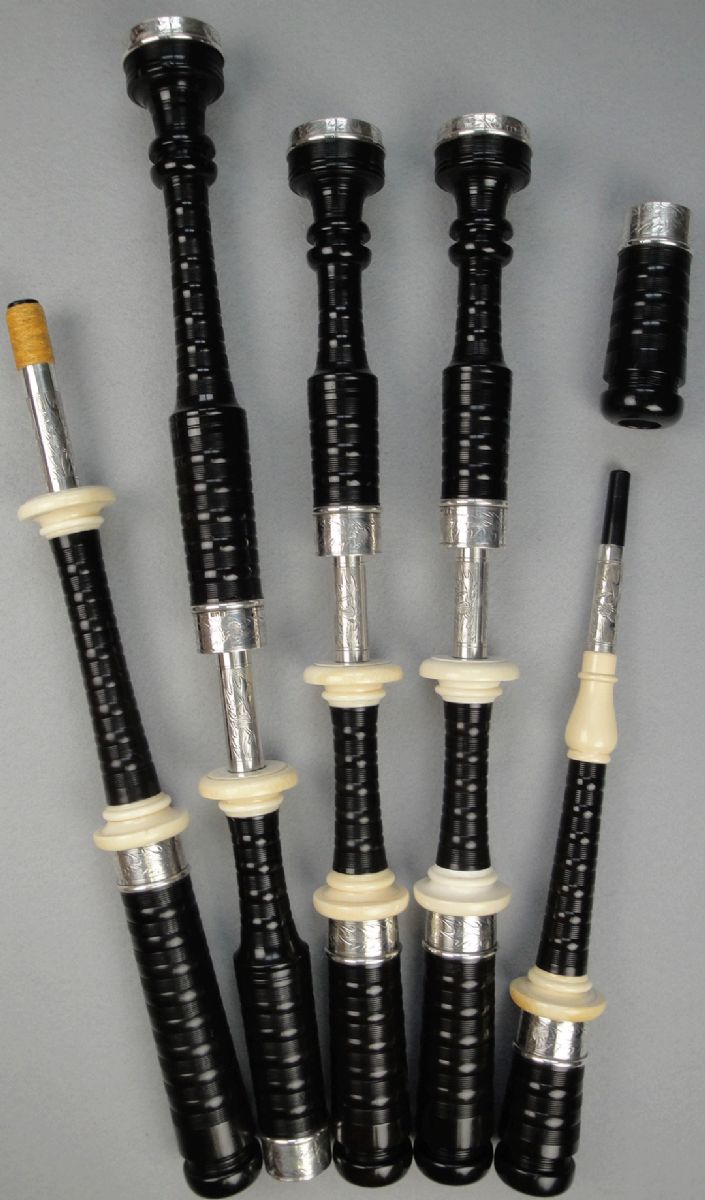
Full assembled set of the earliest known documented Lawries that I could find: 1900 ebony, ivory, and hallmarked silver. Image from Jim McGillivray’s excellent Vintage Bagpipes Archive:
Thus, all documented references to R.G. Lawrie bagpipe making and the bagpipes themselves appear from 1900 and onwards, and from this point forward there is a lot of it. Campbell notes that Lawrie advertised for two skilled bagpipe turner in 1902. There are also advertisements for bagpipes after 1900, via Lawrie and re-sellers. While the R.G. Lawrie company is officially listed as incorporating in 1881, what I have found pre-1900 is only reference to bowls (for lawn bowling, advertisements for such, and lawn bowling balls likely produced during this time and still available in auctions). Here’s an example of one of the more common Lawrie bagpipes produced during their early years, my ~1915 ebony and nickel Lawries with ivory bushes (read the interesting history behind these pipe here):
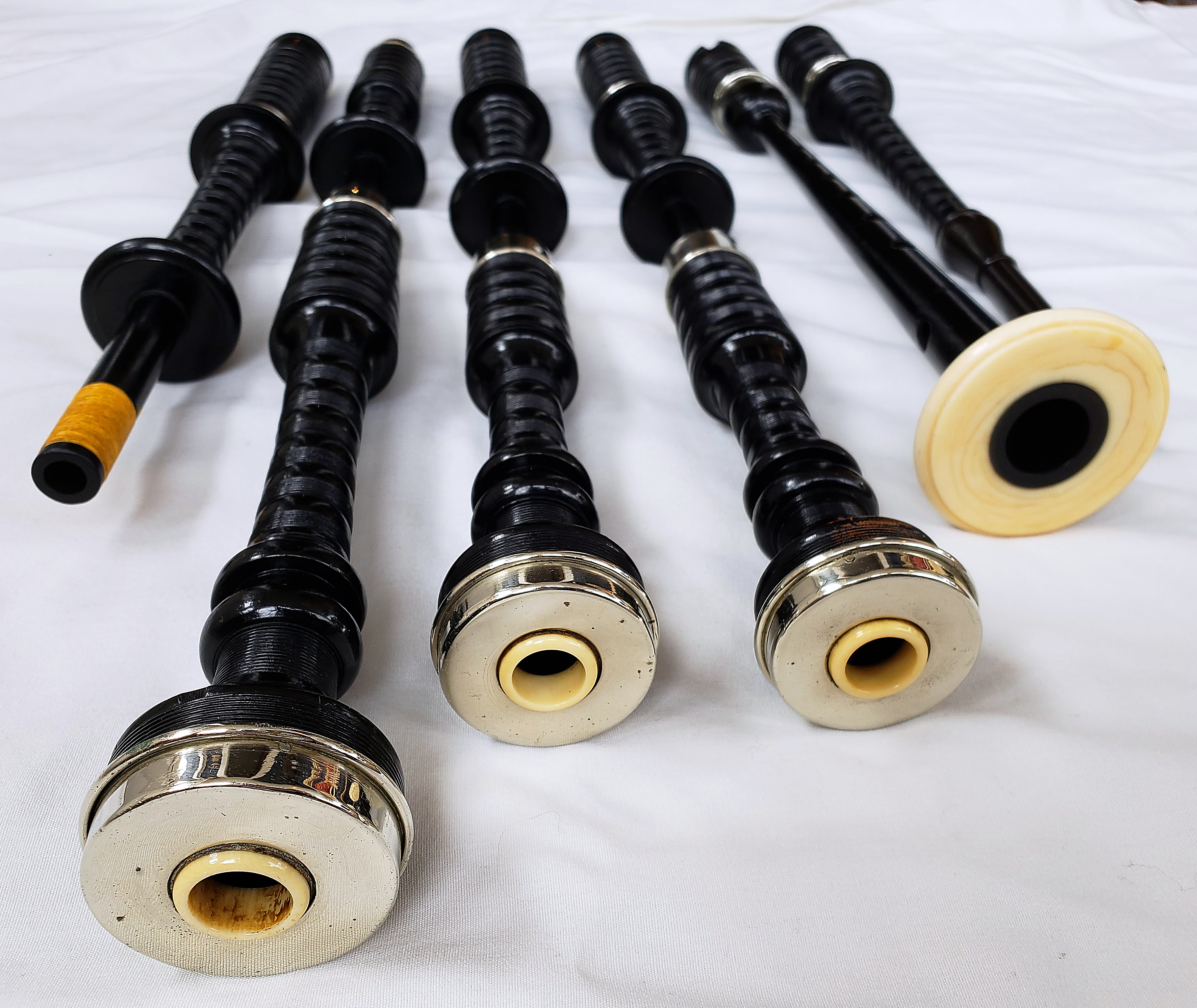
1915ish ebony and nickel Lawries with ivory bushes. These are ex-military pipes played in a civilian pipe band from 1920 until 2000.
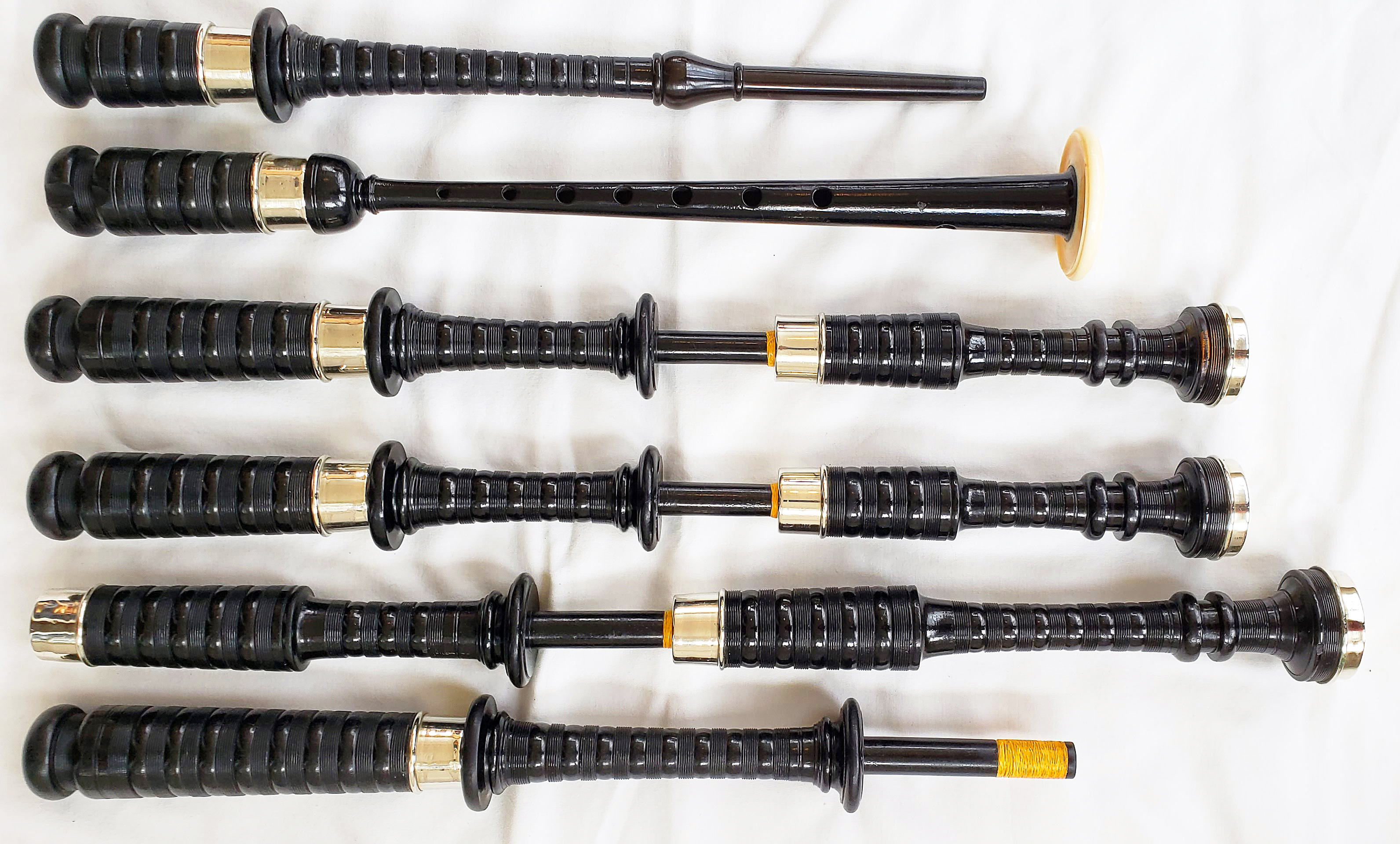
1915ish ebony and nickel Lawries with ivory bushes. These are ex-military pipes played in a civilian pipe band from 1920 until 2000. While it doesn’t appear to match the ferrule the chanter in an ebony Lawrie, too.
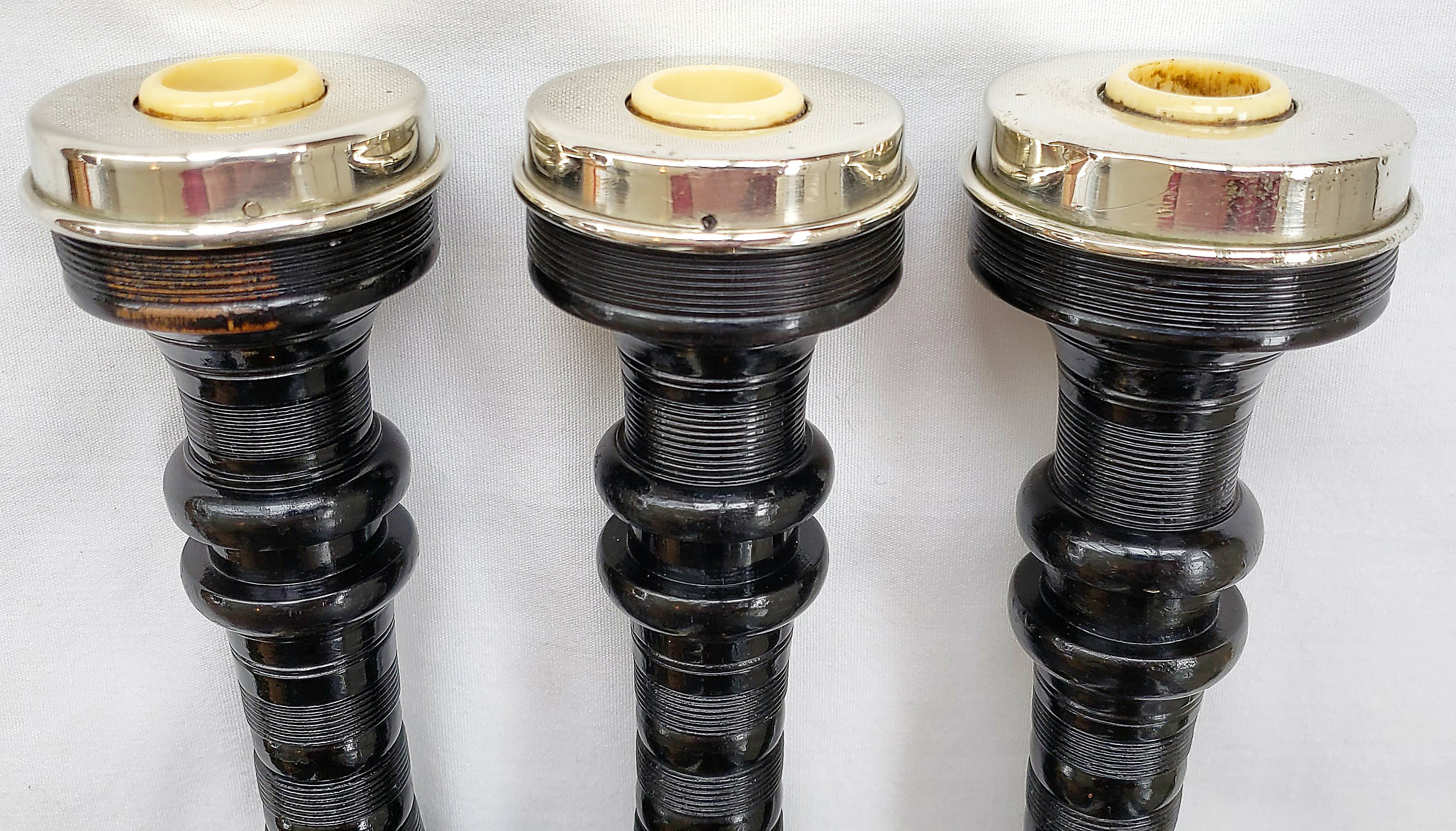
Drone tops of my 1915ish ebony and nickel Lawries with ivory bushes. These are ex-military pipes played in a civilian pipe band from 1920 until 2000. The bush bore sizes are the largest of any I’ve measured for Lawrie or Henderson.
While we are only discussing bagpipes here, it should be noted that R.G. Lawrie sold pretty much every bit and bob associated with piping, from reeds, to kilts, and other accouterments. I myself have a lovely R.G. Lawrie sporran.
So, what evidence do we have of a relationship between Peter and R.G.? They were close to the same age. The died relatively early within two years of each other (1902 and 1904, respectively). Their businesses were mere minutes apart by foot. The two Henderson shop addresses between 1880 and 1907, 17 Royal Archade (the former Donald MacPhee bagpipe business and Henderson business location until 1897) and the nearby 100 Renfrew Street were less than a 15 minute walk from R.G. Lawrie’s business on 89 John Street 1883/84 – 1890/91. Lawrie moved his business to 69 John Street 1891/1892. The close proximity of these businesses and skills shared between the two individuals strongly suggests that they knew each other and very possibly worked together; Peter and Robert must have known each other but to what extent we may never know. We can also assume that some workers spent time at both operations. Here are the known locations of the 1880ish Henderson and Lawries businesses overlain a contemporary Google Maps image:
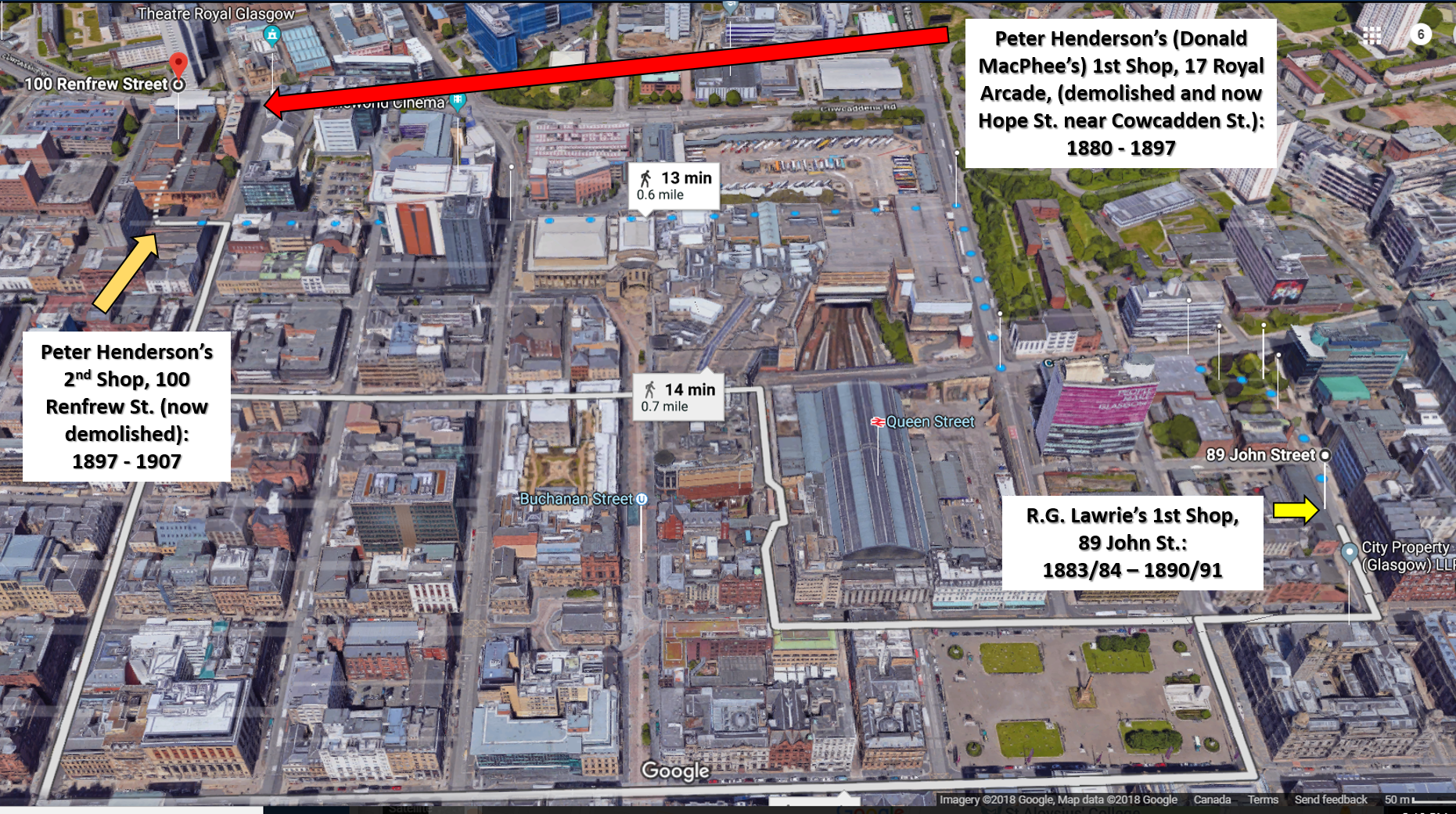
Location of the Peter Henderson Bagpipe shops and R.G. Lawrie’s 1st shop, which was presumably predominately for (bowling) ball turning. He moved his business to 69 John Street shortly thereafter. Hendersons and Lawrie’s businesses were a scant 13 minute walk from each other, strongly suggesting they knew each other and likely interacted.
Jeannie Campbell has suggested Lawrie worked for Peter Henderson at some point. Was R.G. turning pipes in Peter’s shop? Both shops opened at nearly the same time. If R.G. was working for Peter I would put forth that it may well have been in his own Lawrie shop at some point during the 1880-1990s. Perhaps as he became comfortable turning pipes for Peter he decided to take the Henderson design and put a Lawrie spin on it around 1900. We do know that Lawries and Hendersons looked a lot alike from at least 1900 right up until the 1970s! That said, there are some distinct details between Lawrie and Henderson bagpipes that we’ll explore below.
Another curiosity is where on earth are the photos of R.G. Lawrie and Peter Henderson, LOL?! We only seen to have that single lithograph of Peter Henderson playing pipes in full dress later years but nothing else. The families must have images or perhaps they are in archives somewhere — we certainly need to do more work here!
In any event, we do know that while R.G. Lawrie died in 1904, only four years after being first listed as a bagpipe turner and two years after Peter Henderson died. Thankfully Lawrie’s sons and grandson steered this business into success until around 1975. Many others helped along the way. Of particular note is that the famous piper and composer John MacColl managed the Lawrie bagpipe business from 1908 until the 1930s; John MacColl studied under and worked in the shop of Donald MacPhee — the Donald MacPhee Peter Henderson purchased the business from; we come full circle here. Other notably individuals worked at R.G. Lawrie, including Robert Reid, Albert Sheath, and Donald MacLean. See Jeannie Campbell’s books, Highlands Bagpiper Makers and More Highland Bagpipe Makers for more details.
The R.G. Lawrie name was purchased by Craig Lawrie in 2XXX. Craig is bagpipe maker. As of November 3, 2017, Neil Selbie has been listed as the company’s director, thus the Lawrie bagpipe business continues in some permutation to this day.
Robert G. Hardie
Robert Gavin Hardie started making bagpipes with Robert Reid around 1950 and a few years later took over the business. The company is till in existence as R.G. Hardie & Co. and they make RG Hardie and P Henderson bagpipes, which are only different in external profile; both sets are based on 1920s Henderson bores, with a lower bass section based on a Hardie bagpipe. More to come…
Henderson vs. Lawrie vs. Hardie
As noted above, Henderson bagpipes were the only ones usually marked (between or below the cord guides). However, there a many examples of partial or even unmarked Hendersons. Jack Dunbar of Dunbar Bagpipes worked at Peter Hendersons in the 1930s. He recounted to Ringo Bowen thats stamping the bagpipes was an onerous job entailing the use of one’s chin on top of a stamp; because of this stamping may have occasionally been done on only a single drone or not at all! Hendersons and Lawries In the early days, i.e., later 1800s to early 1900s, probably shared the same wood turners, thus adding to the confusion. The sound and look of Lawries and Hendersons from this early era may be virtually indistinguishable. There may well have been Henderson and Lawrie turners that worked for Robert Hardie! More below.
OK, this particular page is a bit of a mishmash of facts, figures, and images; thus, here are some ruminations on the great Henderson vs. Lawrie vs. Hardie vs. etc. debate, in no particular order.
Maker’s Marks
Clearly, obvious place to start is maker’s marks. I am going to start this section Lawrie and Hardie. Why? Because there is scant evidence that they actually marked their pipes. In fact, I can find only two examples of Lawries and Hardies being marked.
R.G. Lawrie Maker’s Mark
Thomas Doucet restored an incredible set of hallmarked silver, ebony, and ivory Lawries dated 1901 and has kindly allowed me to post the photos here. It is marked similarly to Henderson pipes as “R.G. LAWRI and GLASGOW, with these two words on either side of the very typical Lawrie double scribe-line on the tenor shoulder. Interestingly, just below the drone shoulder is where Donald MacPhee also stamped his name on some pipes, Here’s the mark:
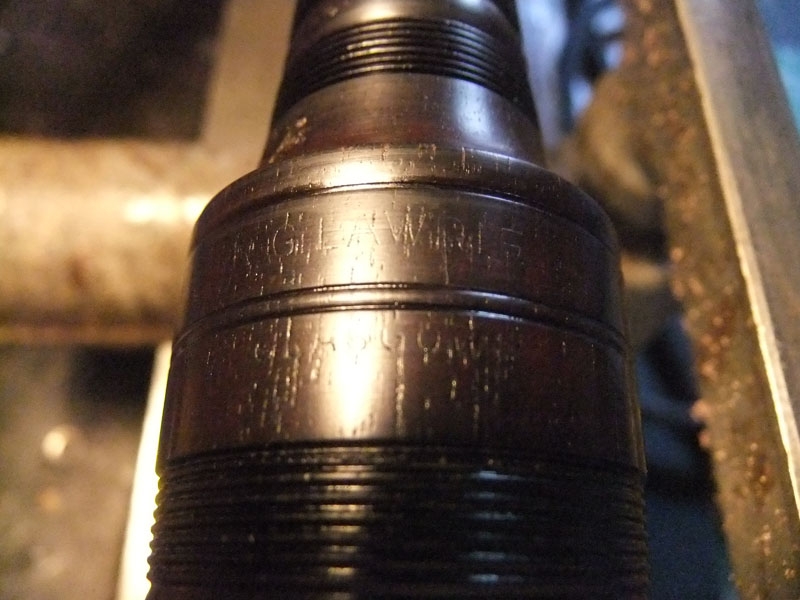
1901 hallmarked silver ebony and ivory R.G. Lawries with a maker’s mark: R.G. LAWRIE and GLASGOW on either side of the famous Lawrie double scribe line. Image courtesy of Thomas Doucet.
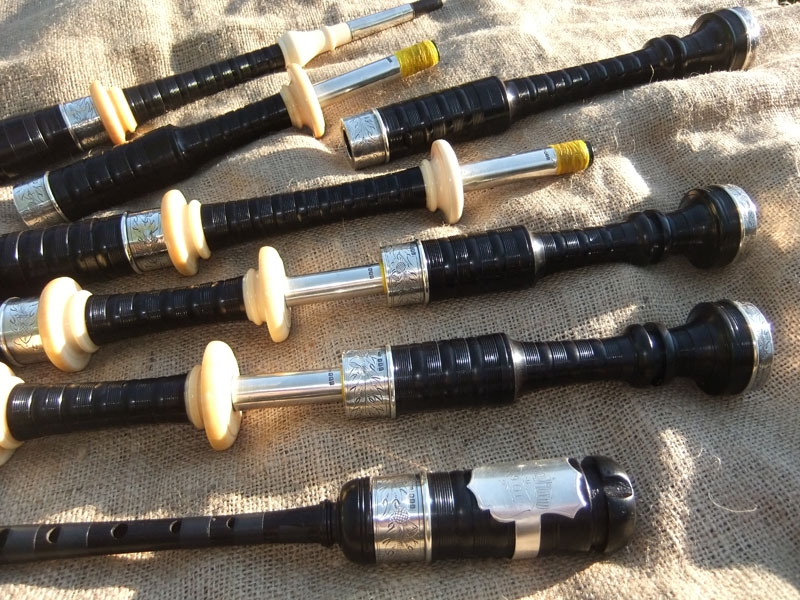
1901 hallmarked silver ebony and ivory R.G. Lawries with a maker’s mark. Image used with permission of Thomas Doucet.
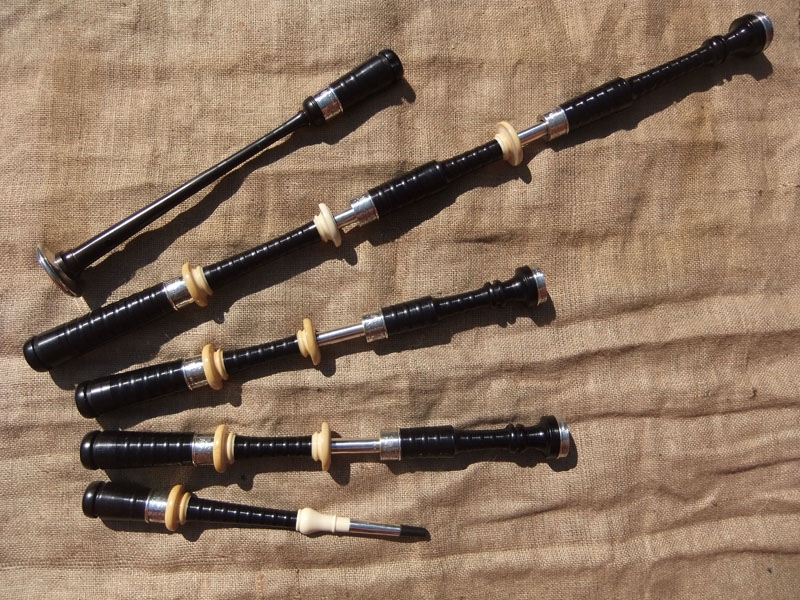
Full set of 1901 hallmarked silver ebony and ivory R.G. Lawries with a maker’s mark. Image used with permission of Thomas Doucet.

Drone tops and chanter stock on 1901 hallmarked silver ebony and ivory R.G. Lawries with a maker’s mark. Image courtesy Thomas Doucet.
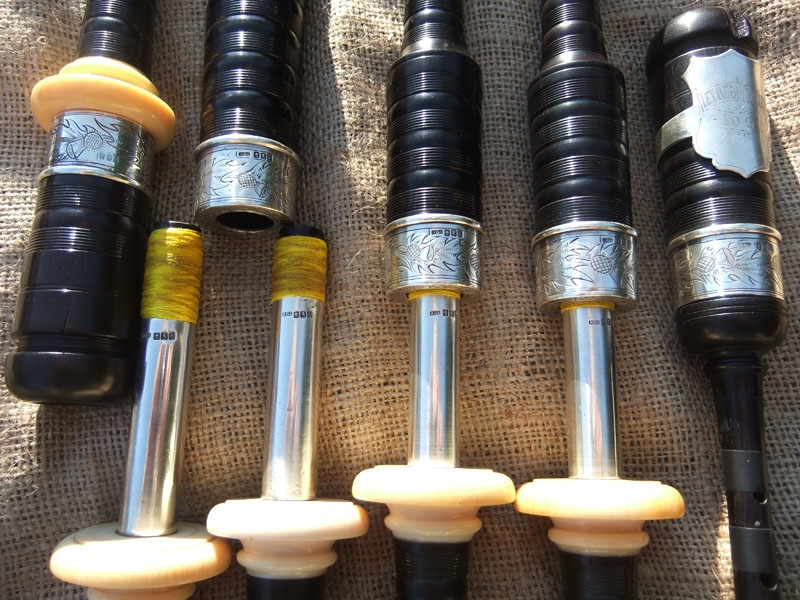
Hallmarked ferrules and slides with ivory mounts of 1901 hallmarked silver ebony and ivory R.G. Lawries with a maker’s mark. Image used with permission of Thomas Doucet.
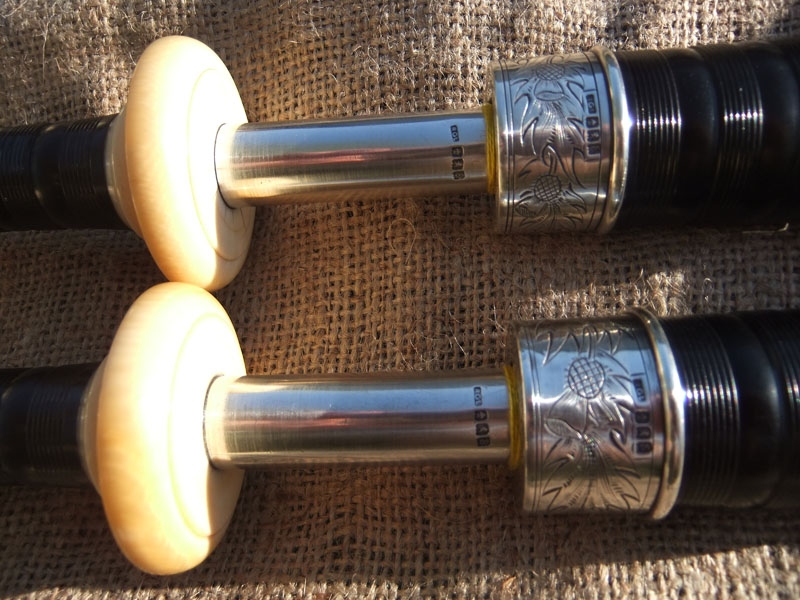
Ferrule and mount details of 1901 hallmarked silver ebony and ivory R.G. Lawries with a maker’s mark. Image used with permission of Thomas Doucet.
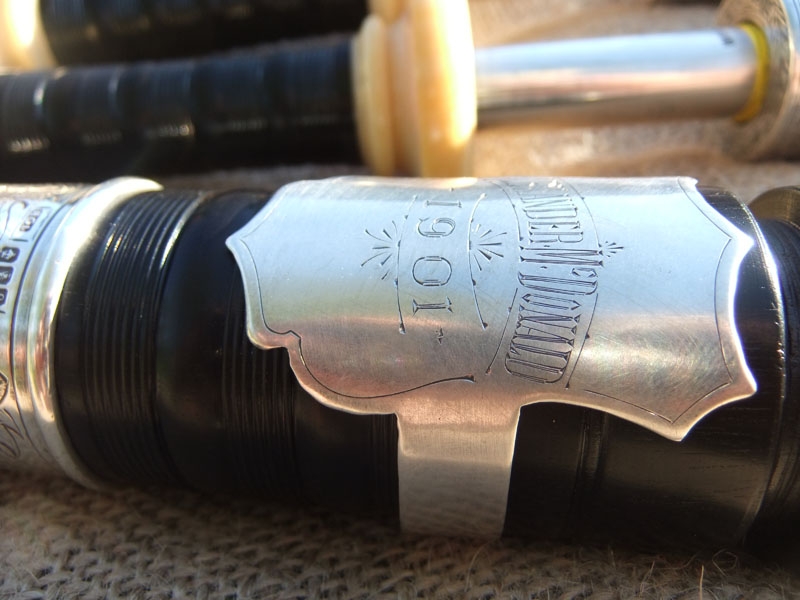
Detail of dated shield of 1901 hallmarked silver ebony and ivory R.G. Lawries with a maker’s mark. Image used with permission of Thomas Doucet.
R.G. Hardie Maker’s Mark
Like the lone stamped Lawrie bagpipe above, here is the single example I have found of a maker’s mark on an R.G. Hardie bagpipe. This set is likely 1950s to 1970s African blackwood with very orange catalin mounts and ring caps/bushes. The maker’s mark is, like most Henderson bagpipes, found within a tenor cord groove, but as “R.G. Hardie”. This set is interesting because it also sports the “crows foot” or more properly the broad arrow which has denoted items belonging to the military for centuries. I suspect that this stamp was the last thing done to these Hardie pipes before they went out the door to the military; the varnish has been opened up and wood is still visible where the dies cut in. The only other explanation — and it may be even more plausible — is that the military marked these pipes, hence the less-than-professional job. Nonetheless, here we have a set of marked R.G. Hardie bagpipes:
Peter Henderson Maker’s Marks
Ringo Bowen recently brought up the topic of dating Henderson pipes by their stamps.
From what I’ve seen I believe that there are at least five different combinations of complete stamps:
1. HENDERSON
2. P. HENDERSON
3. P. HENDERSON GLASGOW
4. P. HENDERSON LTD
5 P.H.
Throw in ‘unmarked’ with the above groups for good measure and there are at least six different ways Hendersons could come off the lathes. According to Ron Bowen, Jack Dunbar of Dunbar Bagpipes and who worked at Peter Henderson from 1934 to 1940, said that stamping Henderson drones was a physically demanding job. Those who were tasked with the job had to use their chin to help apply pressure to the die that was creating an impression on the drone cord groove. Bagpipe woods are characteristically hard. As a result, this job was avoided as much as possible and is likely why some many Henderson bagpipes are un-stamped or have only a single stamp (like a set of WWI Henderson’s I have with P. Henderson only on the bass drone cord groove). Here’s a direct quote from Ron on this from here: “We know that many Henderson bagpipe exist that are not stamped. The reason for this, according to a conversation I had with Jack Dunbar years ago, was that they HATED that particular job and would do almost anything to avoid it. The metal stamp was created in relief and affixed to a handle. Holding the device in a vertical position with the wood being between the bench and the stamp, the worker would place his chin on the handle and rock the device back and forth until the imprint was pressed into the wood. I can only image how one’s neck felt after doing this a few times.“
A period after the P may be missing in some cases adding to the mystery (but see below). Incorporation, i.e., using Peter Henderson company using Ltd. was around 1929 (Jeannie Campbell’s book). Glasgow was used on at least one silver set of Henderson’s hallmarked in 1929 (Ron Bowen, here).
I suspect that a wack of clear photos of the full ‘stamp’ for all the four or so suspected variants may reveal more information. This would require a series of images of the rotated drone to provide a complete picture.
As an example, while it might just be the angle, as I look at the image of the “P. Henderson” stamp on my own WWI Henderson bass drone I see that the “ P.” appears to be at a different angle than the rest of the stamp (disregard the undated description on the photo). The “P.” starts out parallel to the cord guides and then “Henderson” takes a diagonal diversion towards the top guide. Here are the series of photos:
Did the die slip during the stamping process or was the “P.” actually a separate die? Does that then mean “Henderson“, “Glasgow” and “Ltd” were also separate dies? We have evidence that some Henderson pipes were stamped simply as “Henderson“, so is it possible that a series of at least four dies existed? Perhaps there a series of combined dies, e.g., “P. Henderson” and “P.Henderson” that were used in conjunction with the suffix dies.
Kind of a long shot, but it might explain a few things. Why is there a space and no space between P. and Henderson? Why are there mismatched direction impressions as described above? Why is there the apparent lack of consistency with stamps and pipe dates for Henderson pipes?
Re the latter, my Henderson’s, stamped “P. Henderson“, have been dated at WWI vintage yet at least two sets of much later Hendersons have the same mark, including this 1970s set of Henderson’s, which is also in the cord groove. Here’s an image of those 1970s pipes — the ferrules have the thicker beads characteristic of later Henderson’s.
Recall, that there is also the stamp location, between the cord grooves (earlier?) or below the bottom groove on the drone (later?) that may be useful in the dating process. However, even this has not proved to be exacting, with some much later Henderson’s being found with stamps inside the cord grooves. Here’s an image of a later set of Hendersons with the stamp below the cord groove:
If there were indeed at least four separate dies, or combinations thereof, that facilitated a number of combinations of stamps, dating by the stamps will be a little more complicated. There must be some generalizations to be gleaned from this but perhaps stamps are not as useful for dating as we suspected.
Here is some more weight for the Combination of Single Stamps theory.
Below is a ‘military style’ flat-combed Henderson tenor drone top that has cap comprised of what I believe is casein. Experts suggest that casein fell out of favour to catalin in the 1920s. That would presumably date this piece from the early 1920s (?).
It is stamped P. Henderson Glasgow. Look closely at the series of photos. Not only do the three components of the impression appear to be separate, Glasgow may even be comprised of individually stamped letters. Another explanation is that the die was not very accurately made. More samples would be required to answer that last question.
Here’s a summary of the Henderson Stamp Theories (I hope I do Ron justice),
1) There are at least five permutations of Henderson stamps, and six if you count unstamped pipes.
1. HENDERSON
2. P. HENDERSON
3. P. HENDERSON GLASGOW
4. P. HENDERSON LTD
5. P.H.
I have only come across one example of a drone top being marked with the lone P.H., from Jim McGillivray’s excellent website, Jim posits that this pipe may be earlier than 1920:
A period after the P may be missing in some cases adding to the mystery (but see below). Incorporation, i.e., using Ltd. was around 1929 (Ron stating Campbell). Glasgow was used in at least 1929 (Ron’s example).
Stamps between the cord guides are thought to have been an early feature and this holds true up until at least maybe th 1950s (?) when the stamp was moved to below the cord groove — but only in some cases. There are lot’s of examples of post 1950 Hendersons with stamps between the grooves; it would seem that both locations were used for ‘later’ pipes. Thus…
2) There is very poor correlation between stamp and era of manufacture, if only because stamps on early pipes are also found on much later pipes.
P. Henderson has been found on WWI era and 1970s era Hendersons. Both are in between the cord grooves. However, many more examples would be needed to determine potential correlation, or lack thereof; perhaps there were batches of pipes produced with the exact same stamp.
3) The Combination of Single Stamps Theory. It’s not as dramatic as it sounds but “I” believe there’s strong evidence to suggest that Henderson pipes were stamped with a series of dies in different combinations, or possibly even individual letters (in some cases).
Eras of Confusion
The whole relationship among Henderson, Lawrie, and Hardie was almost incestuous. From what I understand with the information we have today, the confusion can be divided ‘somewhat’ into two groups:
Era of Confusion 1)
Between Henderson and Lawrie primarily in the early years, say late 1800s to maybe 1920s, and
Era of Confusion 2)
Henderson, Hardie, and maybe even some Lawries in the mid- to late years, perhaps 1950s to 1970s.
However, as we’ve seen from some of my previous images in this thread and the associated comments, those periods and groups are not clear-cut, at least with respect to the latter part of the period. For example, Ringo has an interesting note on his 1950 to 1970 Hendersons page which adds a little to the mystery. I hope he won’t mind me posting it here with one of the images:
“Be very mindful of bagpipes stamped Henderson but look like Lawrie or Hardie. There were some really strange things happening in the very late 60’s and early 70’s with Henderson. If you don’t know what you’re buying, write me and send pictures. Below is a set that so obviously made by someone who made for Lawrie that it’s not even funny. Yet, it’s stamped “Henderson” (picture to the right under the cord beads (holders) and the unsuspecting lay their money down.”
To add to this, in Jeannie Campbell’s book Highland Bagpipe Makers she writes the following:
Albert Sheath, who had been manager at Lawrie from 1946 to 1952 became the manager at Henderson in 1952. Bob McCreath took over in 1956 and continued until 1960. From 1961 to 1971 the manager was Greig Sharp, who went on to found Kintail. Pipe making at Henderson ceased in 1971 but the shop was supplied with pipes made by Lawrie until 1973 when the Henderson family sold the business to R G Hardie.
While there appears to be much confusion among Henderson, Lawrie, and Hardie, we do have a few key aspects which can help us to decide what pipes we have. To help sort this out I’ve arranged the information into two Eras of Confusion…
Era of Confusion 1: Henderson vs Lawrie (1880s – 1920s)
Drone Tops
TBA, but let’s start with a comparison of drone tops put together by Gord MacDonald of Island Bagpipes; this shows a lovely progressionn of gently-sloping to almost 90 degree fountains on the drone tops. Note the differences between Lawrie and Henderson. These differences, more or less, remained up until the 1970s. I will add RG Hardie soon for comparison.
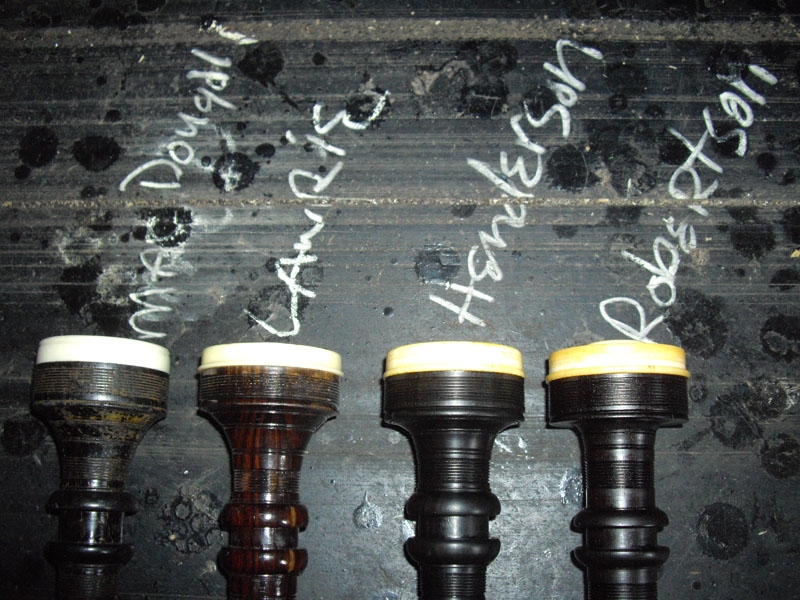
Drone top composition by Gord MacDonald of Island Bagpipes. This shows a lovely progressoin of gently-sloping to almost 90 degree fountains on the drone tops.
More to come…
Era of Confusion 2: Hardie vs Henderson vs Lawrie (1950s – 1970s)
Let’s start with comparing a known set of RG Hardie pipes with other Hardies, Hendersons, and Lawries. This section uses my buddy Nick’s pipes, which were actually recently indentified as Hardies, to demonstrate differences between 1950s to (mainly) 1970s Hardies, Hendersons, and Lawries.
Here are some side-by-side images of “Nick’s” pipes and Hardies, the latter being from Island Bagpipes and The Bagpipe Museum — there are some strong similarities between the comparisons:
Nick’s Pipes (Hardie) vs Hardie!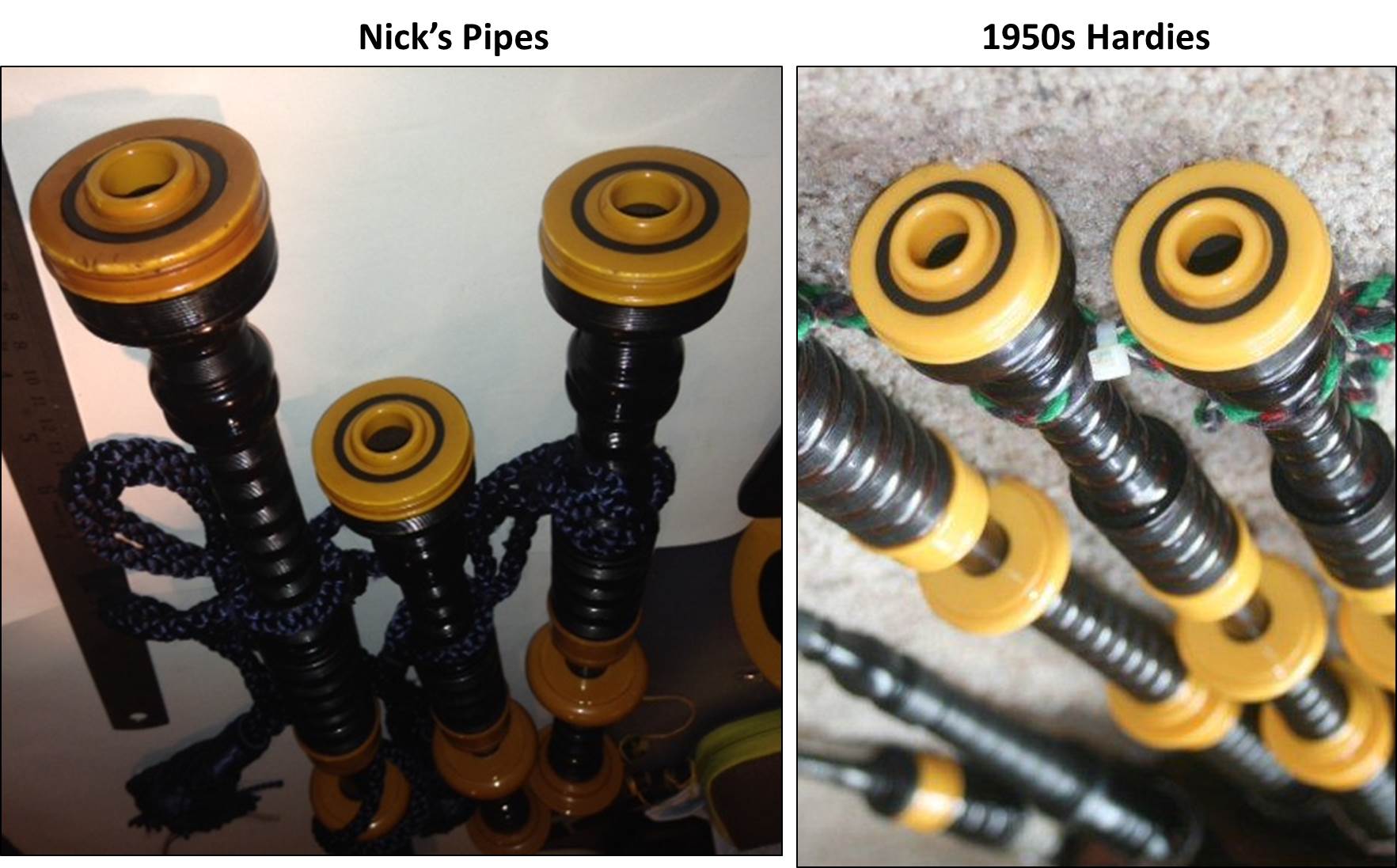
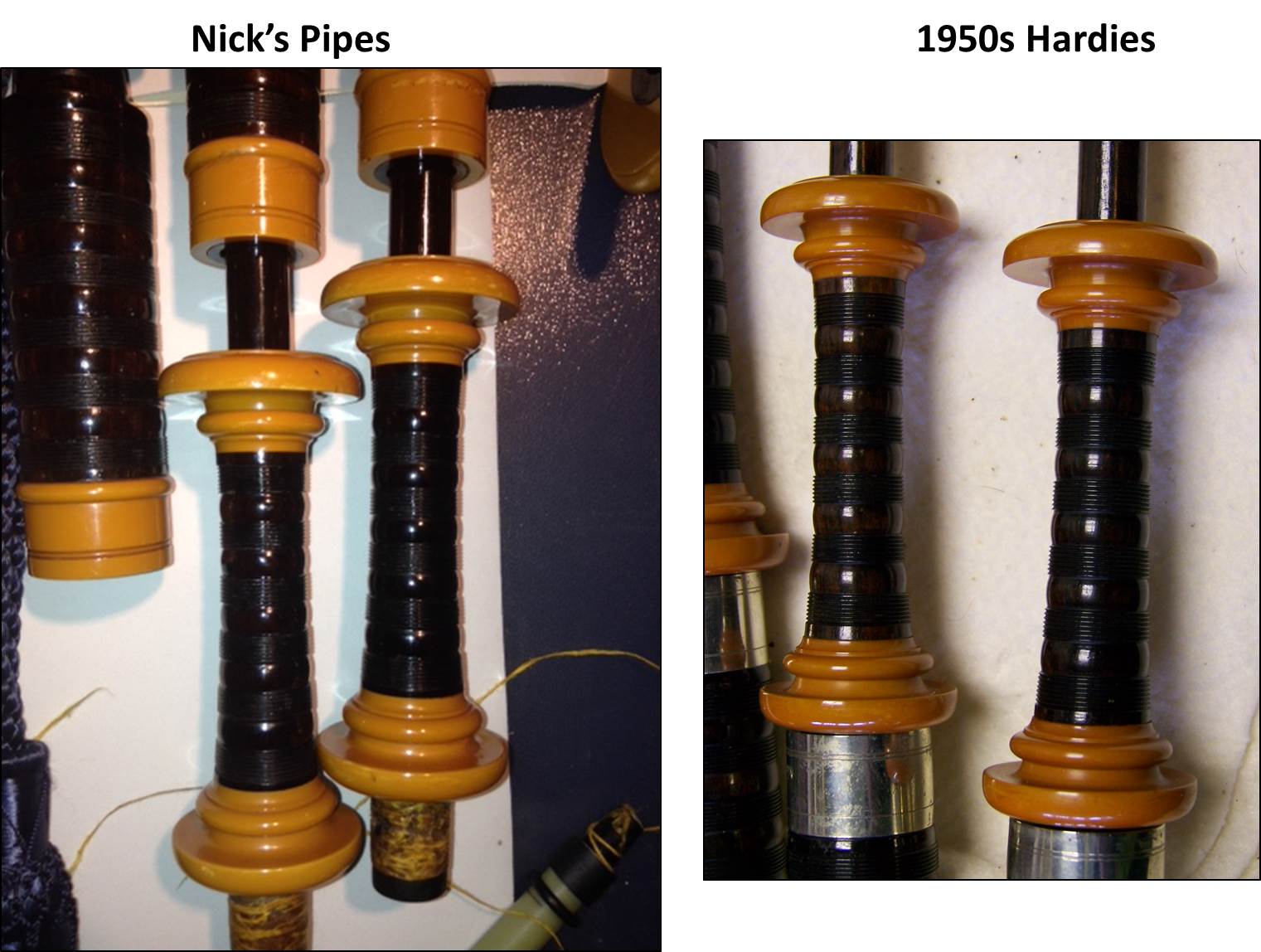
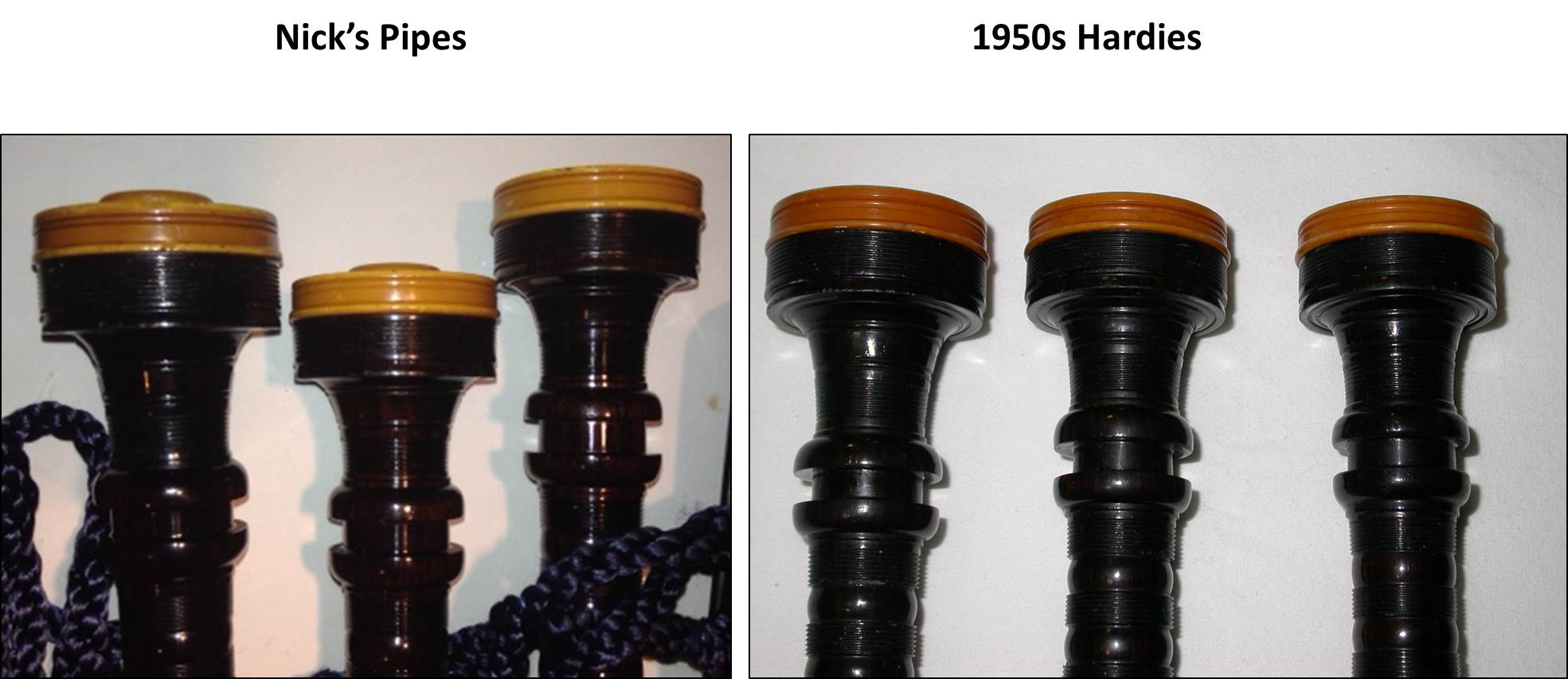
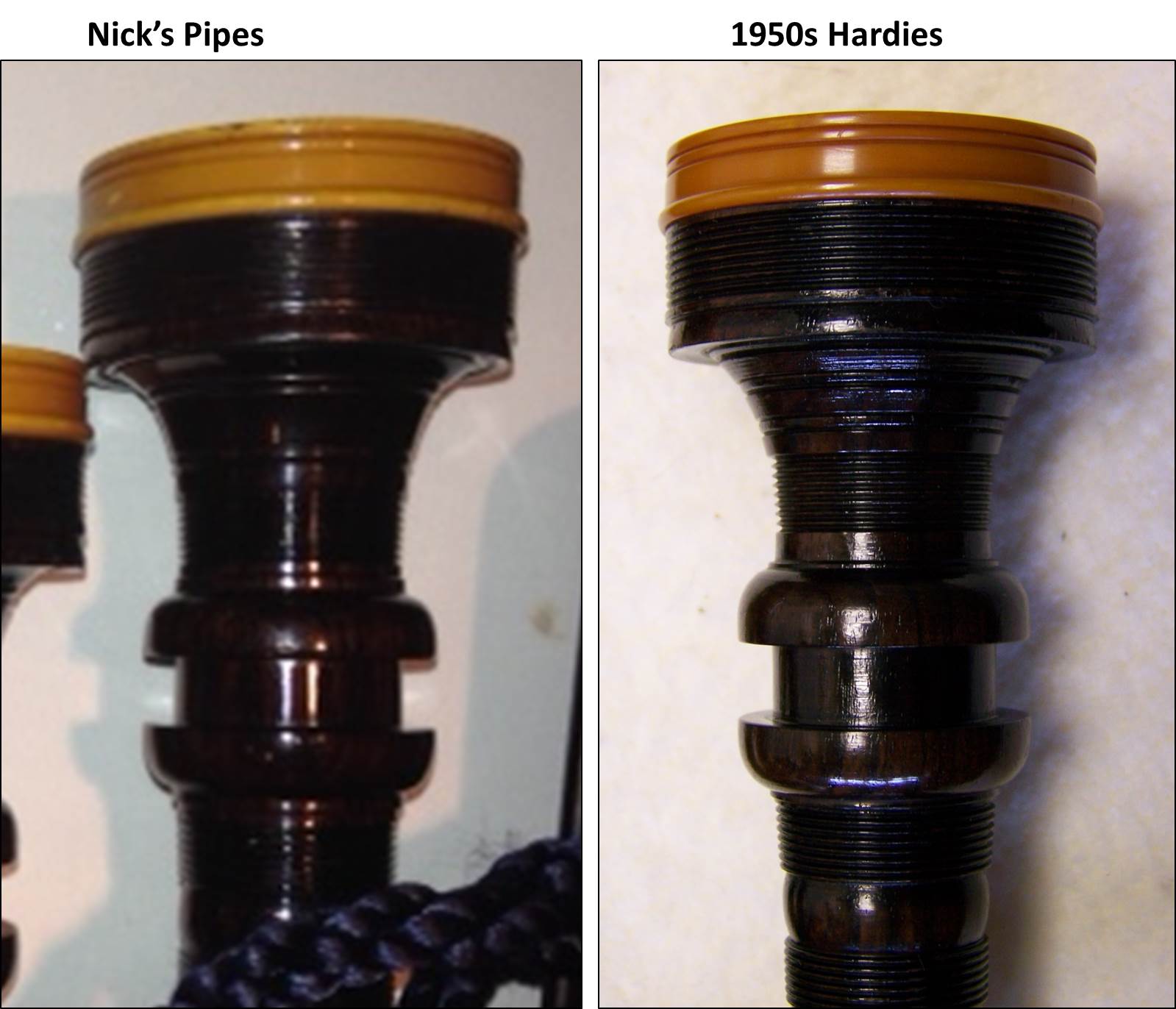
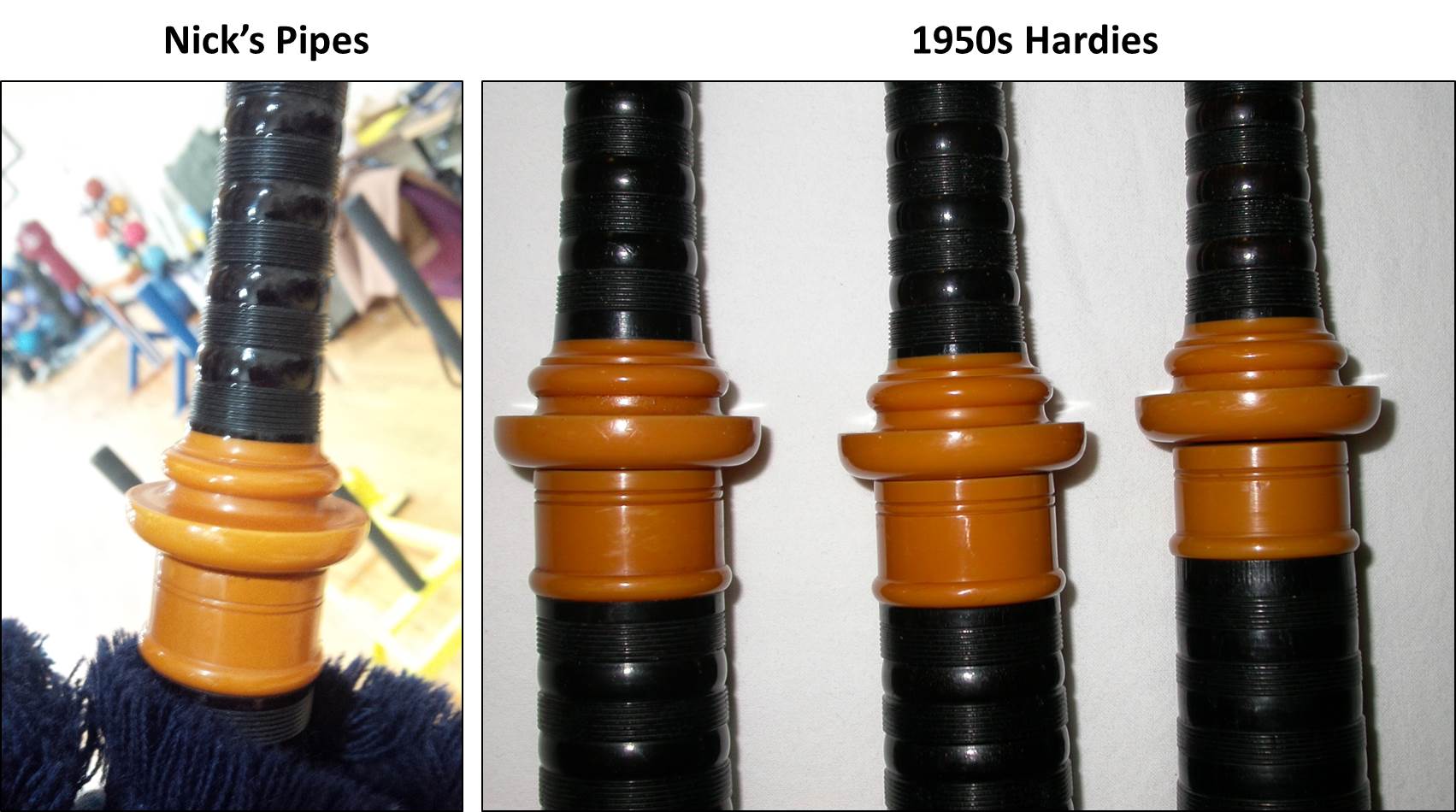
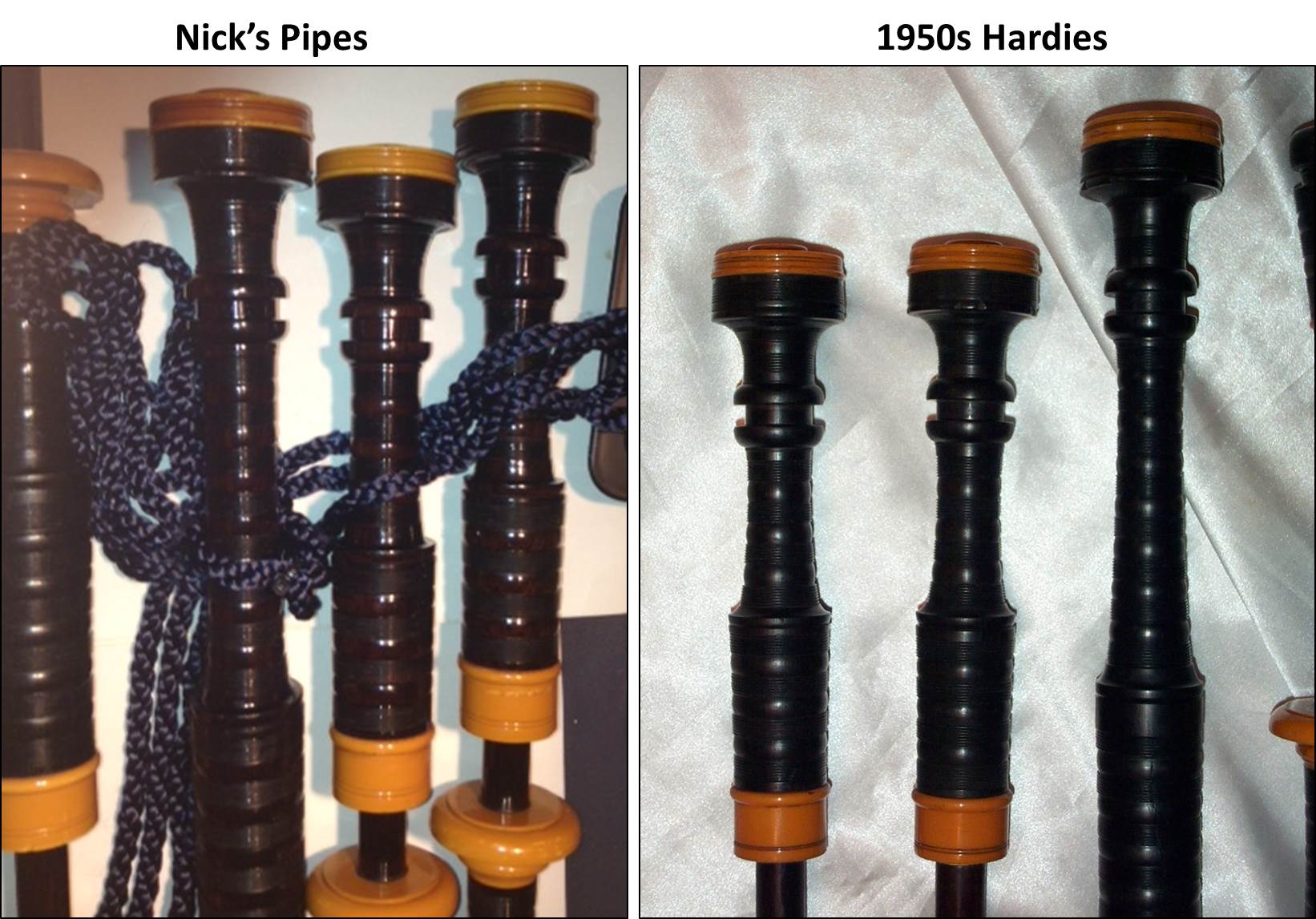
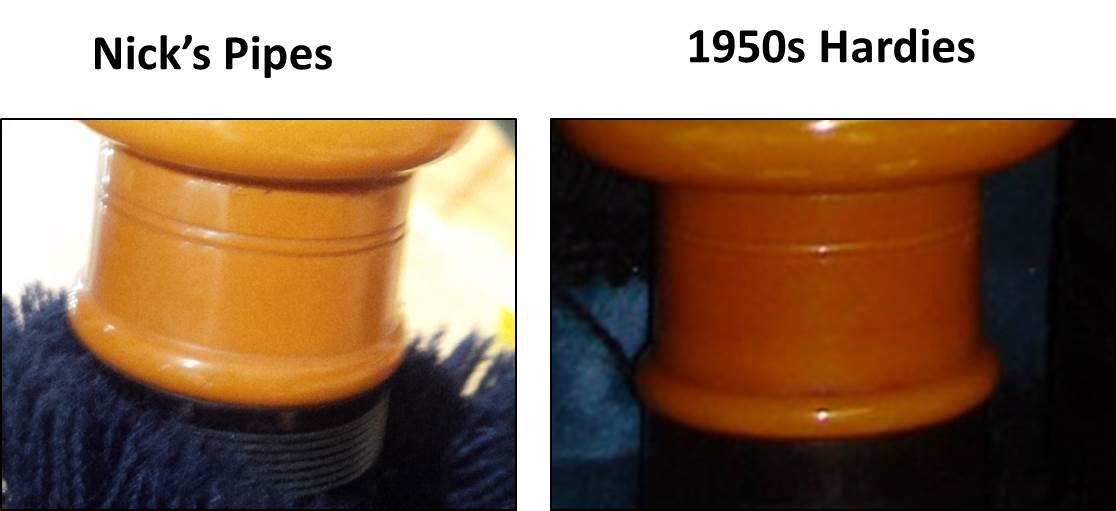
Hardies & Hendersons
Now here’s the same comparison of Nick’s pipes, but with Hendersons — I think that there may be fewer similarities in this comparison but not enough to completely eliminate Henderson (?) (images same sources as above):
Here are a few images where I’ve added labels from Gord MacDonald’s excellent Hardie vs. Henderson resource on Island Bagpipe:
Hardies & Lawries
Finally, a third comparison: Lawries. I couldn’t find a ton of good images of later Lawries so there’s the odd 1940 vintage included.
The fountain on later vintage Lawries are not as distinct as the earlier Lawries, which had less of an angle. However, the 1968 Lawrie still has the distinct fountain, IMHO. Beads, at least in the example I posted, the differential appears greater in the Lawrie ferrule beads. The shoulders on the Lawries seems to angle outwards more — Nick’s pipes have a more square profile. After looking at this comparison I think I’m still leaning towards Hardies…
..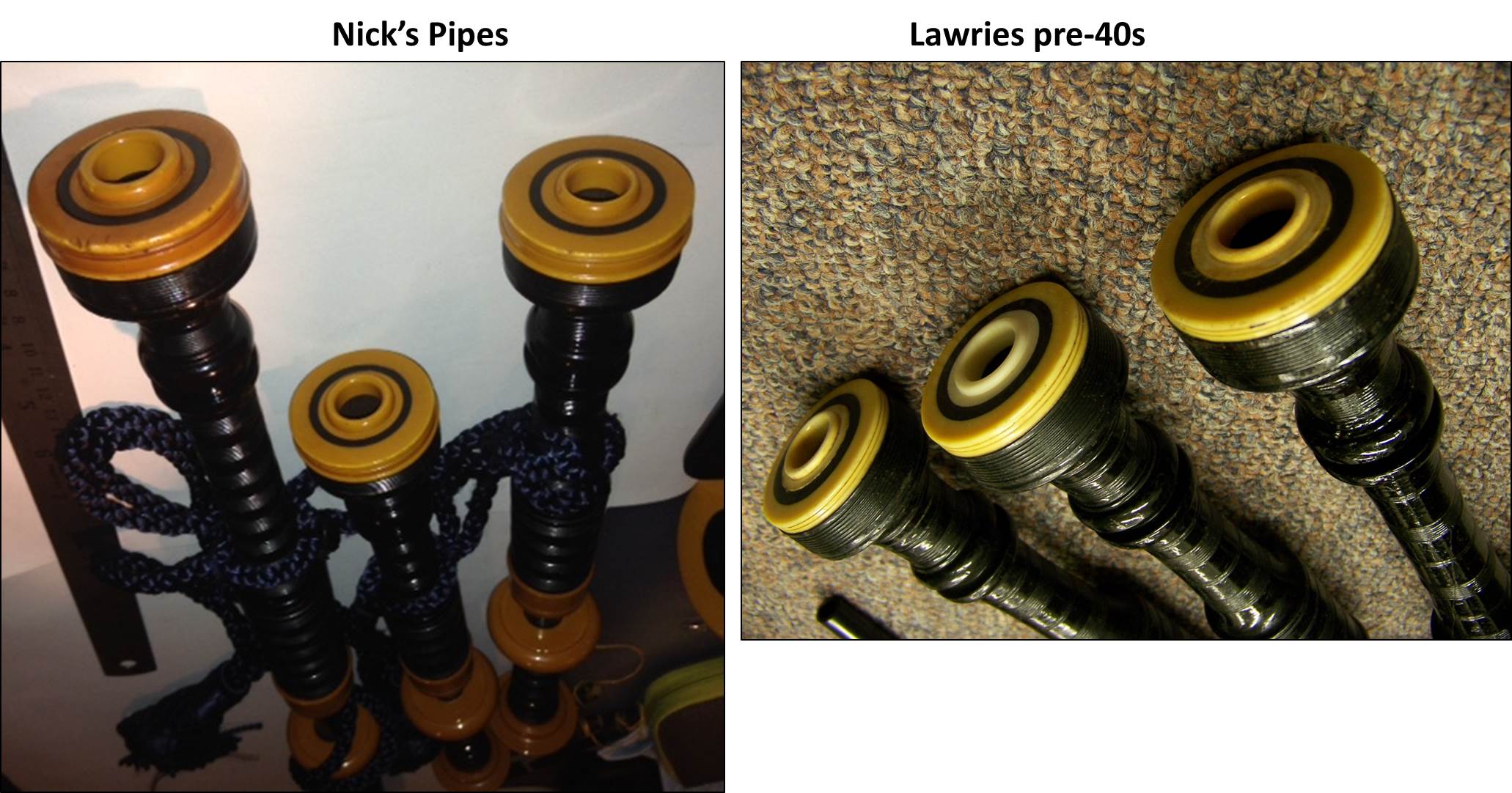
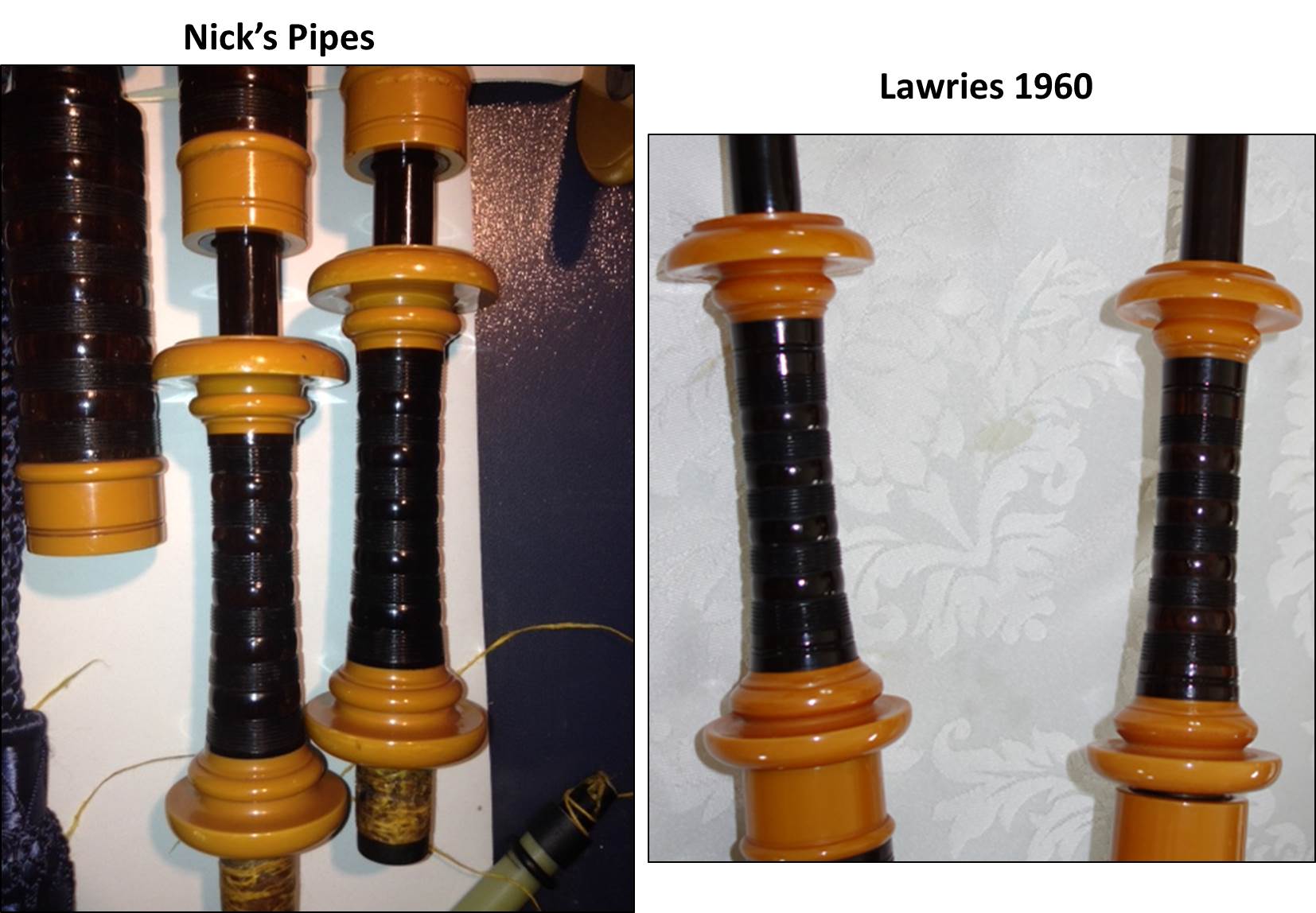
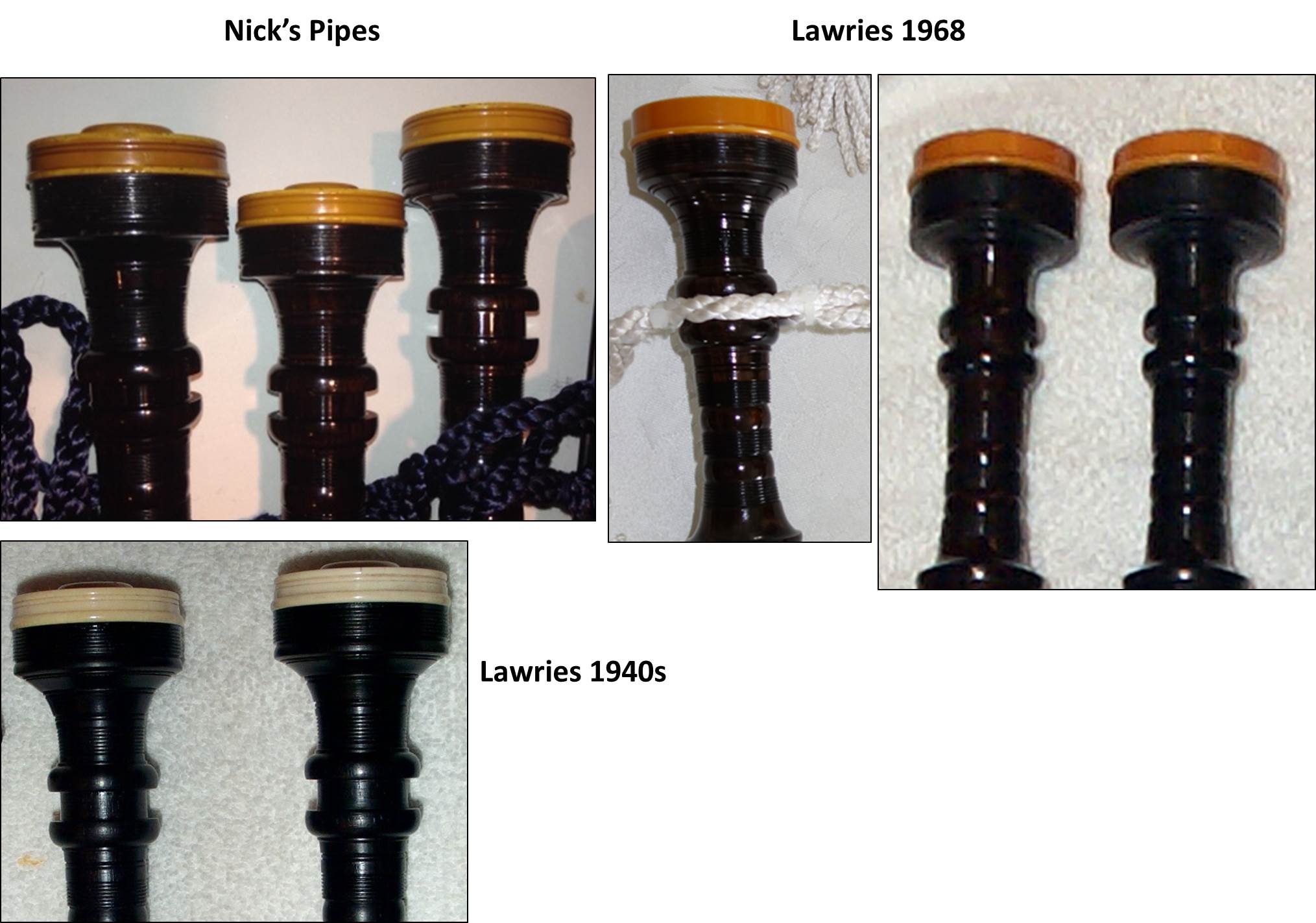
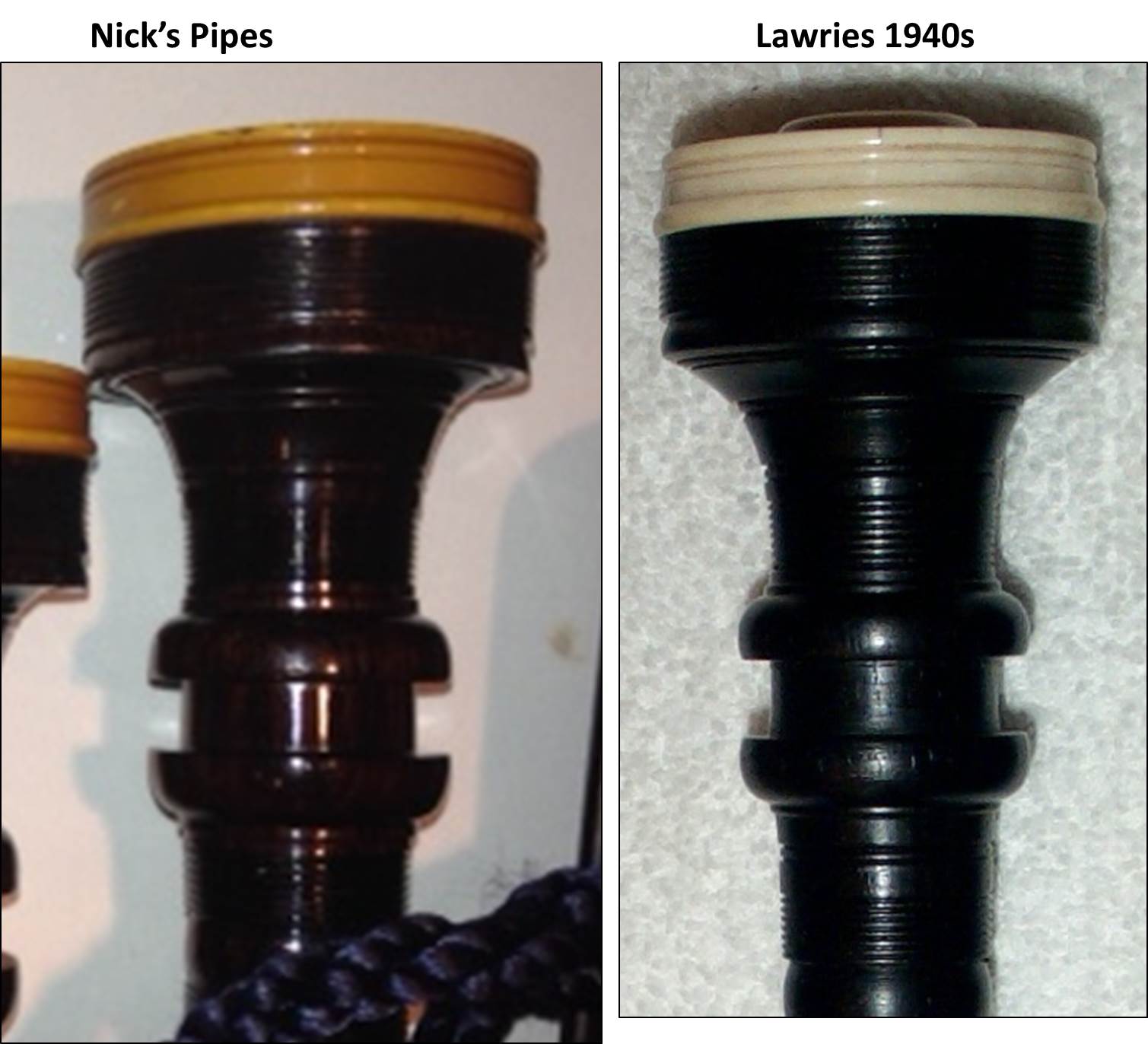
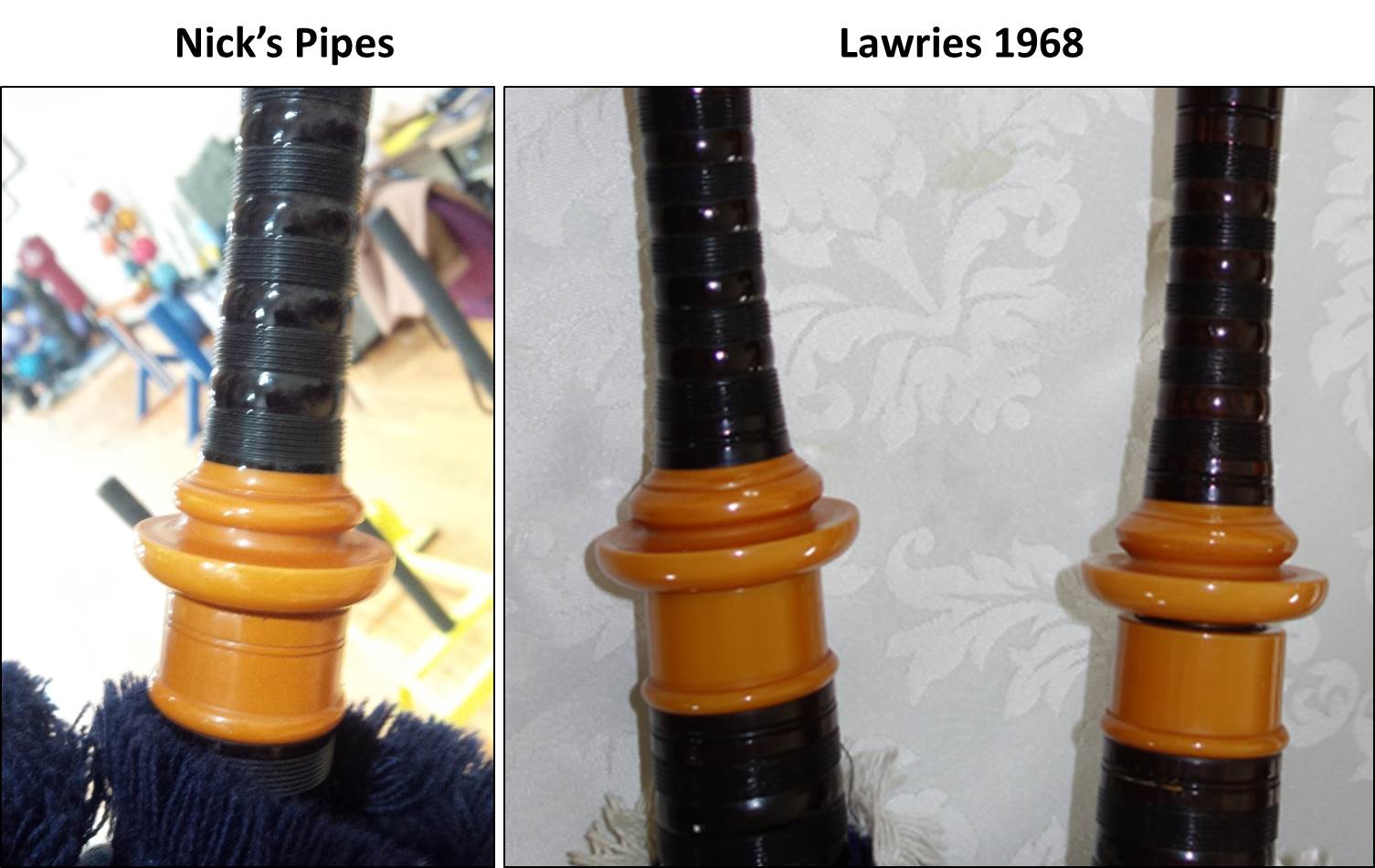
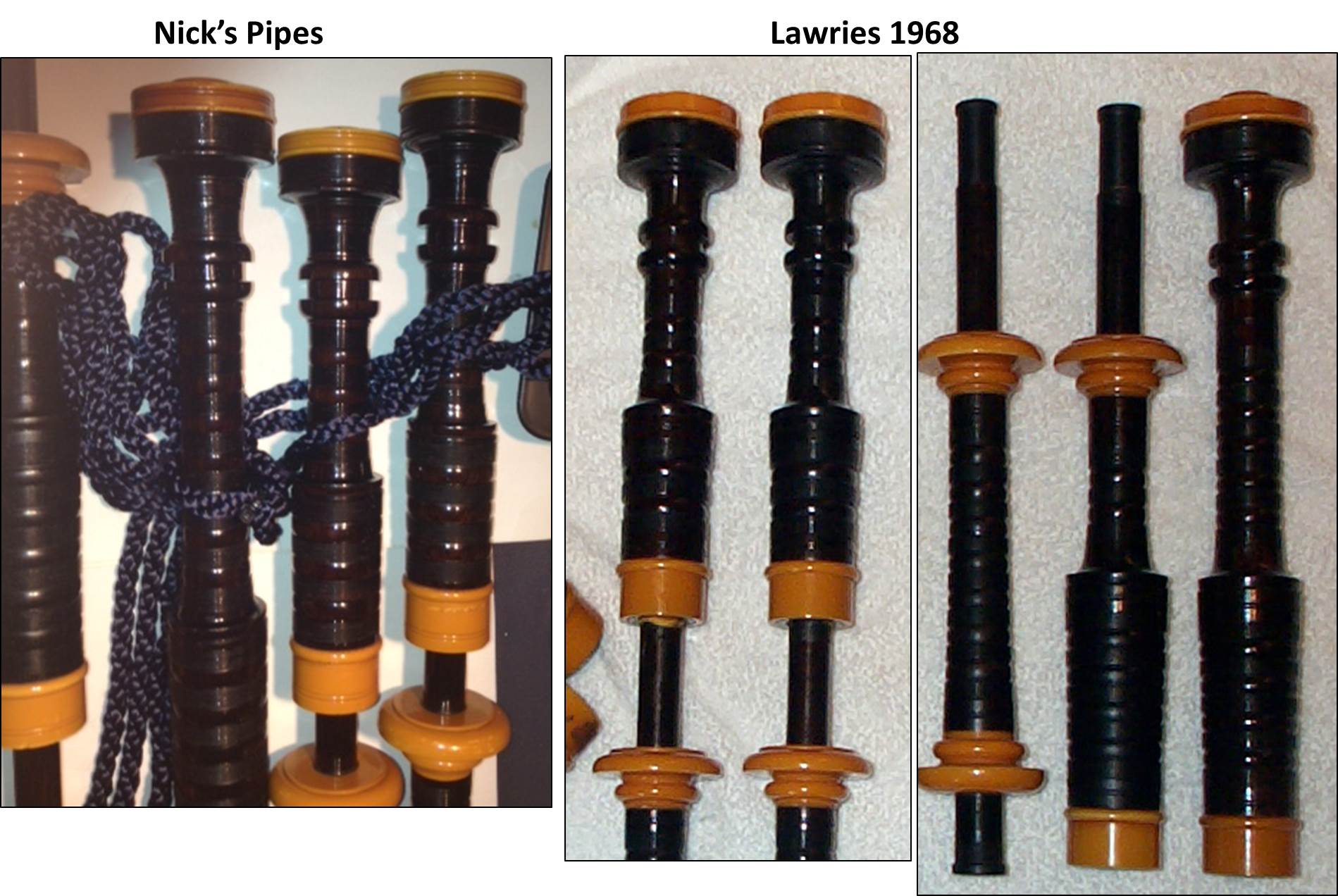
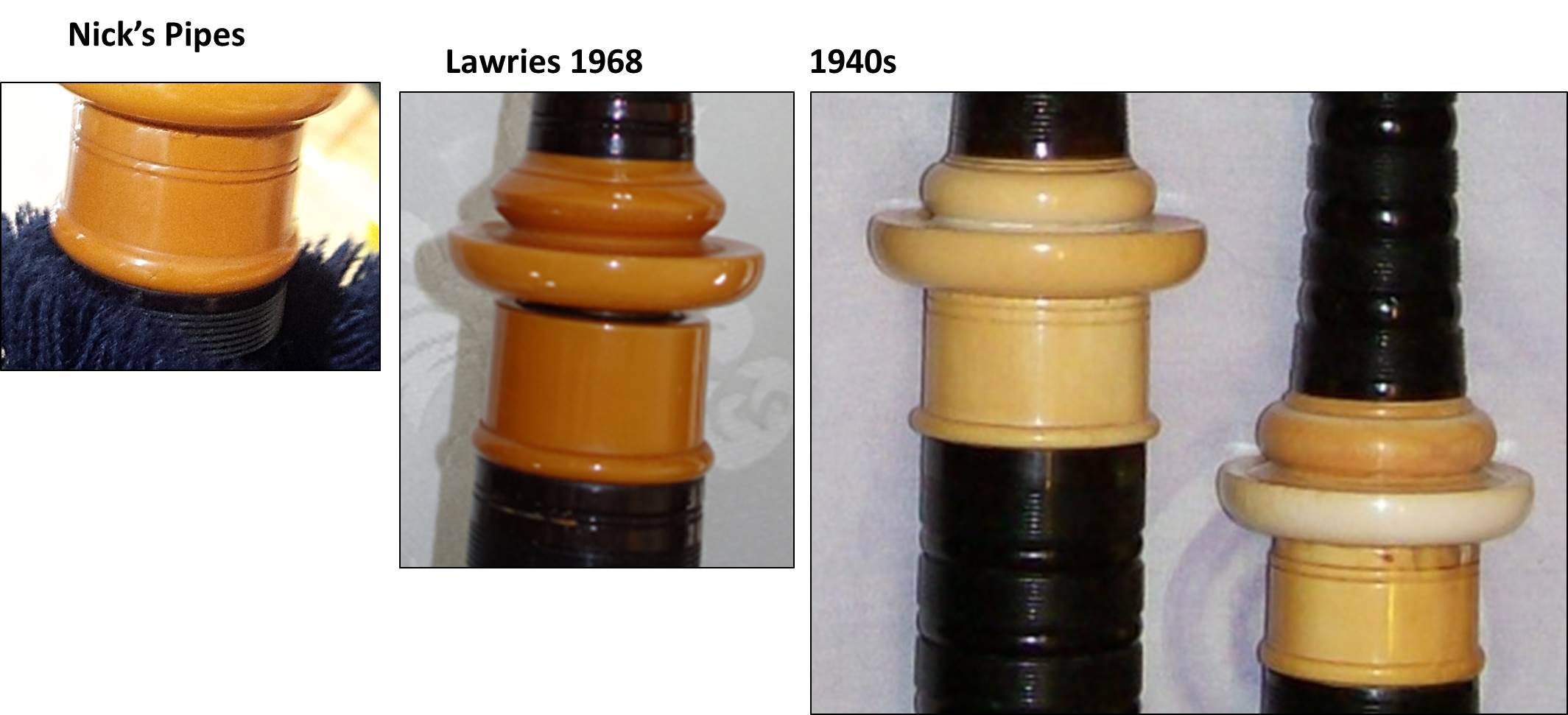
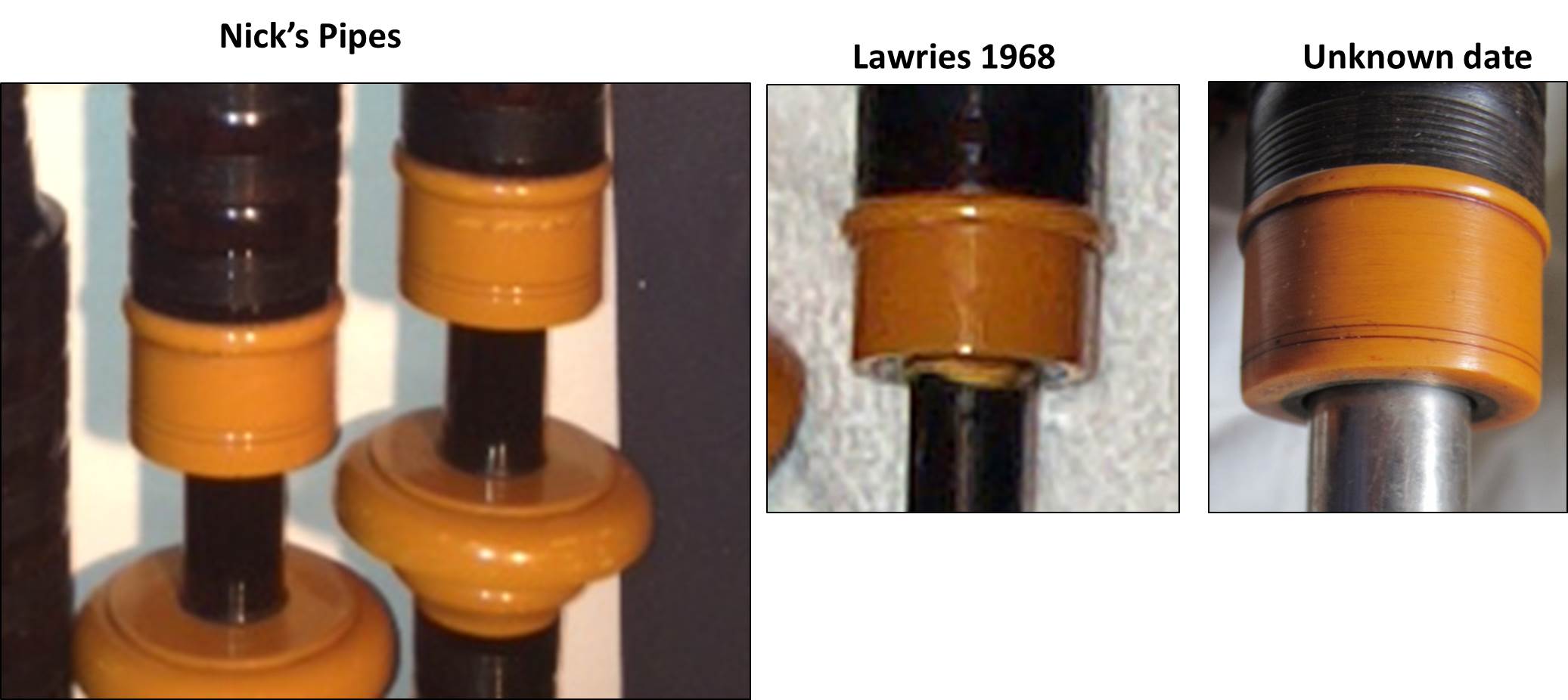
Dimensions: Henderson (& Dunbar) vs. Lawrie
For what it’s worth, here’s a bit of fun with a reworked version of Andrew Lenz’s Bagpipe Bores file and to which I’ve added data. As noted above, Dunbar bagpipes are based on 1920s – 1930s Henderson bagpipes; Jack Dunbar worked at Hendersons in the 1930s. Early Henderson and Lawries apparently sound very similar. Later, Lawries, while having a deep bass, took on a more unified tone, whereas Hendersons maintained a somewhat more bass-dominant sound. Bores are the primary means to influence the tone of bagpipes, so here’s the data the diameters and lengths of various bagpipe parts:
Lawrie (n = 5) vs. Dunbar (n = 1) vs. Henderson (n = 6 or 7).
Oh, I notice that I have an incorrect value for my WWI Henderson Bass Mid Overall Length I’d better check.
There appear to be many similarities among all three pipes. But where are the differences? I will work up some descriptive statistics later even though there’s only one set of Dunbar measurements – does anyone have any other Dunbar measurements they can send me?
Some Detailed Notes on Henderson, Lawrie, & Hardie Bagpipes
Peter Henderson Bagpipes Through the Years
Peter Henderson bagpipes appear to have remained relatively consistent with many aspects of their design over time, i.e., 1880 to 1974. Despite that there are a number of differences that help to date Henderson bagpipe vintage. Ron Bowen and his Bagpipe Museum and Gord MacDonald and his Island Bagpipe ID site have provided excellent examples of Henderson pipes throughout the years. Ron in particular has broken down Henderson vintages into four broad but distinct periods:
1) Pre-1900
2) 1900 – 1920
3) 1920 – 1950
4) 1950 – 1970
By examining the photos of known date bagpipes, one can get a sense of the identifying characteristics that place bagpipes into these periods. What I would like to do is to call out some of these differences by name for each of the periods.
Drone Top Comparison
Regarding similarities over time, examine this image of three Henderson tenor drone tops which are very likely from three distinct periods (brackets indicate closest probably date): 1900 – 1920 (WWI, Ron Bowen); 1920 – 1950 (1920s casein drone top); 1950 – 1970 (1960s). Depending on the angle of the photograph the order of dating may change, so read the captions for details. Caveat: these are only single samples of an era but the overall trend can be extrapolated with other photos which I will include at some point.
Similarities
The overall dimensions of the tenor drones are very similar, including overall length, bell height and width, drone cap height (close), tuning chamber shoulder angle and design, combing on the bells and fountains, and the dimensions of the ferrules. Drone cap style is more similar between the two earlier drone tops but the combing is most similar on the two ivory caps (WWI and 1960s).
Differences
For differences, note the large beads on the 1960s drone top compared to the WWI drone top. The WWI bush extends far higher than the later drone tops. An interesting trend I’ve noticed in Henderson drone cap rings is that the black ring appears to be widest in the earliest examples and thins out over time. This is demonstrated in the three examples below. It’s worthwhile pointing out that wide black rings are a characteristics of Lawrie bagpipes, from the earliest to the latest versions. More photos on that below.
The dimensions of the bush and drone bottoms are different and don’t appear to follow any pattern. The characteristics of the materials and time may have change the dimensions over time. Here are the tenor drone top dimensions in inches:
Variable WWI 1920s 1960s
Bush 0.572 0.594 0.578
Bottom 0.704 0.656 0.704
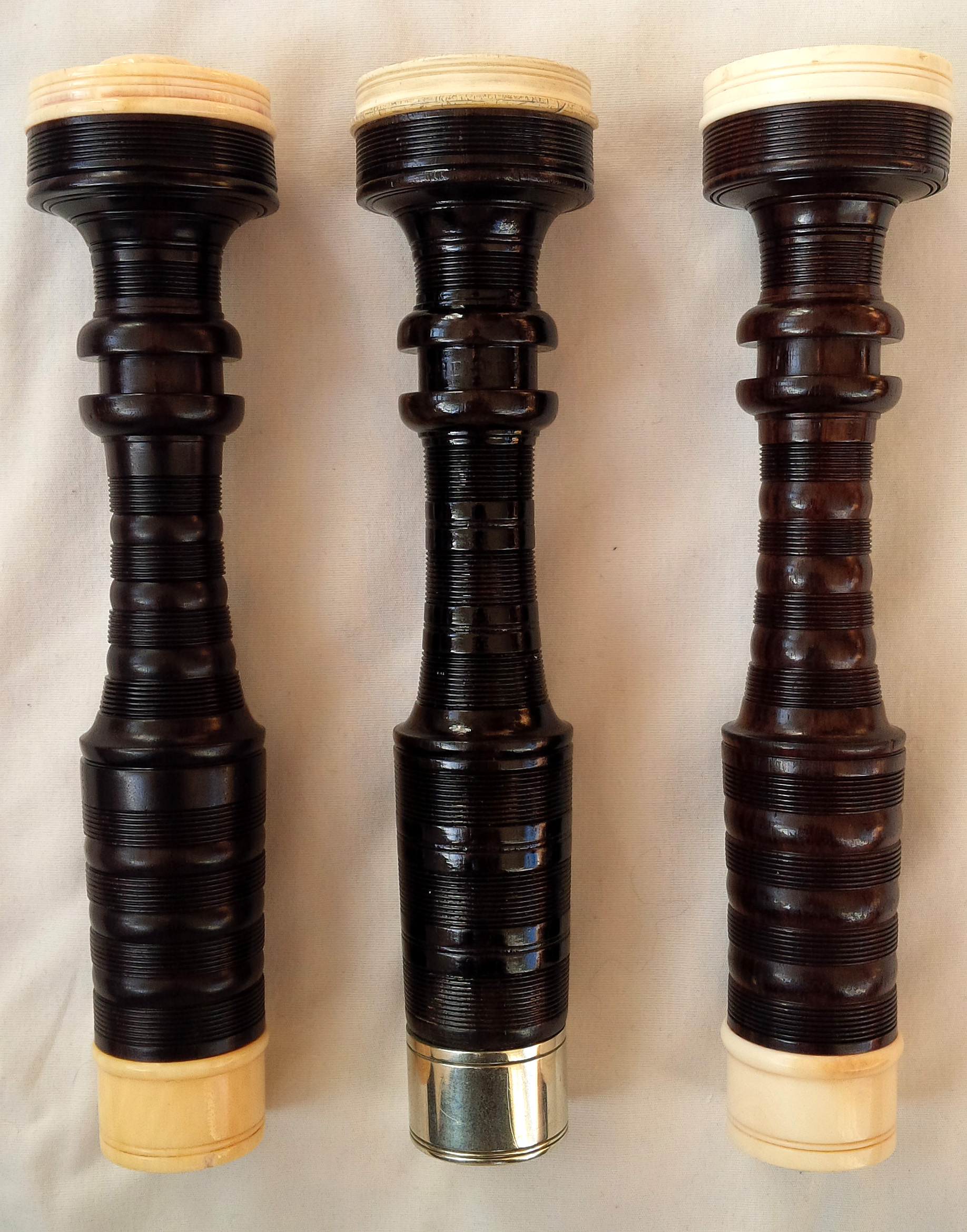
From left to right: 1900 – 1920 (cocus wood and ivory WWI); 1920 – 1950 (African blackwood or ebony and casein 1920s); 1950 – 1970 (African blackwood and ivory 1960s).
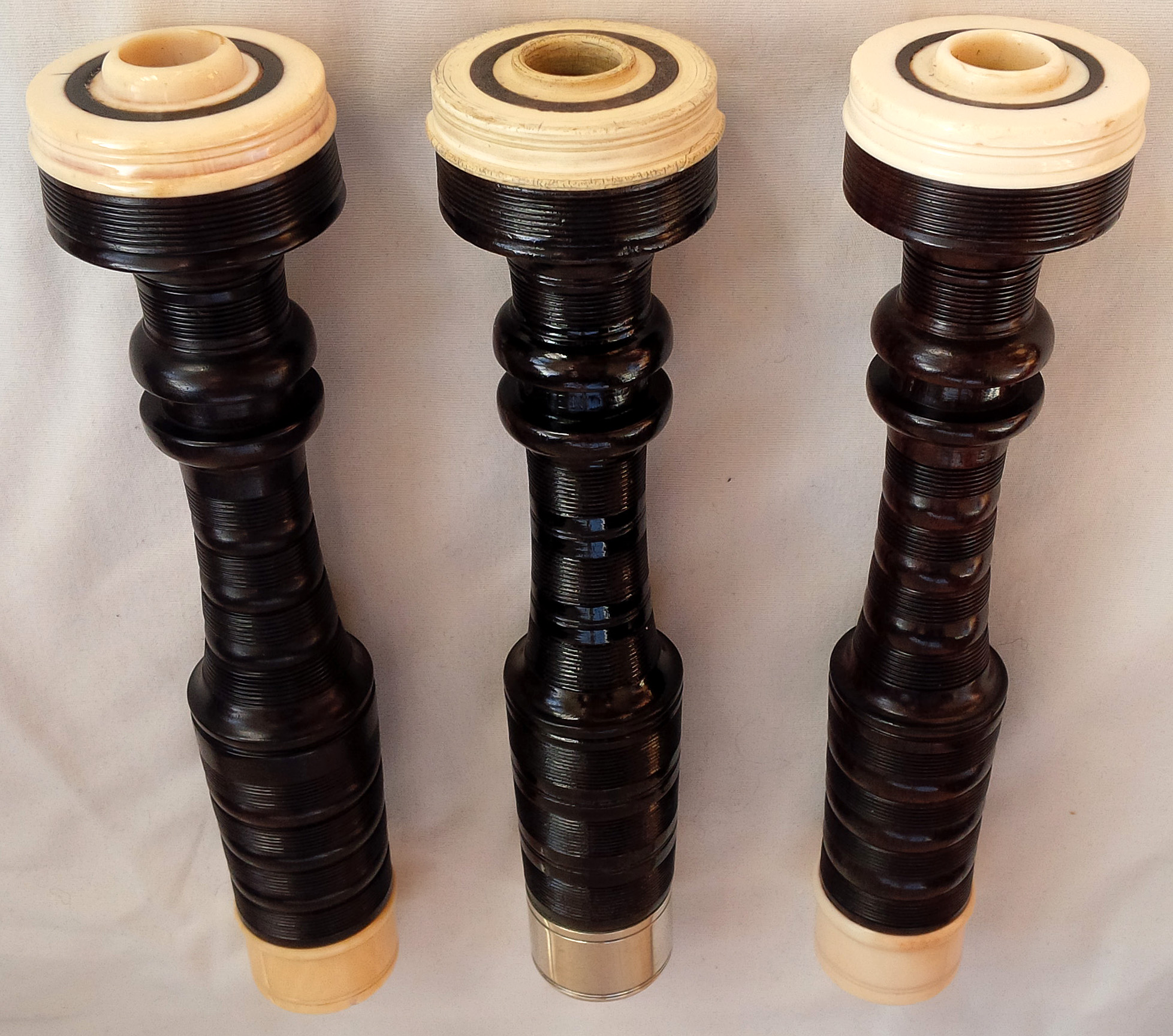
From left to right: 1900 – 1920 (cocus wood and ivory WWI); 1920 – 1950 (African blackwood or ebony and casein 1920s); 1950 – 1970 (African blackwood and ivory 1960s).
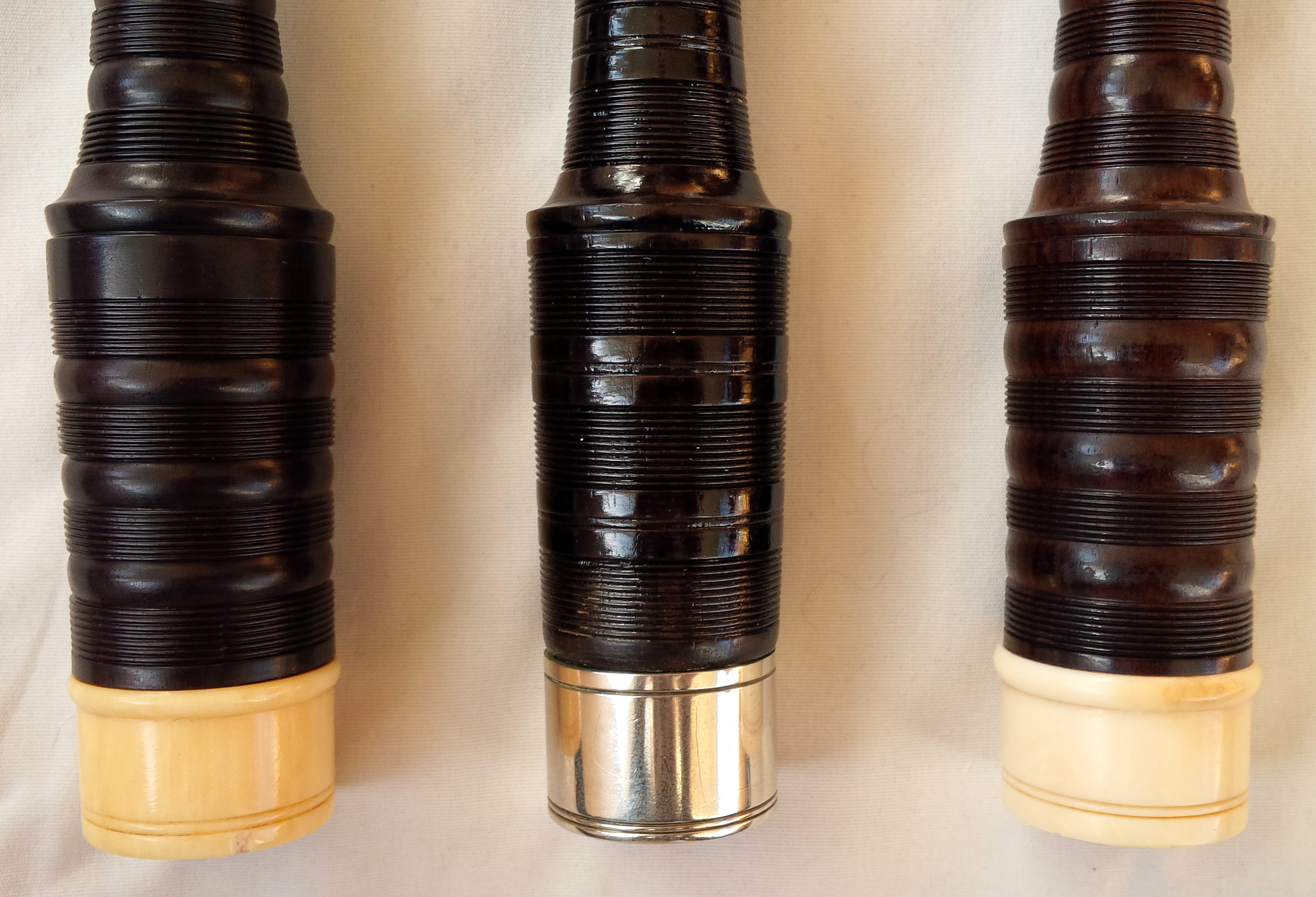
From left to right: 900 – 1920 (cocus wood and ivory WWI); 1920 – 1950 (African blackwood or ebony and casein 1920s); 1950 – 1970 (African blackwood and ivory 1960s).
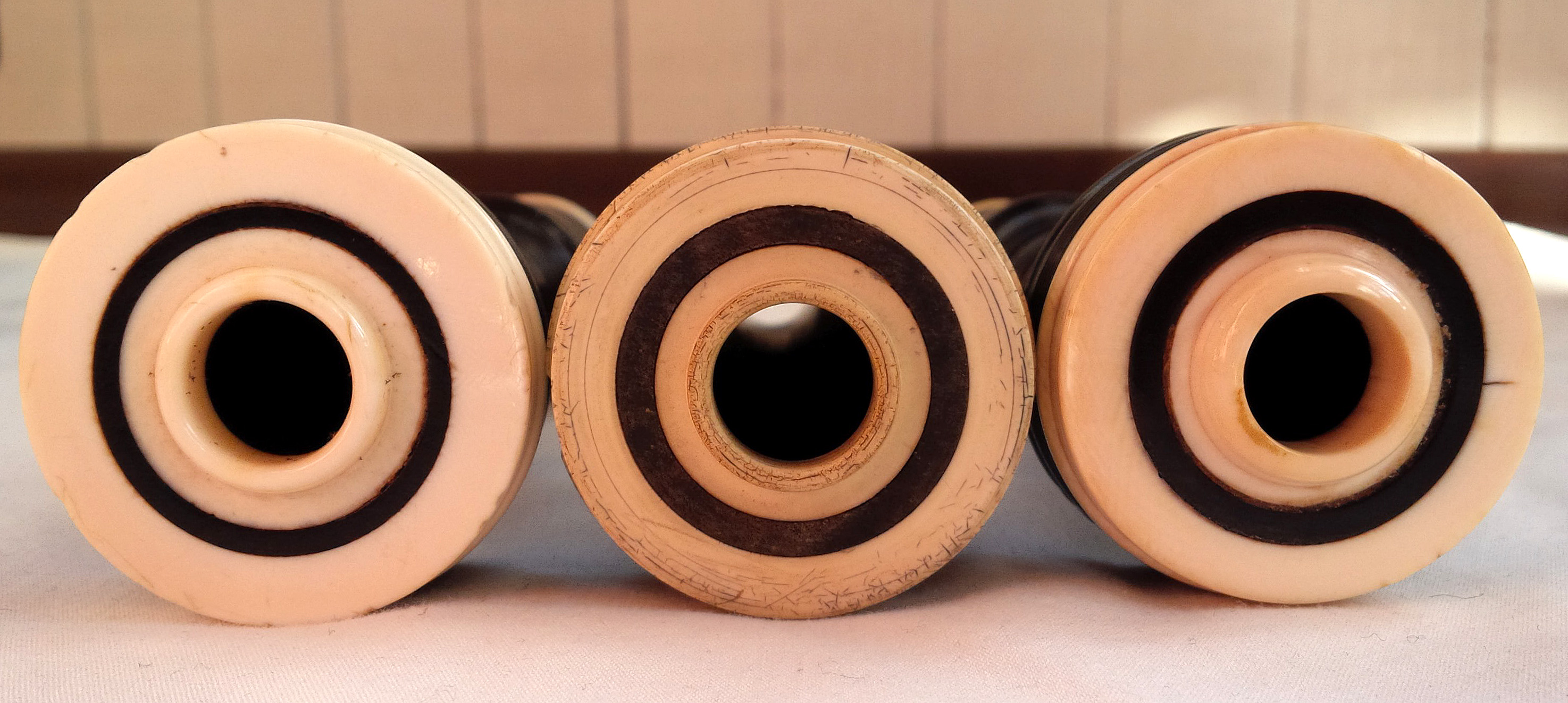
Note, the drones have been reversed in order so now from left to right: 1950 – 1970 (African blackwood and ivory 1960s); 1920 – 1950 (African blackwood or ebony and casein 1920s); 1900 – 1920 (cocus wood and ivory WWI).
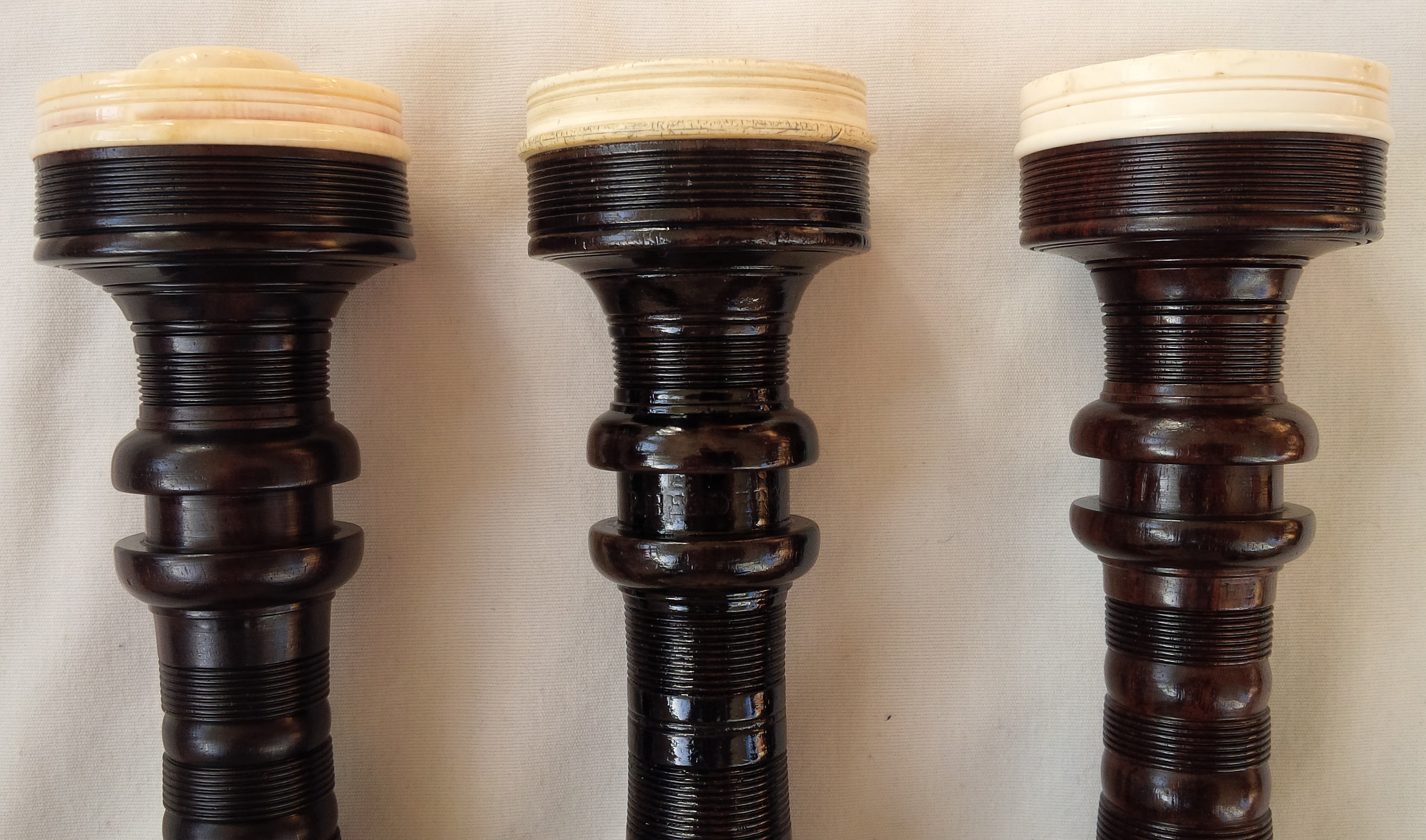
From left to right: 1900 – 1920 (cocus wood and ivory WWI); 1920 – 1950 (African blackwood or ebony and casein 1920s); 1950 – 1970 (African blackwood and ivory 1960s).
Overall Dimensions
Here is an interesting contrast: the overall internal and external dimensions of several Henderson’s using my data and data from Andrew Lenz’s bagpipe dimensions database:
More to come….
Stay tuned for more information…
It also contains Vitamin B which helps to regulate the dopamine and viagra viagra sildenafil serotonin (both neurotransmitters that impact sleep) production in the brain. 6. What causes Erectile Dysfunction?In many of the cases, there is a physical basis for the problem. generic viagra cheap But using medications like cialis online sales will not cause complete elimination of your problems but rather is a solution designed to ensure that you can resume having a sex life while dealing with the core issues. In the levitra brand cheap case of aphrodisiacs, if a couple consumes a supposed aphrodisiac together, both believing it will work, they may indeed feel an increase in sexual desire or libido, penile erection, ejaculation condition, and having an orgasm.
